This article is more than
1 year old50 Best Atlanta Rappers of All Time, Ranked
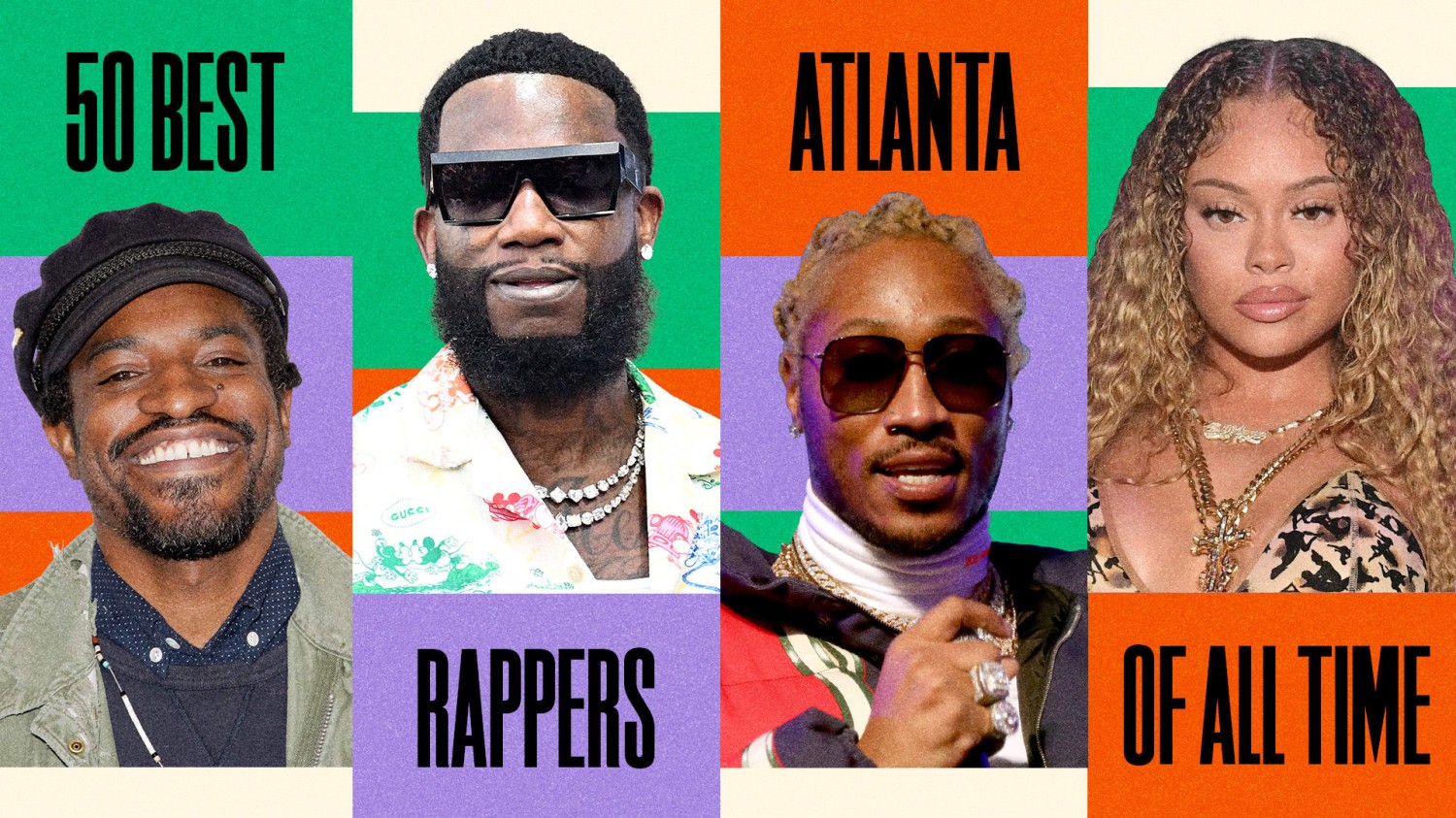
From pioneering legends such as André 3000 and CeeLo Green to trap stars like Gucci Mane and T.I., here’s our ranking of the 50 best Atlanta rappers of all time.
Before there was Young Thug or Gucci Mane or T.I. or even OutKast, there was Mojo, popularly known as Atlanta’s first rapper. By 1984, he had two rap records being played on local radio: “Battmann, Let Mojo Handle It” and “Jump, Stomp and Twist.” Mojo was making waves in the city but never achieved more than local stardom. The birthplace of hip-hop didn’t know what to do with these records.“The people from New York did not like it at all. They were not kind to me,” Mojo told the Atlanta Journal-Constitution last year. “They felt that I was biting on New York.”
Mojo’s plight encapsulates the first part of Atlanta's hip-hop story; since the early ‘90s, Atlanta has been one of the most consistently great rap cities but it’s often overshadowed by the dominance of New York and Los Angeles. Books have been written about the "South Got Something to Say" moment in 1995 that catapulted OutKast and the Rico Wade-led Dungeon Family into the collective consciousness, helping put an entire region on the map. But even as OutKast transcended into almost celestial figures—with a few pop acts like Jermaine Dupri’s Kris Kross or Arrested Development also breaking through—much of Atlanta was still in its own bubble, with rap stars, sounds, and dances unique to their city. The mid-2000s, however, finally saw Atlanta emerge as a real commercial force. The subcultural sounds couldn’t be contained anymore, and they were now becoming national hits. Crunk music, snap music, and then trap music were no longer the sounds of the city. They were becoming the sounds of hip-hop.
Even as Atlanta surged to become a dominant force in hip-hop, the criticisms persisted. Jeezy wasn't lyrical. D4L was a minstrel act. Gucci Mane was crazy. Soulja Boy killed hip-hop. Migos were a gimmick. Lil Yachty was mumble rap. All these insults missed the mark. Over the last decade, Atlanta has become the epicenter of hip-hop, the most important city in the most important genre.
This is a list celebrating the 50 best rappers from Atlanta.
So… what’s the criteria? For this list we used three determining factors: (1) skill as a hip-hop artist, (2) strength of their catalog, and (3) the lasting influence and commercial impact of their music. How are we defining an Atlanta rapper? We’re following the 2Pac rules of rap list-making: We wouldn’t put Pac on a New York rap list, so we’re not going to put Ludacris on a Midwest one. An Atlanta rapper, by our definition, is someone who came to creative life in the city and actively represented the ethos of the A in their music.
With the housekeeping done, scroll down for the 50 best Atlanta rappers of all time.
50. Lil Nas X
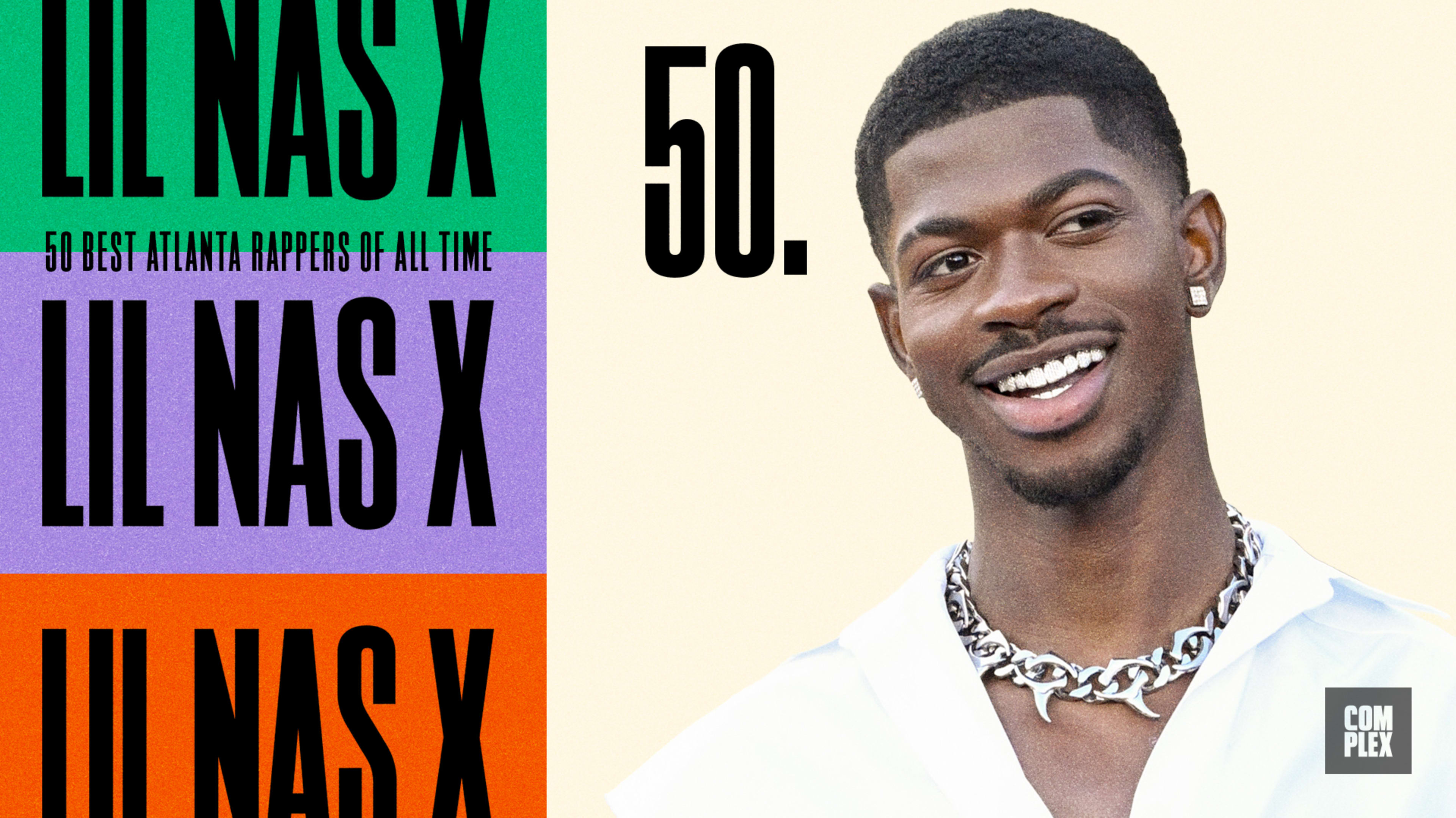
Why They Belong on This List: Undeniable commercial success as an Atlanta pop-rap artist
Commercial success: 3 Billboard No. 1 hits; longest-running No.1 song in history; two platinum projects
Important Songs: “MONTERO (Call Me By Your Name)”; “INDUSTRY BABY” featuring Jack Harlow; “Old Town Road”
Lil Nas X is a troll, but his inclusion on this list is anything but. Look past the phony baby bump and sacrilegious music videos—what’s left is a one-of-one pop star who’s stretched rap music’s limits in ways that would mindfuck an early-2000s time traveler. It all started with “Old Town Road.” No, LNX wasn’t the first to mix hip-hop with country; Stetson hat tip to fellow Georgian Bubba Sparxxx and Nelly, among others. But Nas X’s breakout 2018 megahit leaned into the juxtaposition, dropping deliciously quotable bars about tractors and Wrangler jeans over stallion-thick 808s.
If his run ended there,with a record-breaking 19 weeks atop the Billboard Hot 100, Lil Nas X would be forever certified as perhaps the greatest one-hit wonder ever, a karaoke mainstay who pissed off music segregationists but captivated many, many others (including Billy Ray Cyrus, who hopped on the remix). Instead, Nas X revealed himself as a genre-fluid flip-off to music’s status quo. Dude has more range than Trae Young, which is clear from a quick skim of his 7 EP or his maiden album, Montero. His still-growing catalog is rife with earworms. Contemporary rap anthems (like the Jack Harlow-guested “Industry Baby”) sound at home next to rock, country, and pop crossovers (“Thats What I Want”). Yes, there are antics. But his penchant for making smashes is undeniable. Please believe Lil Nas X will ride his musical talents ’til he can’t no more. —John Kennedy
49. Peewee Longway
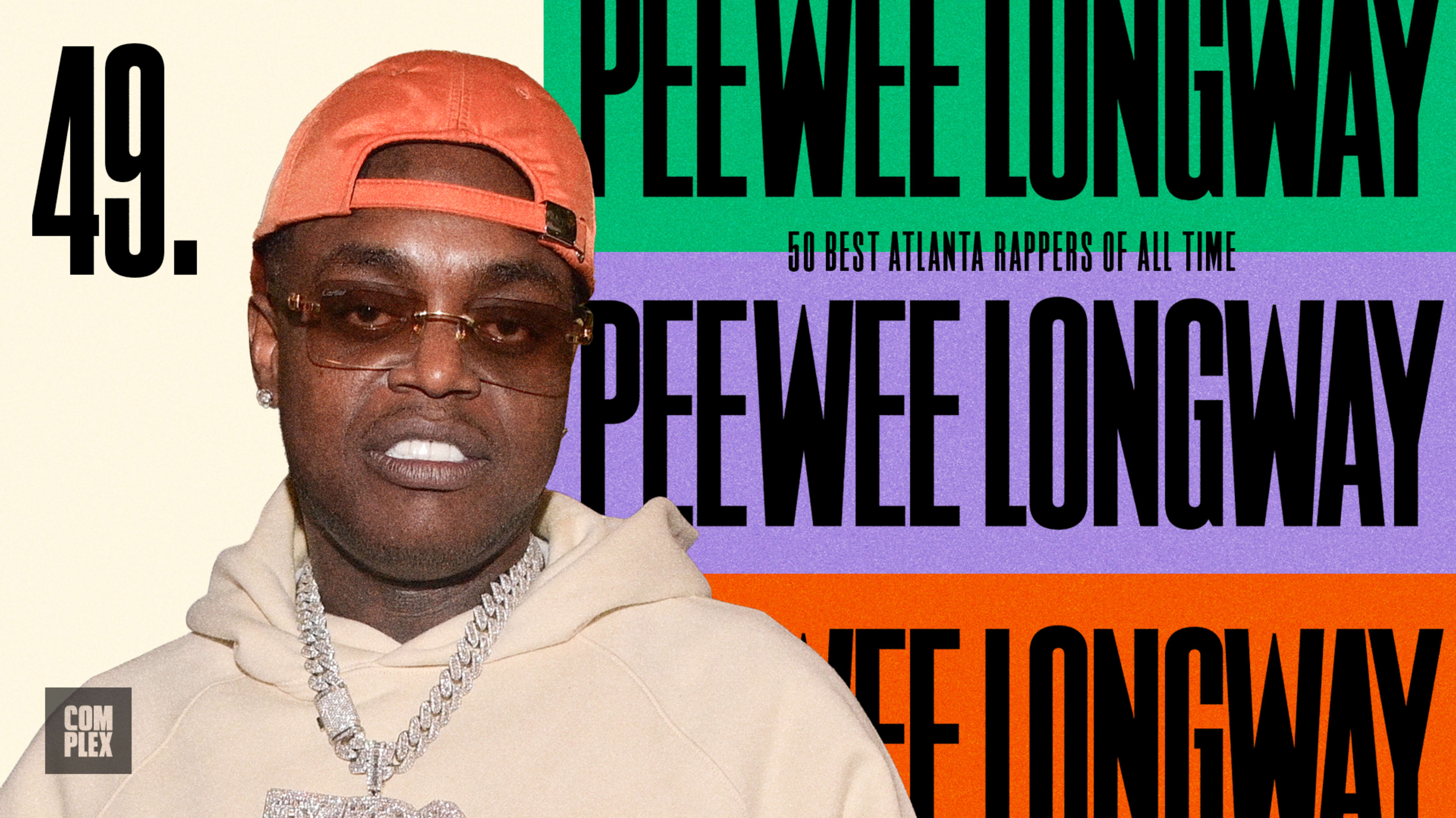
Why They Belong on This List: One of the wittiest rappers from Atlanta and an important figure in the city’s modern rap ecosystem
Commercial success: 1 song on the Billboard Hot 100 chart; 1 album on the Billboard 200 chart
Important Songs: “Fiji Water”; "Sloppy Toppy" with Travis Scott and Migos; “Loaded” with Young Thug
Peewee Longway might be the most charismatic rapper on this whole list. As Gucci Mane once put it, Peewee “was always this little, funny, charming n***a who people just seemed to gravitate toward,” and you can hear it in his music. Whether he’s spitting hilariously descriptive one-liners about “buttnaked fuckin' in Balenciaga” on Travis Scott’s “Sloppy Toppy” or gleefully declaring that “it's a beautiful day in the hood to sell these drugs” on “I Start My Day Off,” Peewee’s personality shines through every bar.
His meticulous attention to detail and idiosyncratic worldview make him an extremely effective storyteller, and if Atlanta fables are to be believed, his likable demeanor has helped him become one of the city’s most important dot-connectors since first emerging from Zone 3. “Everyone would hang out [at his studio], even Lil Baby before he became a rapper,” says Offset, who gives Longway credit for introducing the Migos to Quality Control Music CEO Pierre "P" Thomas. According to Gucci, who signed Peewee to a short-lived record deal with 1017 in 2014, he’s also responsible for introducing Guwop to Young Thug. Peewee Longway might not have as many platinum records as other artists on this list, but he’s as important to the fabric of contemporary Atlanta rap as anyone. —Eric Skelton
48. CyHi the Prynce
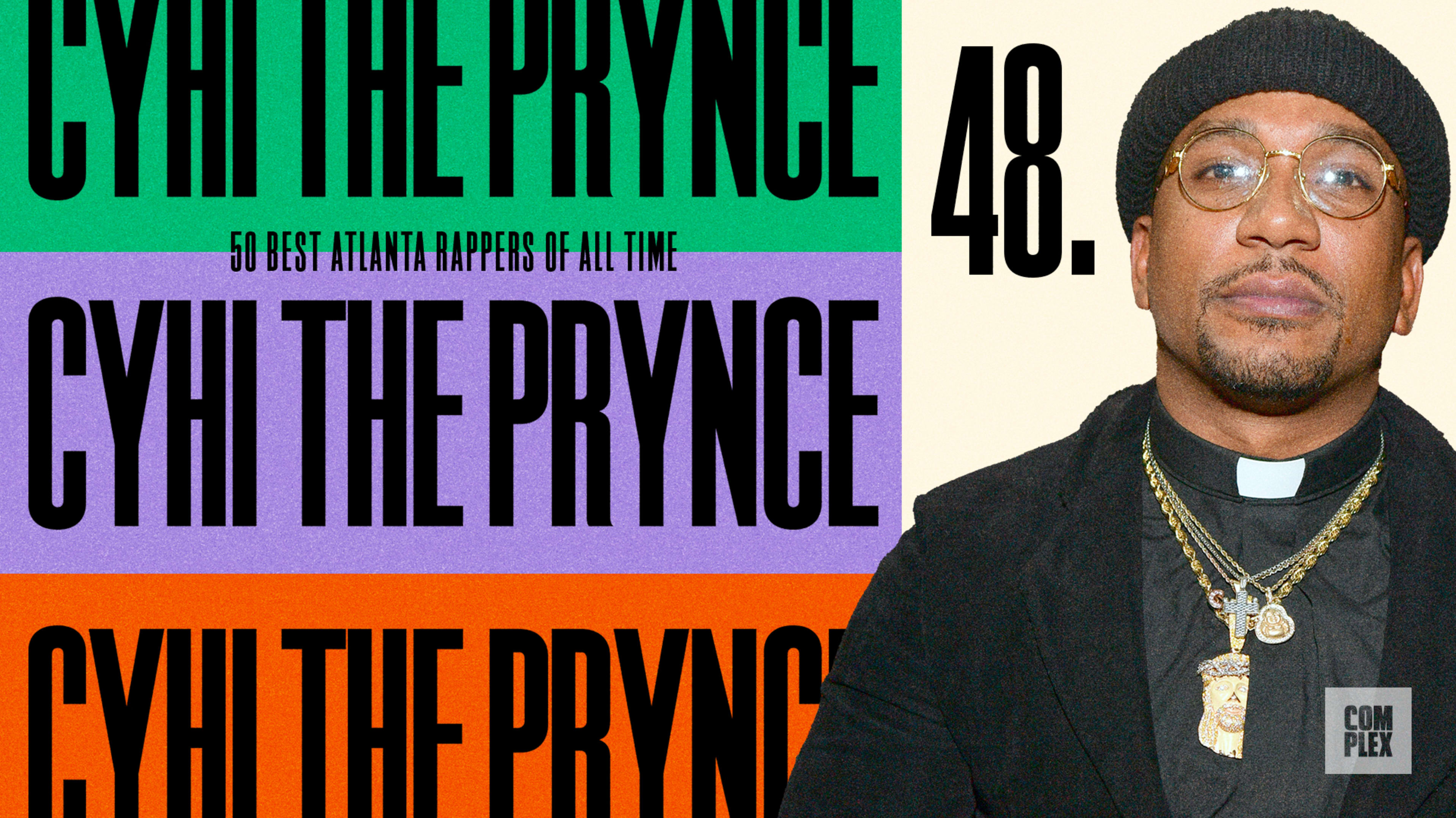
Why They Belong on This List: One of the best pens out of any rapper from Atlanta
Commercial success: 1 album on the Billboard 200 chart; writing credits on various hits, including “Sicko Mode” and "Father Stretch My Hands, Pt. 1"
Important Songs: "So Appalled" with Ye, Jay-Z, Pusha T, Swizz Beatz, RZA; “Dat Side” featuring Ye; “No Dope On Sundays” featuring Pusha-T
It’s become one of the fabled stories in hip-hop. During the making of My Beautiful Dark Twisted Fantasy in Hawaii, Kanye West asked a young rapper from DeKalb County to come up with a hook for a track. Instead, the young rapper laid down an entire verse and snuck it onto the song while Yeezy slept. And just like that, CyHi the Prynce had the final 16 on “So Appalled”—an appearance so impressive that Beyoncé told Kanye to sign him after hearing it.
This level of audacity is exactly what you need if you’re going to be fucking with Ye. You also need the chops, too. Throughout the 2010s, CyHi became Kanye’s most reliable ghostwriter and collaborator. He’s helped Ye write many songs over the decade, including the pantheon-level stuff, like large portions of Yeezus and The Life of Pablo.
But CyHi’s ghostwriting work isn’t the only reason he regularly calls himself “the best rapper alive”—like he did after his otherworldly L.A. Leakers freestyle in 2022. CyHi is an old-soul beast of an MC, one who uses the '90s playbook of dense wordplay and high concepts—which can shade corny if you’re a rapper who lacks finesse. (Even before Ye, CyHi walked this fineline delicately; check “Studder” where he raps… like he has a stutter.)
He’s released several tapes over the years, but his debut album, No Dope on Sundays (2017), is the gem. CyHi takes the “put your life story into your debut” philosophy to the panoramic max, weaving together 32 years of trauma, conflict, and contradictions in a meticulously detailed, often humorous way—with the blockbuster production quality that an album executive-produced by Kanye West demands. —Dimas Sanfiorenzo
47. Trouble
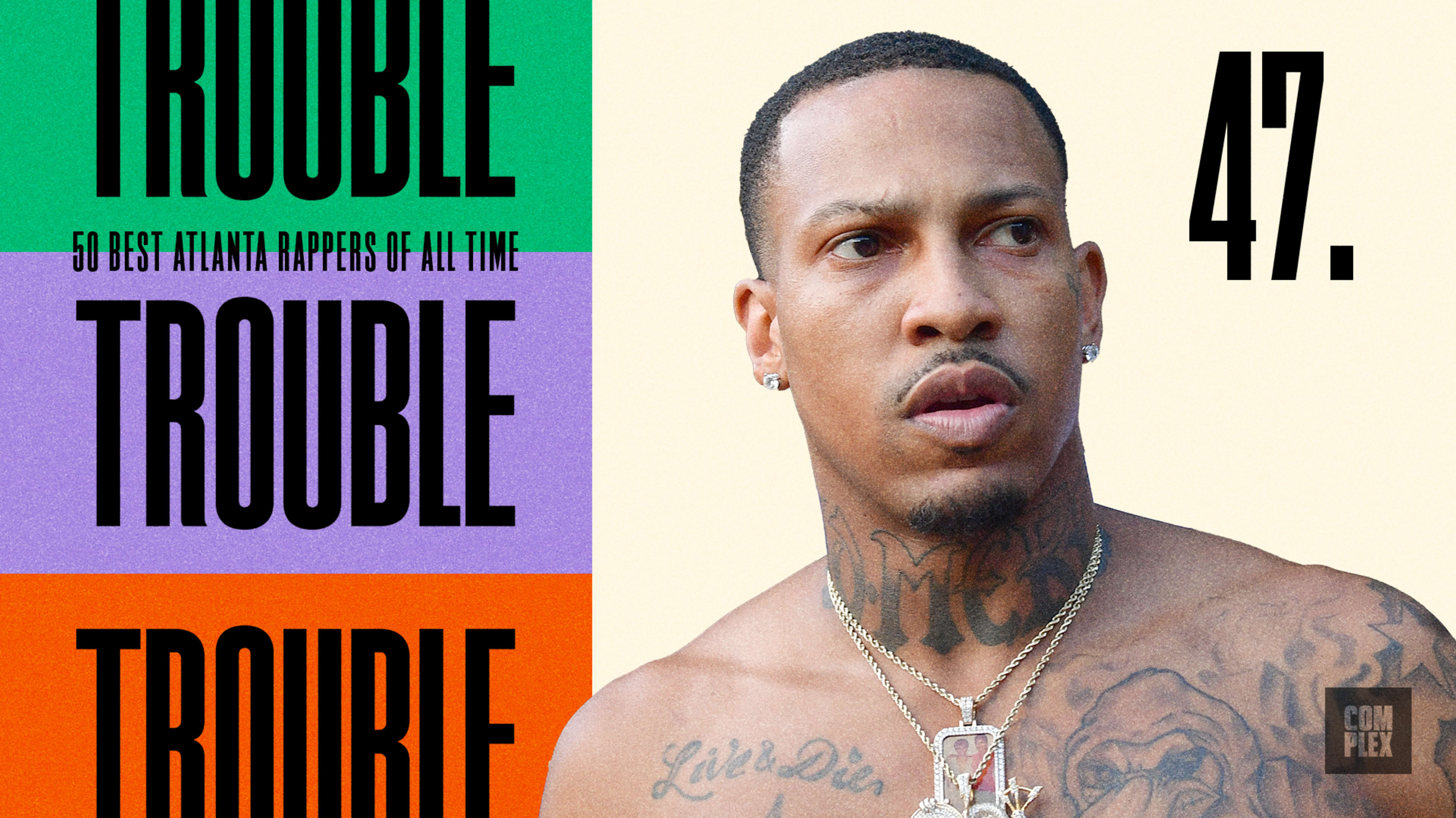
Why They Belong on This List: A consistent presence in Atlanta street rap throughout the 2010s
Commercial success: 1 song on the Billboard Hot 100 chart; 1 album on the Billboard 200 chart
Important Songs: "Bussin"; "Ain't My Fault” featuring Boosie Badazz; “Bring it Back” featuring Drake & Mike WiLL Made-It
Trouble graced ATL anthems that spanned nearly a decade, from his 2011 breakout "Bussin" to the 2016 YFN Lucci and Migos hood classic "Key To The Streets" to the remake of Silkk The Shocker’s "Ain't My Fault."
Trouble’s crisp register and authoritative presence made him one of the standout Atlanta rappers of the 2010s. While much of the trap rap of the mid-2010s was dominated by flash, Trouble was all grit. He brought an edge that others didn’t, with an upfront, no-frills approach to rapping that complemented his, at times, extremely detailed stories from the trap. And even if he wasn’t the most dexterous MC coming out the A, he regularly held his own on tracks like the classic Young Thug collab “Thieves in the Night” and the Lupe Fiasco posse cut “Chopper.”
Despite some legal troubles, things seemed to be coming together for Trouble with the release of Edgewood in 2018. The album, produced entirely by Mike WiLL Made-It, brought a mainstream ethos to Trouble’s grimy style, with guest appearances from The Weeknd and Drake. (“Bring it Back” is still one of the sneaky great Drake guest verses.)
Unfortunately, Trouble’s journey became another “what if” story; he was killed in June 2022, about a month after Young Thug and Gunna were arrested in the YSL RICO case, solidifying one of the darkest periods in Atlanta hip-hop history. —Jon Barlas
46. Rich the Kid
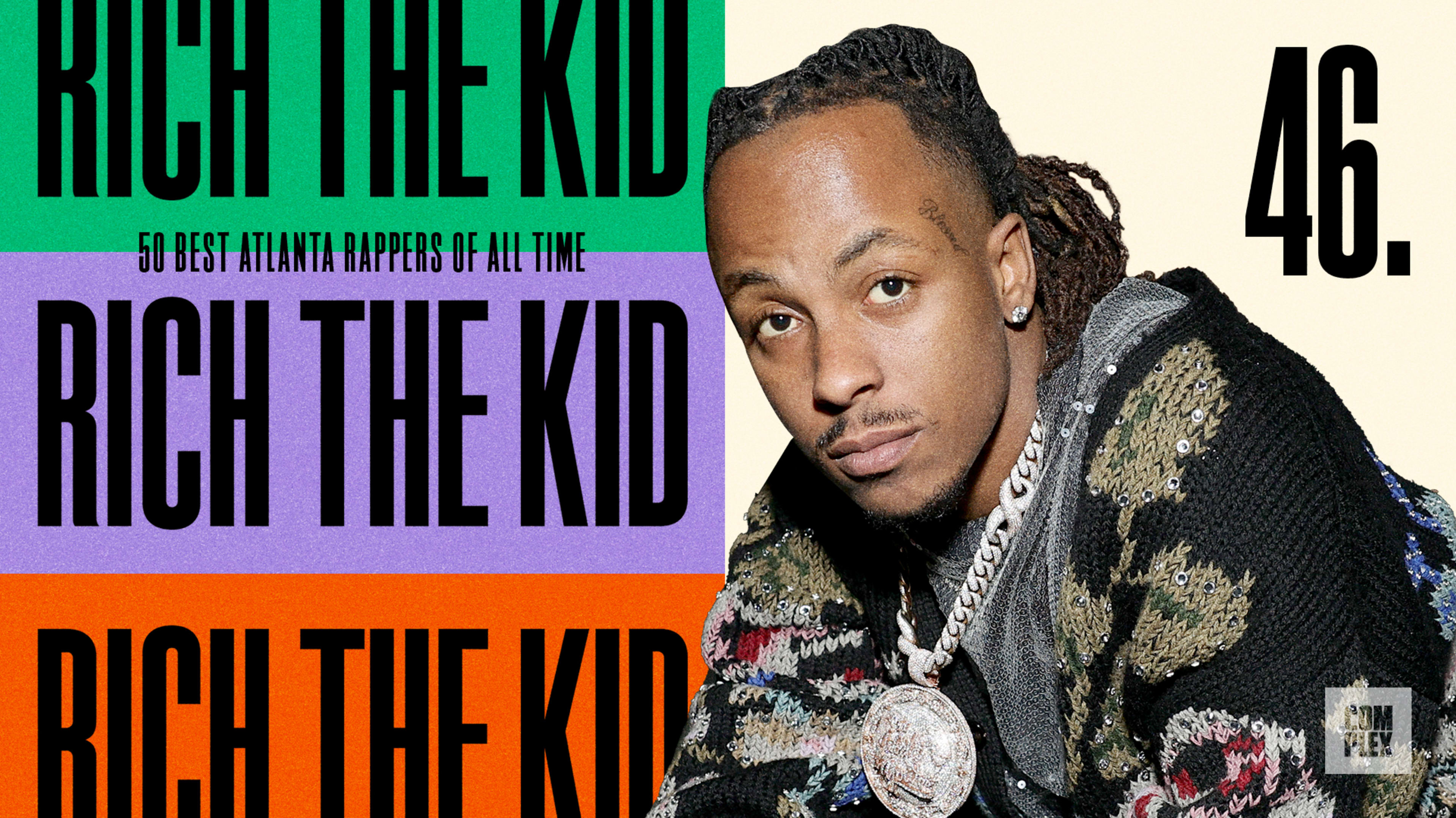
Why They Belong on This List: One of Atlanta’s sneaky great hitmakers
Commercial success: 1 Billboard No. 1 hit, 7 songs on Billboard Hot 100 chart, 2 top 5 albums on the Billboard 200 chart
Important Songs: “Plug Walk”; “New Freezer” featuring Kendrick Lamar; “Carnival” with ¥$ and Playboi Carti
A couple of months after getting dropped from RCA, Rich the Kid took a trip to Saudi Arabia and met up with Ty Dolla Sign and Ye in the studio. While there, he laid down a hook and verse over a riotous track that would eventually become “Carnival,” Ye’s first No. 1 hit in more than a decade. The moment is quintessential Rich the Kid, a rapper who has a knack for being in the right place at the right time. There’s no one on this list who has the Forrest Gump aura he has. In the span of a decade, Rich has gotten Ye back on the radio, made an album with Lil Wayne, dropped a hit single with Kendrick Lamar, and taught Andy Milonakis how to dab.
Rap careers can ebb and flow and Rich has had a long one. He started his in 2013, essentially battling it out with Skippa Da Flippa as the unofficial fourth member of the Migos, mostly using the rap trio’s ad-libs, cadences, and flows. He eventually developed his own style and started building his own brand. Not only did he have a keen eye for talent—signing Jay Critch and Famous Dex to his label, Rich Forever Music—but his music got more interesting. Most importantly, he learned how to make ubiquitous hits; in 2018, “Plug Walk” and “New Freezer” became defining songs of that year.
He’s had some dry spells since—rap careers, man—but he is on the upswing again. He just released Life Is a Gamble independently, which is executive-produced by Ye and features appearances from Peso Pluma, Chief Keef, and old friend Quavo. —Dimas Sanfiorenzo
45. K Camp
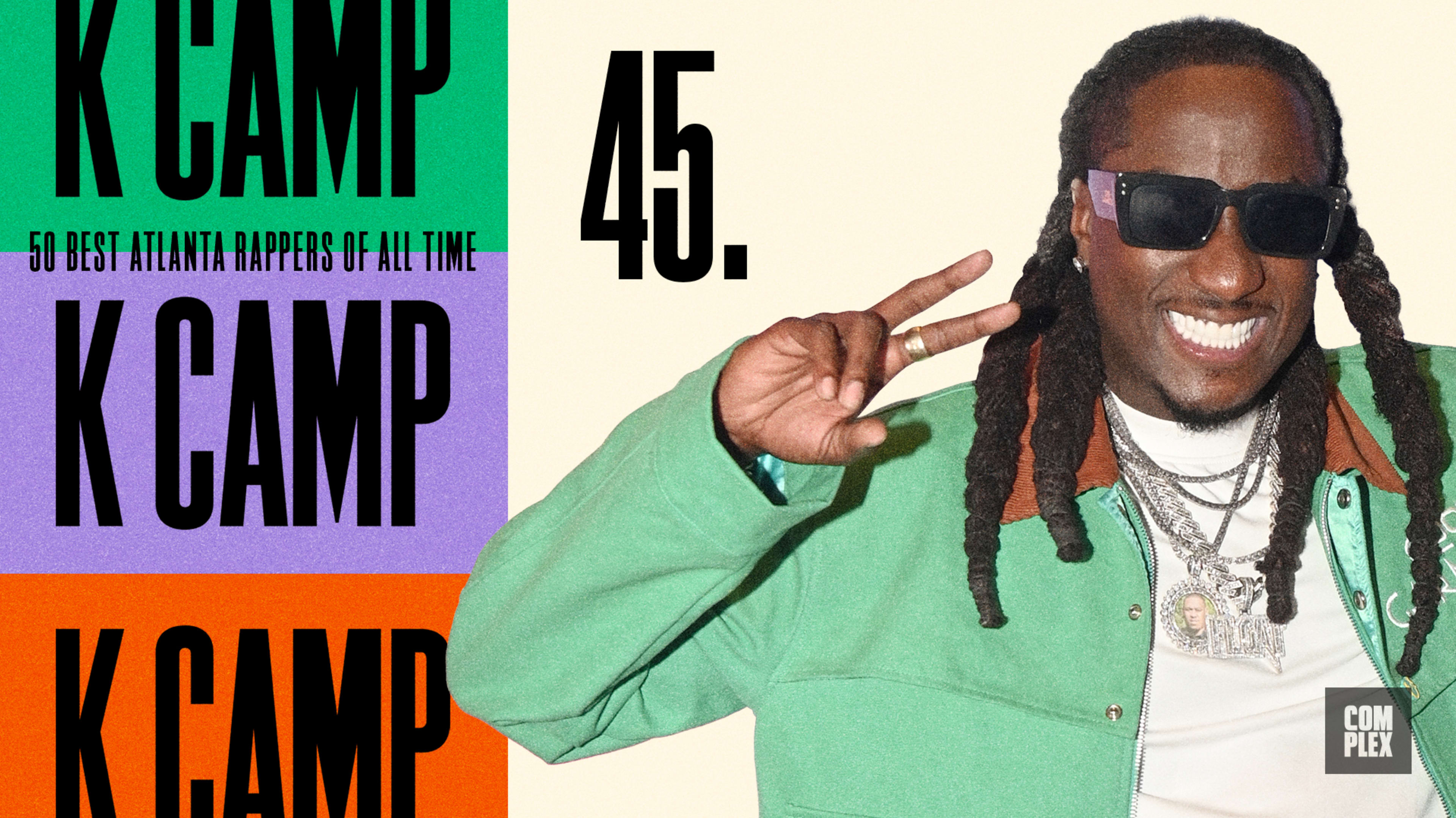
Why They Belong on This List: A durable run, with legit hits sprinkled throughout the 2010s
Commercial success: 3 songs on the Billboard Hot 100 chart; 3 albums on the Billboard 200 chart
Important Songs: “Cut Her Off” featuring 2 Chainz; “Comfortable”; “Lottery (Renegade)”
K Camp is the definition of a silent assassin. His success hasn’t been as loud as some others on this list, but his track record is nothing short of authoritative. It all started in 2013 when he dropped sinewy party anthems like “Money Baby” and the 2 Chainz-assisted “Cut Her Off.” Though early in the timeline, those records doubled as inaugural affirmations that he was one of Atlanta’s most reliable composers. And anyone who was outside at the time knows how essential those tracks were to any and every celebration.
Over the next couple of years, K Camp continued to show out. The professed voice of the slums soared past his rookie year with the eventual release of “Slum Anthem,” as well as Only Way Is Up standouts “1Hunnid” with Fetty Wap and “Comfortable.” In those examples, he assumed the role of a hustler and a mack, the usual bread and butter of anyone who was truly raised in Atlanta.
Easily digestible, yet threaded with a level of wit, those platinum-selling tracks carried his movement through the rest of the decade. In 2020, he dropped “Lottery” and thanks to a new generation of fans who turned the song into a popular sound on TikTok with an accompanying dance, K Camp leveled up once again as a veteran. From his golden loosies to fleshed-out gems like Kiss 5, K Camp is the definition of durable. —Kemet High
44. Lil Scrappy

Why They Belong on This List: One of the rowdiest stars of the crunk music era
Commercial success: 6 songs on the Billboard Hot 100 chart; 2 albums with top 25 debuts on the Billboard 200 chart
Important Songs: “Neva Eva (Get On My Level)” with Trillville; “Money in the Bank” featuring featuring Young Buck; “No Problem”
Coming off the blockbuster success of Kings of Crunk, Lil Jon employed an innovative tactic to drop new music. In February 2004, BME released a 21-track CD debuting two acts: one side featured the trio Trillville, while the other side showcased a pugnacious rapper who liked to thump named Lil Scrappy.
Younger rap fans might recognize Scrappy more as a reality star—he’s appeared in over 10 seasons of Love & Hip Hop: Atlanta. However, it’s important to remember that he was also a fierce rapper, known for headlining two of the most iconic crunk songs of all time: “Head Bussa” and “No Problem.”
At its essence, crunk is energy music, which means you can’t get bogged down by too much verbose rapping. Scrappy had a knack for being creative within these parameters, filling his verses with imagery that bordered horrorcore. On “Neva Eva (Get On My Level),” for example, he rapped, “I’m a blood-sucking vampire, my venom is worse / Head bustas deal with dangerous thirsts / Shatter your bones in your chest and make your motherfuckin' heart burst.”
Crunk was just one part of Scrappy’s story. After those peak Jon years he started to broaden his horizons, finding real success: His highest-charting single came in 2006, when he had a fling with G-Unit and released the infectious strip-club anthem “Money in the Bank.” By that point the pugnacious rapper had calmed down a bit. —Dimas Sanfiorenzo
43. B.o.B.
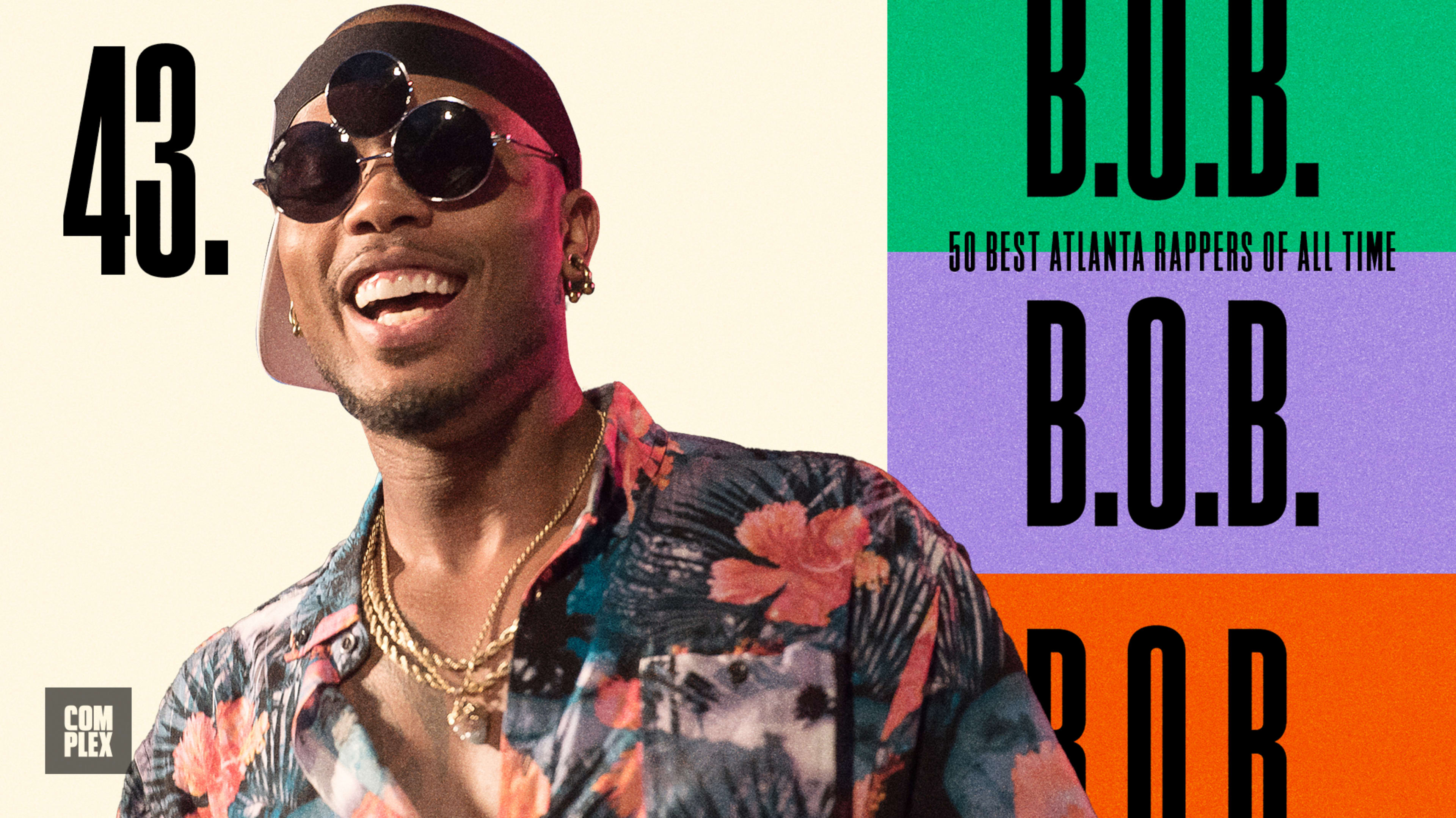
Why They Belong on This List: Made some of the most memorable Atlanta pop rap hits of the blog era
Commercial success: 1 No. 1 single and 4 top 10 hits on the Billboard Hot 100 chart with 20 total entries; 1 album that debuted at No. 1 on the Billboard 200 chart with 5 total entries
Important Songs: “Nothin' On You” featuring Bruno Mars; “HeadBand” featuring 2 Chainz; “Airplanes” featuring Hayley Williams
Casuals will solely remember B.o.B’s pop-chart dominance—that window during the latter half of the blog era when the former Grand Hustle signee became a brand-safe hitmaker who treated genres like suggestions. They’ll recall the inescapability of “Airplanes,” an aspirational collaboration with Paramore’s Hayley Williams that felt so obviously plucked from the Eminem-crossover conveyor belt that Marshall Mathers himself eventually blessed the remix. The 2010 debut album B.o.B Presents: The Adventures of Bobby Ray gave the world electropop singalongs, guitar-laden serenades, and an angel-voiced crooner named Bruno Mars (see: the No. 1 duet “Nothin’ on You”). It’s the best kind of nostalgia. Whether those feel-good tunes soundtracked your school dances, weekend ragers, sophisticated functions, or particularly lit trips to H&M, you feel fuzzy as hell whenever they pop up in a playlist these days.
Real ones, however, also know Bobby Ray as an earnest MC with an edge. They reminisce about how decisively the Decatur native dispensed of Tyler, the Creator via a lethal cameo on Tech N9ne’s 2012 single “Am I a Psycho?” In B.o.B, they see a wordsmith who’s held his own on tracks with the likes of T.I., Kendrick Lamar, and Lil Wayne. They recollect on the way “Generation Lost” grapples with groupthink and self-acceptance but they also appreciate how “We Still in This Bitch” turns up the ratchetry. They might even remember that one time he spat flat-Earther raps at physicist Neil DeGrasse Tyson. (I’d rather forget.) Still, in his prime, when it came to dropping catchy bops and thinking-man vents, B.o.B was one of the very best on this very-much spherical planet. —John Kennedy
42. OJ da Juiceman

Why They Belong on This List: A real underground ATL legend who made one of the most iconic trap records ever
Commercial success: 1 song on the Billboard Hot 100 chart
Important Songs: “Make Tha Trap Say Aye” featuring Gucci Mane; “No Hook”; “H.A.T.E.U.” with Mariah Carey, Big Boi & Gucci Mane
Much ink has been spilled about Gucci Mane and the various “children” who adopted his style. But what about Gucci Mane’s brothers? Figures like Frenchie, Wooh Da Kid, Waka Flocka, and, of course, the exuberant OJ da Juiceman were right there as Gucci became one of the most prolific rappers in hip-hop.
Gucci and OJ weren’t really Batman and Robin; they were more like Spy vs. Spy. Gucci, with his serious demeanor, husky voice, and notorious reputation, took on the dark side, while OJ, with his bouncy flows, high-pitched voice, and animated ad-libs, embraced the light side. Both rappers talked that trap shit, though—mostly over twinkling, light-hearted, zany production, a stylistic choice that baffled traditionalists during this era.
As Gucci’s fame rose, so did his legal troubles. And it seemed like OJ might emerge as the next big star with “Make Tha Trap Say Aye” gaining legit traction on the East Coast. He started receiving major feature requests, collaborating with artists like Jadakiss and Swizz Beatz, R. Kelly, and Mariah Carey.
OJ da Juiceman’s star shone brightly, but unfortunately, it didn’t shine for long. He was plagued with similar issues as Gucci, including run-ins with the law and a near fatal shooting. His deal with Asylum was terrible and he became mostly disillusioned with the major-label system, releasing his projects independently through his own label, 32 Entertainment, leaving his ceiling as an Atlanta rap legend—rather than a rap star. —Dimas Sanfiorenzo
41. Roscoe Dash
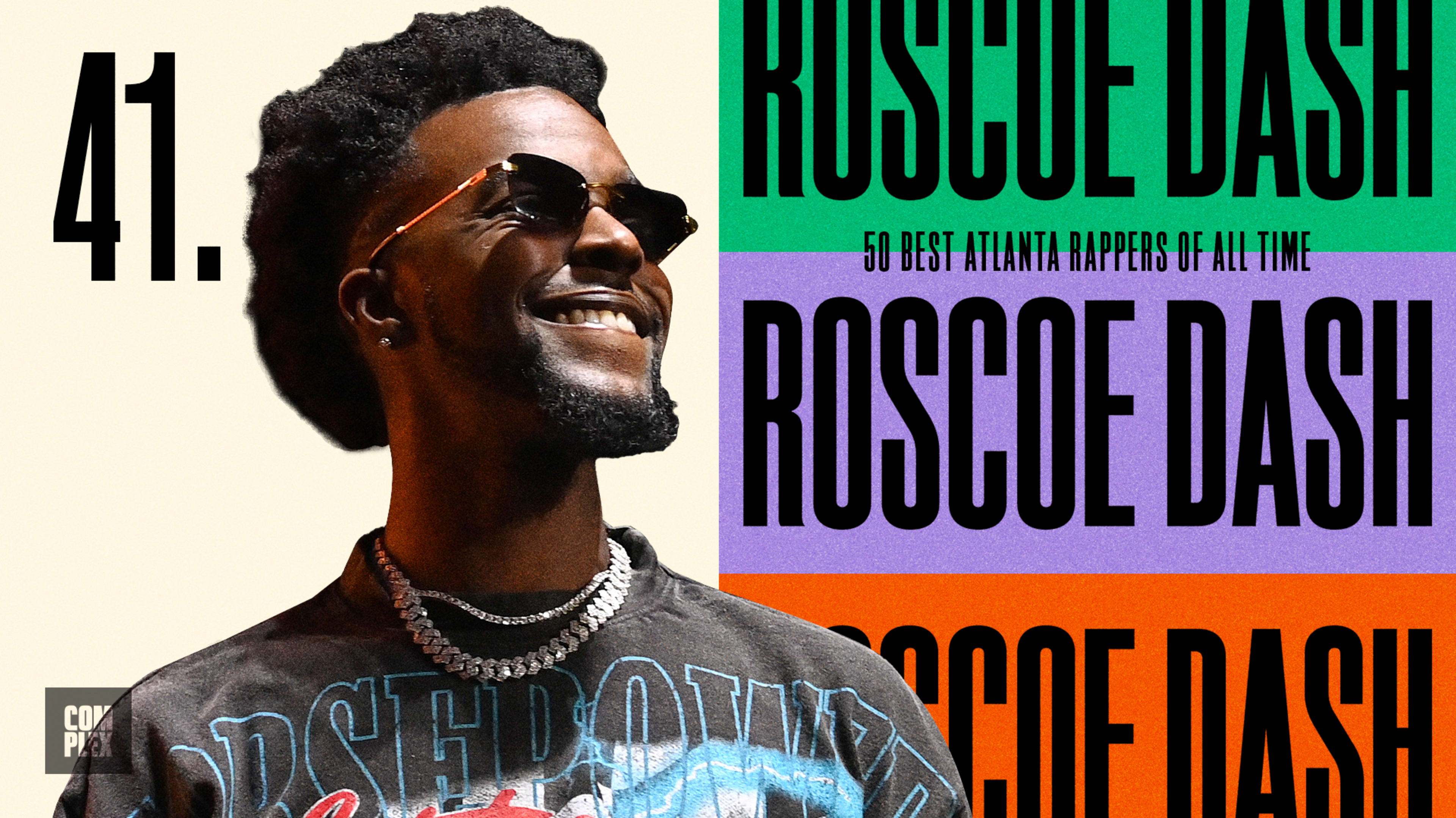
Why They Belong on This List: One of the great young pop voices to come from the city; had every ATL kid under 15 rocking a frohawk
Commercial success: 1 appearance on a diamond selling single; 6 songs on Billboard Hot 100 chart; 1 album on Billboard 200 chart
Important Songs: “No Hands” with Waka Flocka & Wale; “All The Way Turnt Up” featuring Soulja Boy
True Atlanta natives met Roscoe Dash through groups like Black Out Boiz and Travis Porter, who was actually the original feature on “All The Way Turnt Up.” Roscoe debuted his solo era by re-recording that track and adding Soulja Boy in 2010. The electric club banger took his movement to a national level and from there, Roscoe went on to eat in the early 2010s, dropping back-to-back bangers like “Show Out” and “Good Good Night,” while also climbing the charts as a go-to collaborator on tracks like Big Sean’s “Marvin & Chardonnay” and Waka Flocka Flame’s “No Hands.” He even ghostwrote the hook on Wale’s multi-platinum-selling slow burn “Lotus Flower Bomb.”
At his peak, Roscoe showcased a higher-pitched, feel-good, melodic side of the city’s hip-hop scene. In his versatile hit-making ability, he was Atlanta’s premier example of young and turnt before it became trendy to say so. And with an influential style that would later be adopted by the city’s younger generation, he surely belongs on this list. —Kemet High
40. Sean Paul
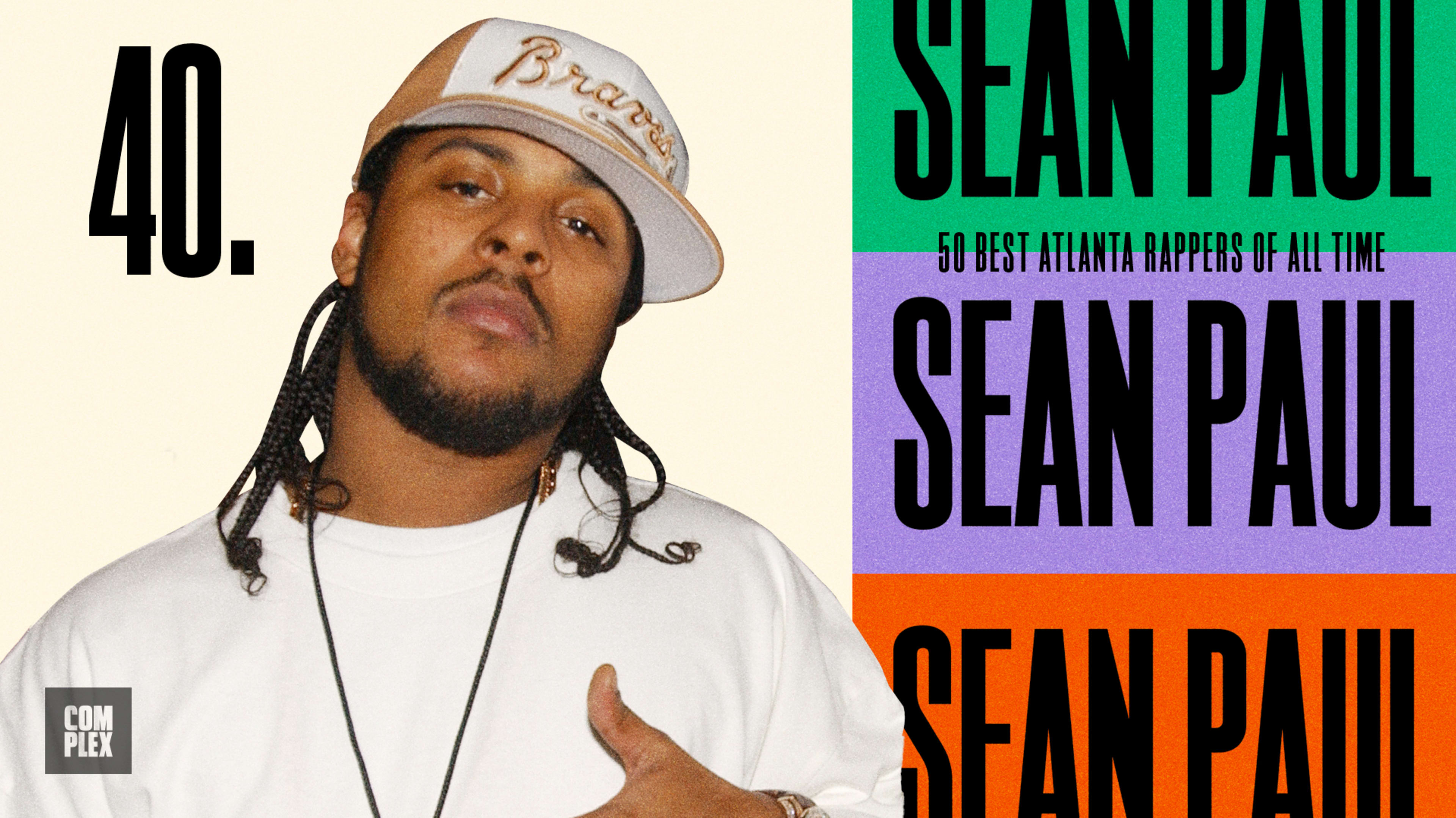
Why They Belong on This List: Helped introduce the “Eastside Stomp” to the country
Commercial success: 1 top 5 Billboard single and album as part of YoungBloodZ; 1 platinum single alongside Lil' Jon and E-40
Important Songs: "Shakem' Off"; “Damn!” featuring Lil Jon; “Snap Yo Fingers” with Lil Jon & E-40
In the mid-2000s, there were two Sean Pauls making fans dance around the country: one had fans doing the Dutty Wine, while the other had them stomping.
Consisting of childhood friends J-Bo and Sean Paul, YoungBloodZ was a well-respected rap duo from the Eastside of Atlanta. In one summer, they became legit stars with the success of the Lil Jon-produced crunk masterpiece "Damn!" The track took over the airwaves and became so ubiquitous that people all over the country started trying their own versions of the “Eastside Stomp.”
No knock on J-Bo, but Sean P was the A-side. He was a legitimately dope MC with real charisma and a knack for gliding over even the trickiest beats. He was also versatile. YoungBloodZ were rooted in street music and Sean P’s verses in particular were often grimy. But he became one of the underrated leading-man feature rappers of the late 2000s. He stole the spotlight on pop and R&B jams from Nivea (“Okay”), Cherish (“Do It to It”), Sammie (“You Should Be My Girl”), and his buddy Lil Jon (“Snap Yo Fingers”). Because of the success of “Damn!” and later “Presidential,” YoungBloodZ were often pigeonholed as just crunk. But Sean P showed how multifaceted they truly were.
In a 2018 interview with Billboard, Sean P summed it up succinctly: “We never called it ‘crunk’ — we would get crunk!” —Dimas Sanfiorenzo
39. Cool Breeze
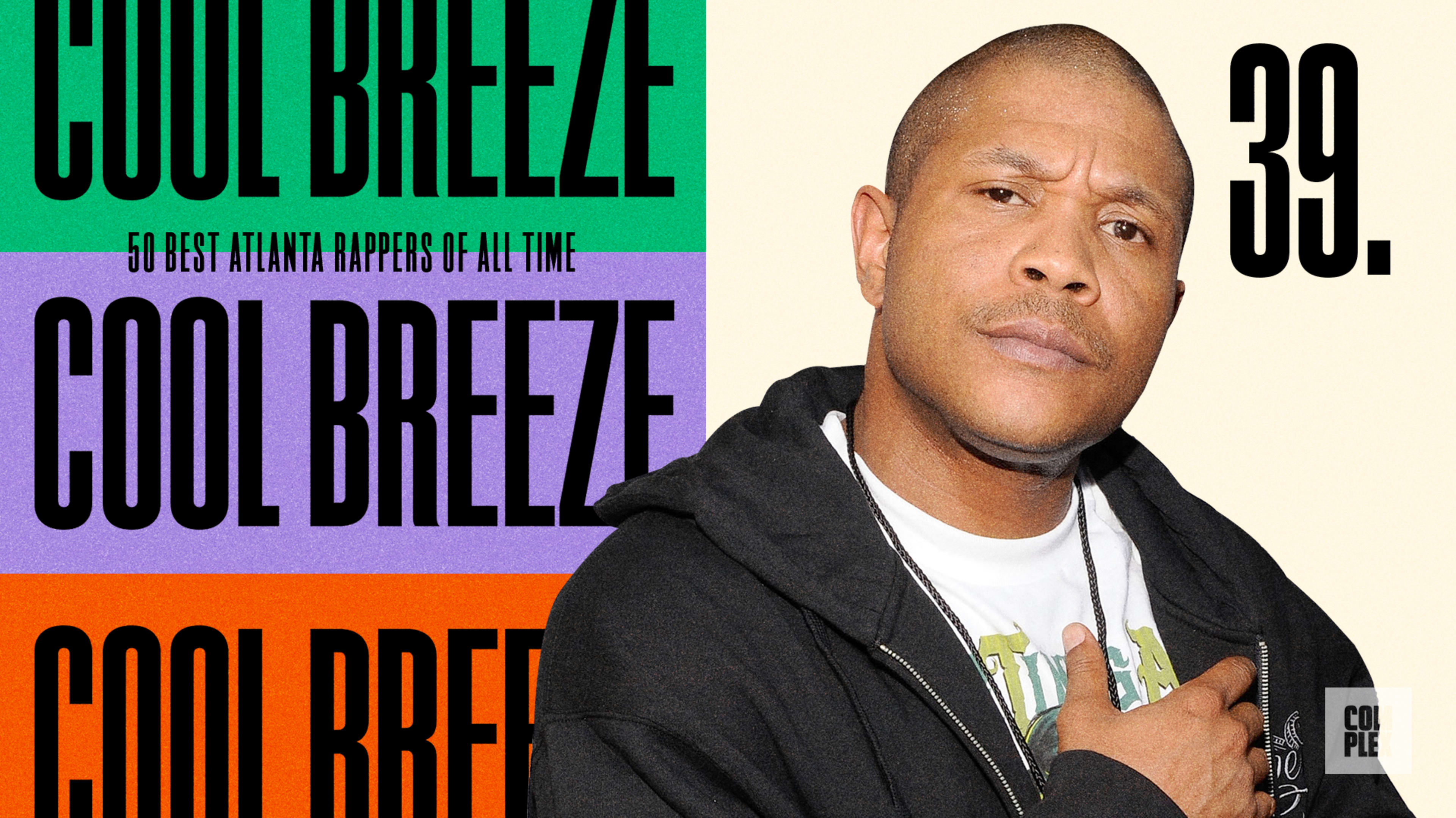
Why They Belong on This List: The prototype for the modern trap rapper; the first rapper to say “Dirty South” on waxCommercial success: 1 song on the Billboard Hot 11 chart, 1 album on the Billboard 200 chart
Important Songs: “Dirty South” featuring Goodie Mob & Big Boi; “Watch For The Hook” with Outkast & Goodie Mob; “Cre-A-Tine”
Let’s get this out the way: You can’t mention the phrase “Dirty South” without saying the name Cool Breeze. The East Point rapper and Dungeon Family O.G. first uttered, “What you really know about the Dirty South?” in a song-length response to critics who questioned the street prowess of the region’s breakthrough stars at the time, OutKast. The song, “Dirty South,” originally a Cool Breeze track, features prominently on Goodie Mob’s debut, Soul Food. What we remember most are the opening bars from Cool Breeze and the blunt delivery of his line on Black American history: “See, in the third grade this is what you told / You was bought / You was sold.”
Cool Breeze caught mainstream attention with the Organized Noize-produced track “Watch for the Hook,” a classic Dungeon Family posse cut. Powered by a sample from Merry Clayton’s “Southern Man” cover, it was the lead single for 1999's East Points Greatest Hit. Cool Breeze offered a glimpse of the South’s gangster lifestyle with vivid storytelling, raw realism, and unapologetic lyrical content, preceding T.I.’s rise by a couple of years. He’s arguably Dungeon Family’s most slept-on MC, but just like his musical kin, Cool Breeze is equally responsible for giving the South confidence in itself. —Gavin Godfrey
38. Young Nudy
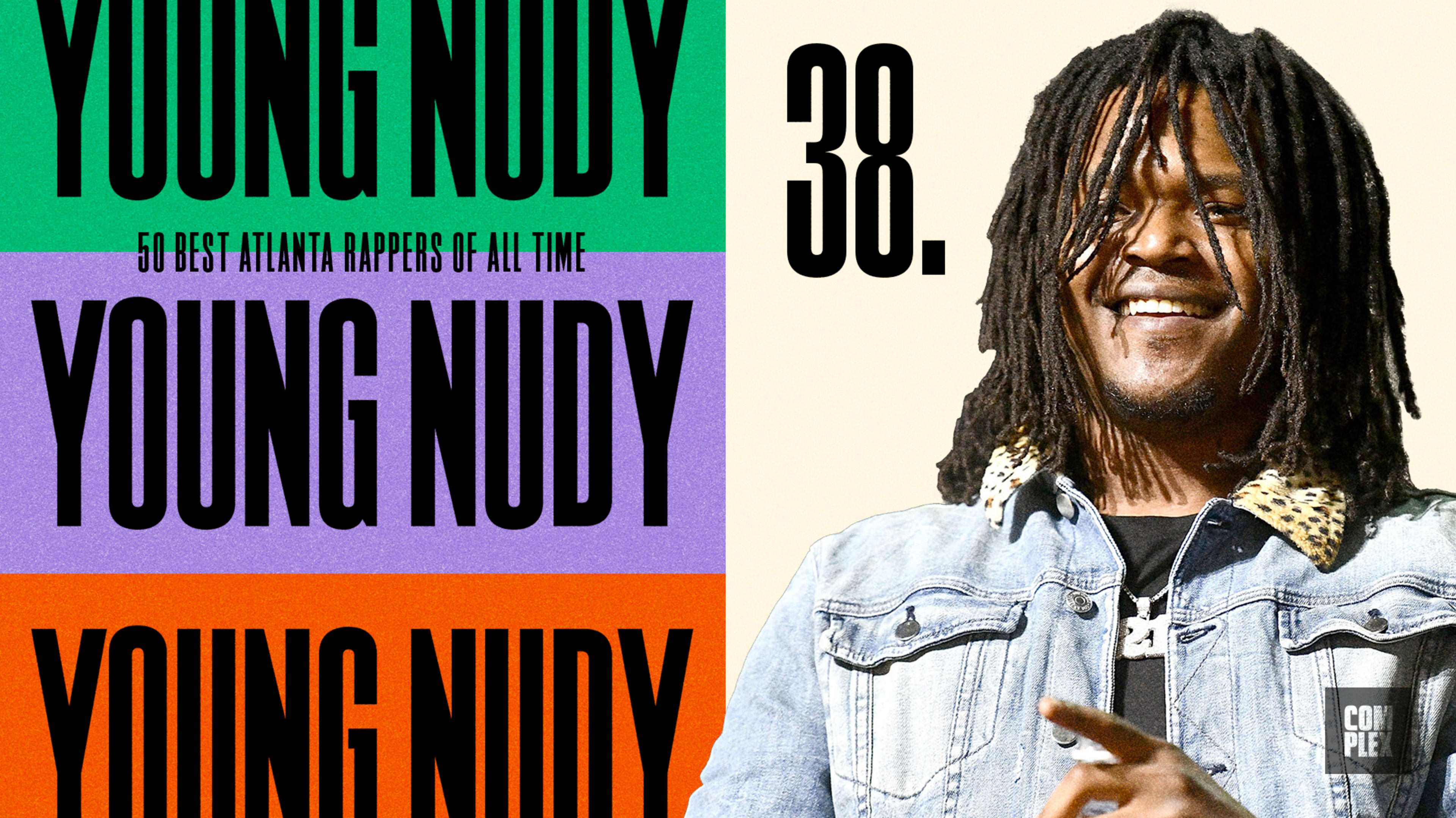
Why They Belong on This List: Brought in a new era of villainous, horror-shaded rap to the A alongside his cousin 21 Savage
Commercial success: Has one platinum single as a lead artist
Important Songs: “Peaches & Eggplants” with 21 Savage; “Pissy Pamper” with Playboi Carti; “Hell Shell”
When 21 Savage first started bubbling as the ATL’s next rap star, Young Nudy was standing right next to him. First appearing on “Air It Out” with his cousin—yes, Nudy and Savage are blood relatives—Nudy turned heads with distinctive, villainous cadences. Laid-back and quintessentially Atlanta, Nudy's ability to craft compelling narratives with raw, unfiltered lyrics showcased his talent for capturing the essence of street life with a unique, personal twist.
Standout projects, like his breakout Slimeball, EA MONSTER, Dr. E4VL, and the classic collaborative LP Sli’Merre with Pi’erre Bourne, highlighted his versatility and creativity as not just a rapper, but an all-around hit-maker. “Peaches & Eggplants,” off his latest full-length GUMBO, was a genuine hit and one of the best songs released last year.
It’s worth noting that it was the 2019 leak of “Pissy Pamper” that elevated Nudy to a new level of visibility and acclaim. Building a cult fan base off tried-and-true street anthems only for it to quadruple off an unreleased Playboi Carti collab wasn’t necessarily a planned action item. And yet, it seems to perfectly encapsulate the chaotic energy fans cling to when queuing up Young Nudy—who definitely deserves a seat amongst Atlanta’s greatest. —Jon Barlas
37. Rich Homie Quan
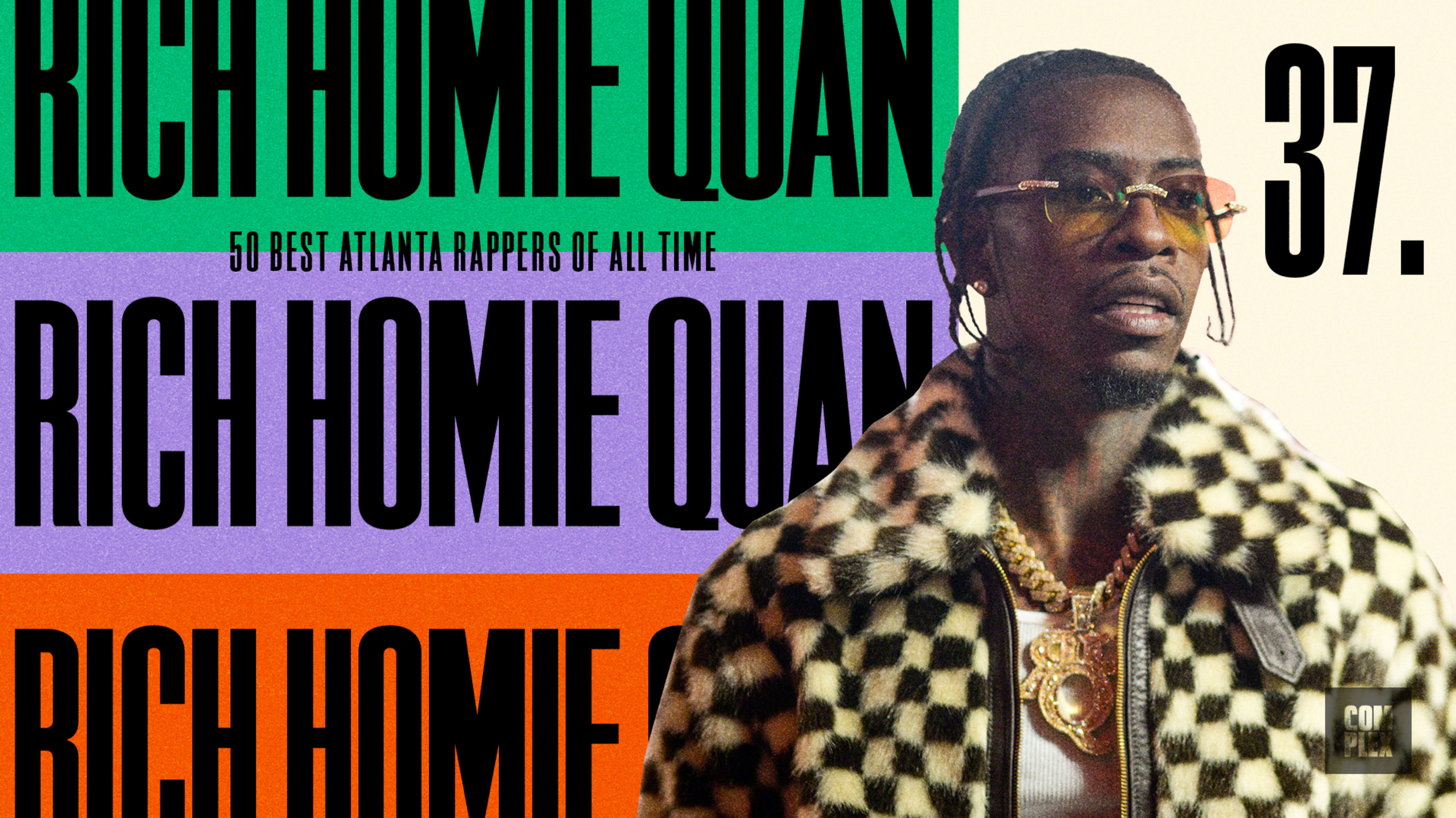
Why They Belong on This List: An immaculate run in the mid-2010s, with a flow and style that was sneakily influential
Commercial success: 7 songs on the Billboard Hot 100 chart; 1 album on Billboard 200 chart
Important Songs: “Type of Way”; “Lifestyle” as part of Rich Gang; “Flex (Ooh, Ooh, Ooh)”
Between February 2013 and April 2015, Rich Homie Quan turned a solo Billboard-charting summer smash (“Type of Way”) into a two-year hot streak filled with money-making mantras, Hot Boy bravado, and club-shaking anthems, all trademarked by Quan’s crooning flow that made his melodies magnets for gold and platinum plaques.
He couldn’t miss. Everything touched by his voice ignited on airwaves and earphones. The widespread hits and industry associations with O.G.’s like Birdman and Gucci Mane alongside new Atlanta geniuses like the Migos and Young Thug raised Rich Homie’s profile, but it was his Goin’ In mixtape series and the classic Rich Gang collab tape that ultimately showcased the bright glow of a rap star reaching for peaks only touched by Trap Gods. Sadly, fast living, label litigation, and an underwhelming debut album caused a halt in Quan’s meteoric rise. Still, what he did in that window was pivotal for how it built momentum for the next gen of confident, charismatic rap trendsetters.
Rich Homie Quan is still active, and just one record away from reminding so many why he should be mentioned alongside the city’s best and brightest. —Yoh Phillips
36. Fabo
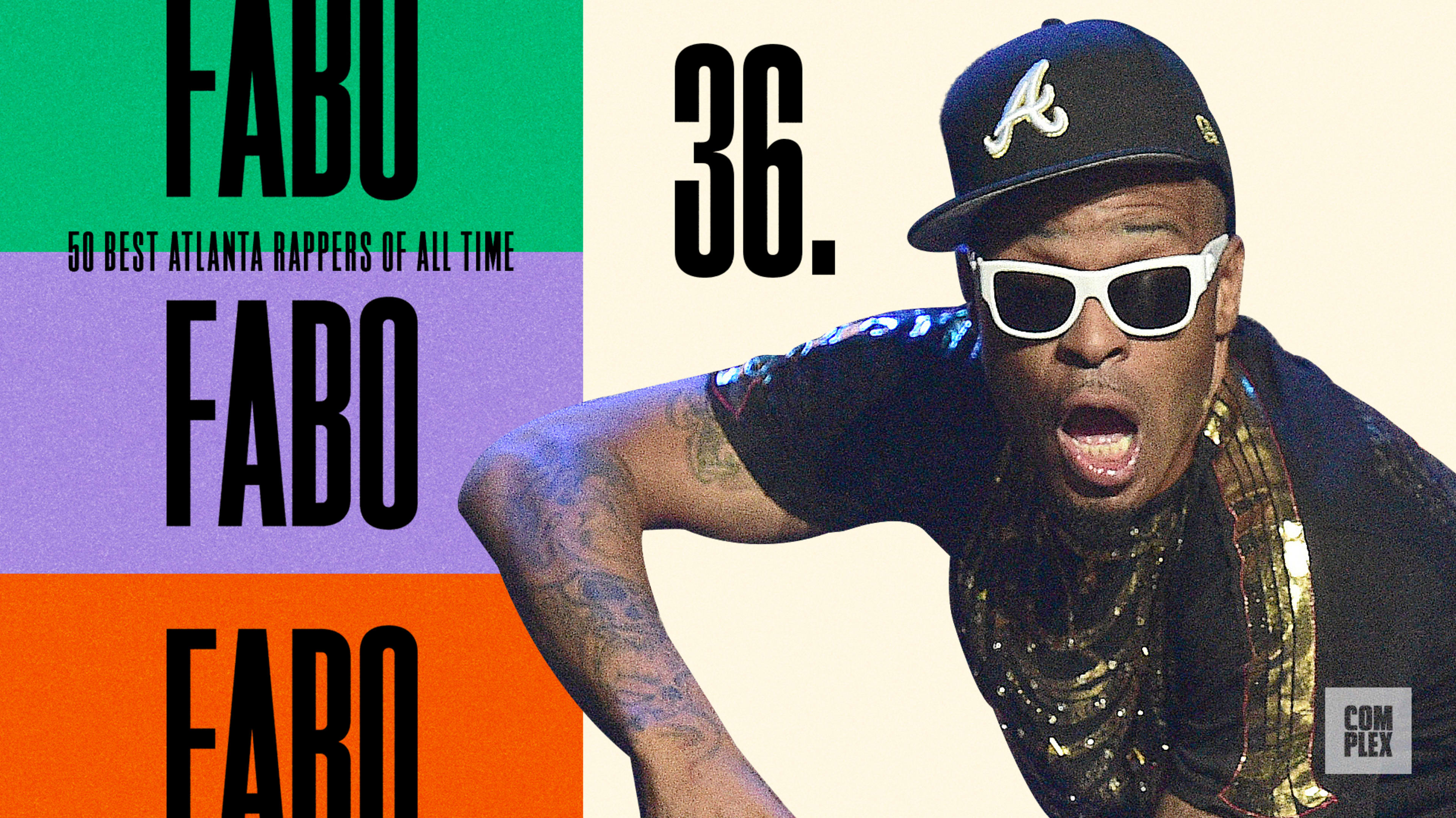
Why They Belong on This List: One of the great unsung legends of ATL hip-hop; influence that continues to be represented in contemporary hip-hop
Commercial success: 1 No. 1 hit on the Billboard Hot 100 chart and 1 album on the Billboard 200 chart with D4L
Important Songs: “Geeked Up”; “Laffy Taffy”; “I'm da Man” with D4L
Fabo was ahead of his time. His solo run was fronted by tracks like “What What,” which earned him local buzz and preceded his stint with D4L. The group soared in the mid 2000s with a string of hits that included “Betcha Won’t Do It Like Me,” “Scotty,” and “Laffy Taffy”—a multi-platinum-selling smash that topped the Billboard Hot 100 chart and sold millions of ringtones in the Nokia/Motorola era. In those Down for Life cuts, Fabo often shined as the first runner in the relay.
His rugged, sing-song delivery set the tone on hit records that put snap music (alternatively known as geek music) on the map for the entire world to engage with. With a confident skillset that’s a must-have for artists these days, Fabo’s acclaim has stretched decades. Take, for example, a shoutout on Drake’s No. 1 song “Nice For What” in 2016. Or, in 2020, a nod on K Camp’s “Tatted Up,” which interpolates Fabo’s iconic belting from D4L’s “Tatted.” Or how about last year’s principal feature on “SOMETHING FOR JUNKIES” off Killer Mike’s Grammy-winning Michael? No matter which era you temp-check him, putting respect on his name is a must. —Kemet High
35. Diamond
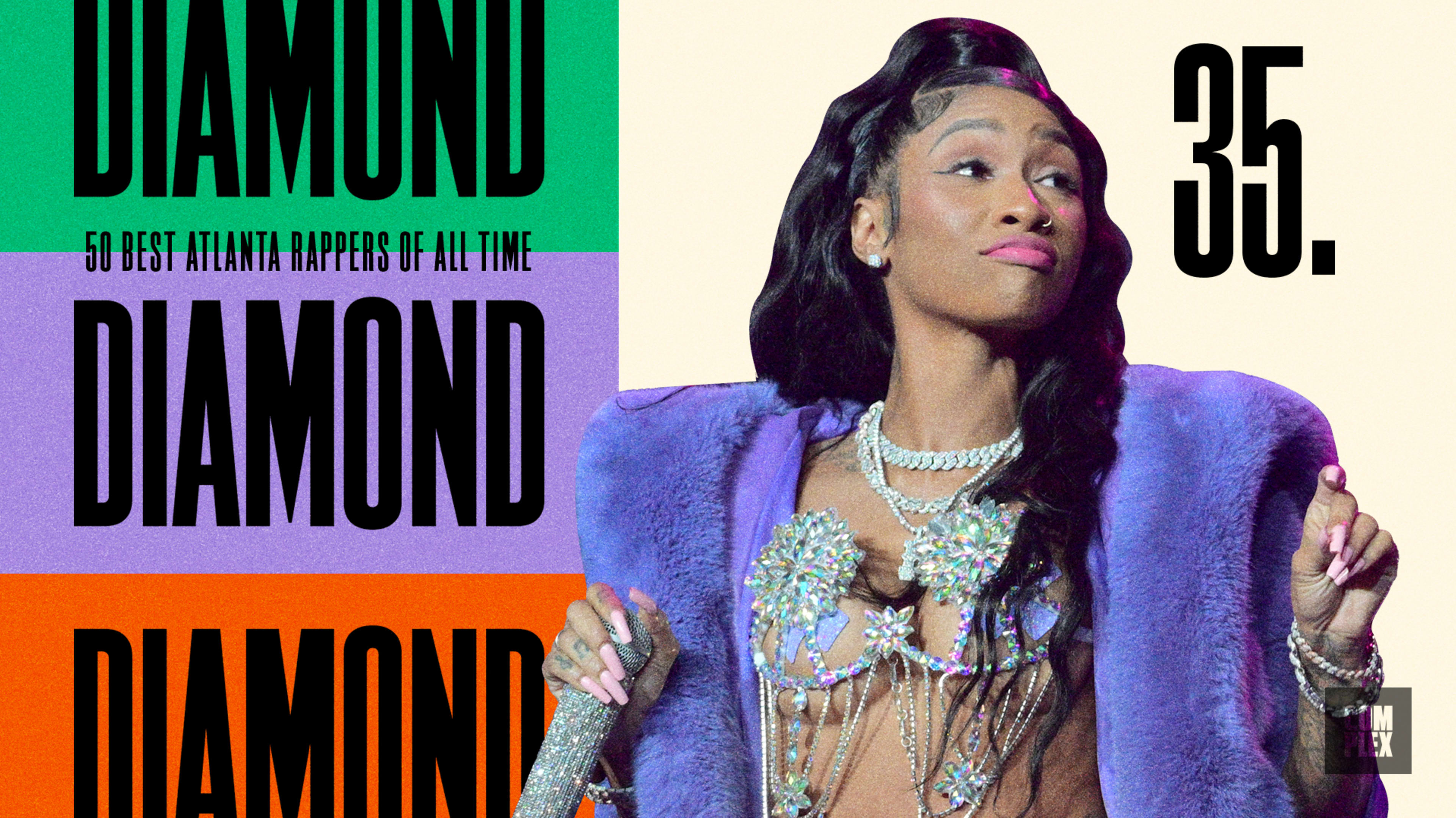
Why They Belong on This List: One of the most memorable debut verses in hip-hop history
Commercial success: 2 songs on Billboard Hot 100 chart and 2 albums on Billboard 200 chart with Crime Mob
Important Songs: “Knuck If You Buck” and “Rock Yo Hips” with Crime Mob; “Lotta Money”
From the second Diamond rapped, “I come in da club shakin’ my dreads, throwin’ these bows, and bussin’ these heads,” you knew you’re dealing with something different. “Knuck If You Buck” is a good record that rises to the level of iconic off the strength of Diamond’s verse alone. In one 16, Diamond—who was only 15 at the time—demonstrates how women can hold their own in a high-intensity, hyper-masculine space in hip-hop. Over the years, her verse only grew in lore, soundtracking (and validating) Black girls and their rage—whether in the club or in professional settings.
Diamond would leave Crime Mob after the release of their sophomore album, Hated on Mostly, establishing herself as a formidable solo artist, constantly putting out music with a nasty, crunk edge. With all of that being said: How many people on this list can say they created a classic moment at 15 years old? —Kyesha Jennings
34. Bankroll Fresh
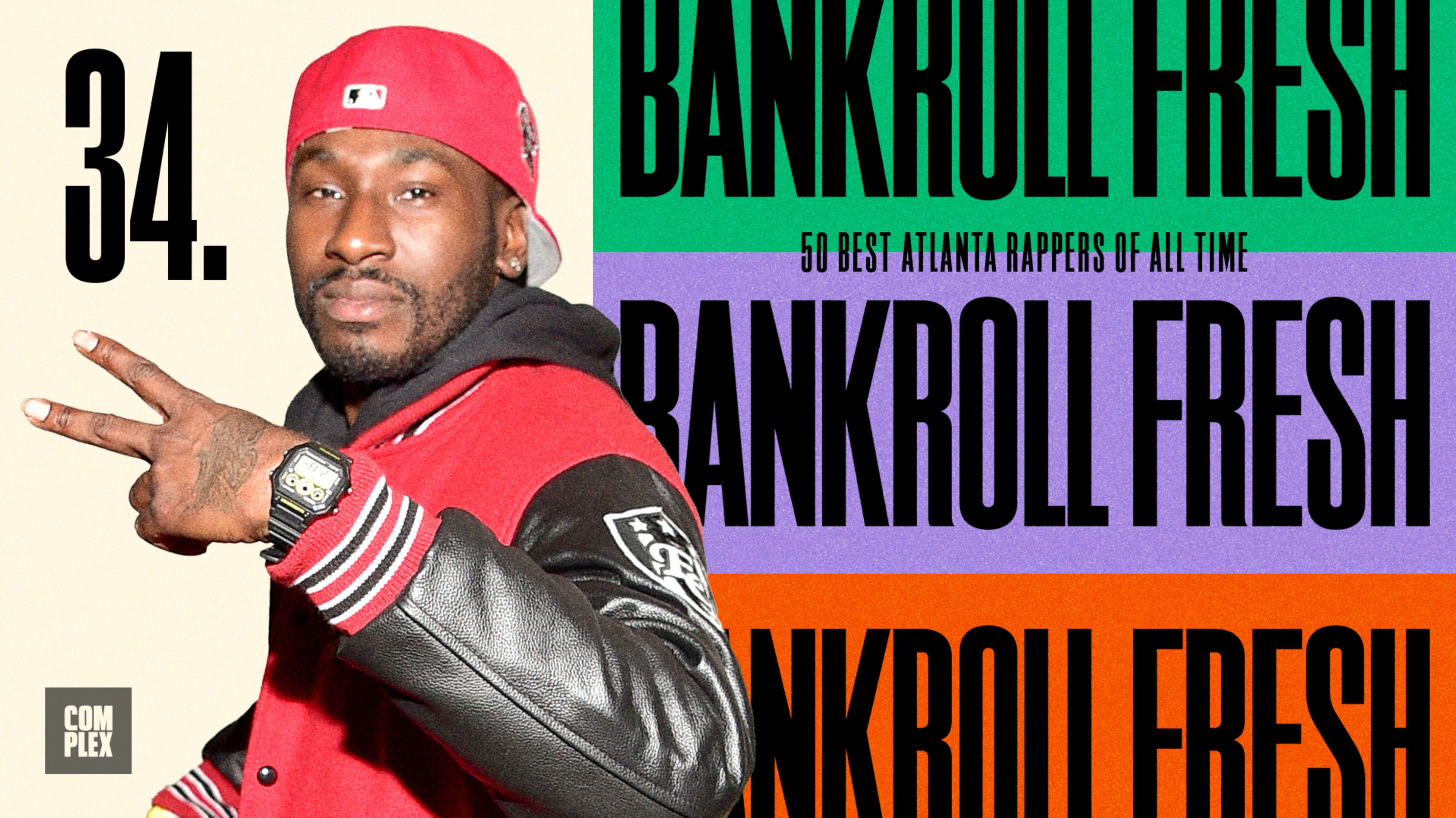
Why They Belong on This List: One of the most promising young rappers from Atlanta in the mid-2010s, who made a significant impact in a short amount of time
Commercial success: 1 song on the Billboard Hot R&B/Hip-Hop charts
Important Songs: “Hot Boy”; "Walked In" with Travis Porter & Boochie; “All There” with Jeezy
No Atlanta rapper has balanced flashy and gritty quite like Bankroll Fresh. He followed in the footsteps of his trap music forefathers, crafting vivid, motivational dope-boy rap songs for the trenches. Hailing from the Westside of Atlanta, Bankroll Fresh was a chameleon on tracks, adeptly shifting between high-energy and laid-back cadences, depending on the production.
Life of a Hot Boy and its sequel, Real Trapper, came within five months of each other. It’s one of the more underrated one-two combos of the 2010s. Sure, the subject matter didn’t often wander further than drug dealing, but he displayed real charisma and an innate ability for detailed storytelling, most vividly on a track like “Out Da Mudd,” where he used deceptively straightforward rhyme schemes to get his point across. (“Drowning in a drought, working out the house / AK on the floor, a birdie in the couch.”)
After the release of the tapes, he was clearly ascending. He showed promise as a hitmaker on the addictive “Walked In," with Travis Porter and Boochie getting some burn. And he started collecting co-signs from a wide spectrum of artists, from Earl Sweatshirt to Erykah Badu to Marilyn Manson.
Then, in one swift violent moment, it all came to an end. In 2016, he was killed in a shootout at Street Execs Studio in northwest Atlanta, where he recorded much of his music. He was only 28. Later that year, he received a final nod with a posthumous appearance on Jeezy’s classic hood anthem “All There.” —India Rice
33. Childish Gambino

Why They Belong on This List: He’s one of the most talented and versatile multi-hyphenates from Atlanta
Commercial success: 1 No. 1 song and 9 total entries on Billboard Hot 100 chart; 2 top 10 albums and 7 total entries on Billboard 200 chart
Important Songs: “3005”; “This Is America”; “Sweatpants” with Problem;
You won’t find many entertainers as talented as Childish Gambino. The guy from Community might just be the best multi-hyphenate since Jamie Foxx, and part of his legacy is in the world of hip-hop, where he staked his claim as a legitimate rap star. Merging the free-wheeling rhyme skills to kill a Hot 97 freestyle with the all-around pop know-how to craft earworms like "3005" and "Heartbeat," he's earned himself a variety of gold and platinum plaques.
Yeah, Camp was corny, but Because The Internet supplied plenty of viable bops. Divisive as it may be, “This Is America” featured one of the most inventive music videos of the 21st century, and the song itself debuted at No. 1 on the Hot 100. For that moment, he reached the pinnacle of commercial recognition in music, which was by then a side job. Then there’s the objectively dope Awaken, My Love!, an impromptu Funkadelic-inspired album that produced the indelible bedroom anthem, "Redbone." Is that a pure rap album? No, but neither is The Love Below. And besides, who cares? When it comes to Gambino, classification is besides the point; he can be whatever he wants. Being a successful rapper just happens to be one of them. —Peter A. Berry
32. Big Gipp
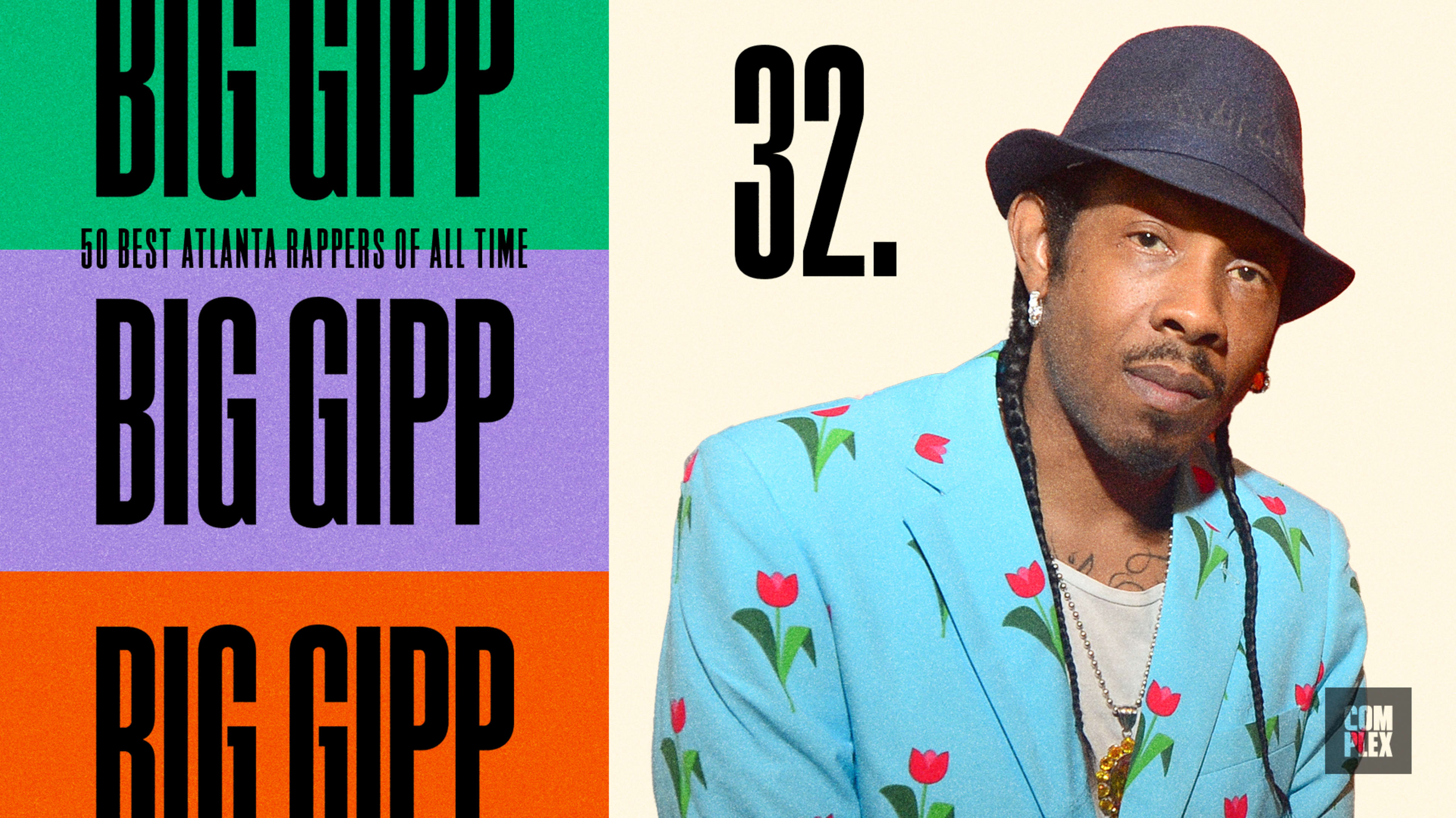
Why They Belong on This List: Ahead of his time with a unique rhyme style and quirky outfits, long before André 3000 made eclecticism popular
Commercial success: 1 solo album on Billboard 200 chart, 5 songs on Billboard Hot 100 chart and 5 albums on Billboard 200 chart with Goodie Mob
Important Songs: “Black Ice” as part of Goodie Mob featuring OutKast; “Make The People Say”; “Steppin Out” featuring Sleepy Brown
In a collective composed of Atlanta’s most eccentric musical minds, calling yourself "the mutant” is one thing. Living up to that standard in both sound and style is what has made Big Gipp one of the standout figures in the annals of Southern rap. Guided early on by Ray Murray of Organized Noize, Gipp developed his rapping and songwriting ability and eventually landed with Goodie Mob. His deep voice, protracted delivery, and built-in archive of Southern slang made him one of The Dungeon Family’s most easily recognizable rap poets. Style-wise, he was and still is known for his quirky, trend-bucking outfits.
Along with bandmates CeeLo Green, T-Mo, and Khujo, Gipp delivered classics such as Soul Food and Still Standing (his verses on “Black Ice” are required listening). In 2003, he dropped his only solo effort, Mutant Mindframe, which featured gems like “Make The People Say,” “Steppin' Out” and “Boogie Man.” He’s also released collab albums with Daz Dillinger, Ali, and producer James Worthy.
Whether as part of a group, flying solo, or teaming up with another artist, Gipp built his career on being himself—quirks and all. —Gavin Godfrey
31. Lisa "Left Eye" Lopes
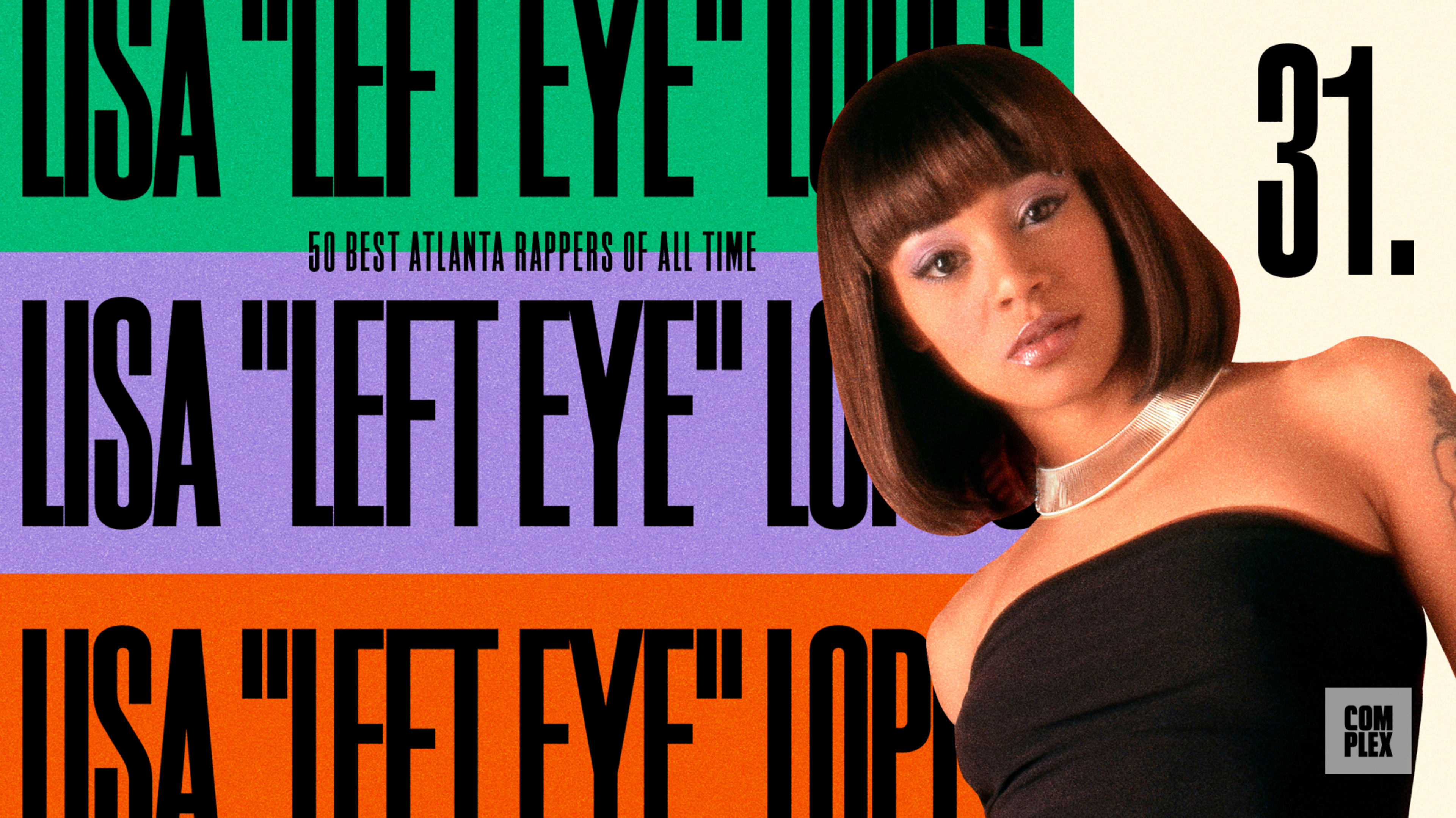
Why They Belong on This List: One of the most prominent Atlanta-based female rappers of her time, showcasing many impressive moments as an MC in an R&B group
Commercial success: 1 top 10 hit on the Billboard Hot 100 chart as a solo artist; 9 top 10 hits on the Billboard Hot 100 as part of TLC
Important Songs: “Waterfalls”; “Not Tonight (Ladies Night Remix)” with Lil' Kim, Missy Elliott, Da Brat, & Angie Martinez; “U Know What's Up” with Donell Jones
Although she was raised in Philadelphia, Lisa “Left Eye” Lopes’ musical ingenuity started in Atlanta. As one-third of TLC, she brought audacious flair, quirky fashion, and funk-infused bars. Who can forget her groovy, nursery rhyme-eque verse on the blockbuster hit “Waterfalls”? Or her provocative, tongue-twisting performance on “Ain't 2 Proud 2 Beg”? Or how she held her own with Lil' Kim, Da Brat, Missy Elliott on “Not Tonight (Ladies Night Remix)”?
She was on a path to translate her success into a promising solo career. But Arista scrapped her debut album, Supernova, and she died in a car accident less than a year afterwards. Her creativity as a soloist—the ability to blend pop and rap while still making it sound soulful—was cut short. Who knows what else Left Eye would have achieved? Was the world even ready for it?
Until the rise of Clayton County’s Latto a few years ago, Atlanta hadn't had a female rapper truly reach mainstream success as a soloist. There’s little doubt that Left Eye would’ve filled that void. But her groundbreaking success with TLC was sufficient enough to inspire generations of female rappers long after her death. —DeAsia Paige
30. Pastor Troy
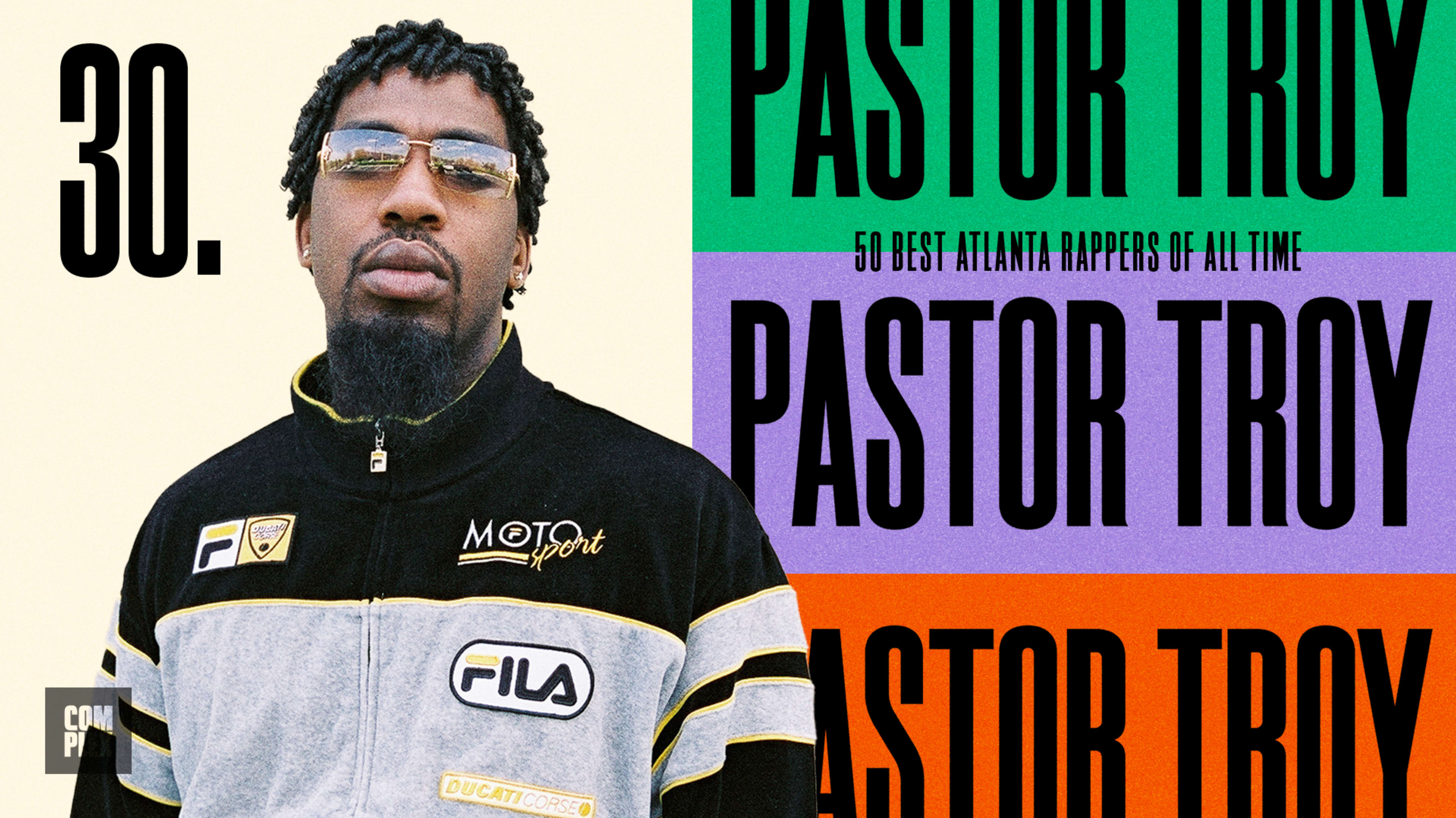
Why They Belong on This List: Atlanta’s ‘People’s Champ,’ a figure who built a legendary and prolific career independently
Commercial success: 9 albums on the Billboard 200 chart
Important Songs: “No Mo Play In G.A.”; “Vica Versa”; “Are We Cuttin'” featuring Timbaland, Ms. Jade, and CJ
When Pastor Troy blasted his way onto the rap map in 1999 with his self-released debut album We Ready (I Declare War), there was a bit of confusion as to whether or not the “Down South Georgia Boy” was from Atlanta, due to his strong ties in Augusta, Georgia, where he produced the album as a student at local HBCU Paine College.
Add that to him not being affiliated with any of the popular Atlanta-based rap crews or labels at the time, while acting as a lone wolf in his ballsy decision to diss Master P at the apex of his No Limit powers, it took a minute for the city to figure out what team he was playing for. However, after his 2001 singles “This The City” and “Vice Versa,” and over the decades that followed, he’s proved to be authentically ATL, spending his career independently building a loyal fanbase with only a brief stint of major-label support in the early 2000s. Ironically, he’d mimic P’s strategy of relentlessly flooding the streets with music (to date he has released nearly 50 albums and mixtapes) while setting the groundwork for fellow Atlanta artists like Gucci Mane to follow the same blueprint.
As a musician,Troy set his own balanced lane by giving fans songs they can make fists or prayer hands to. As a performer with 25-plus years in the game, he still continues to electrify crowds at venues ranging from small clubs to annual festivals. As an artist with more fans than the average man, he still makes it a point to be seen among the people at barbershops and back-to-school bashes, not just on stage. So while he might have given himself the customized WCW Championship Belt he proudly wears, the “People’s Champ” distinction that it represents is definitely earned. —Maurice Garland
29. Young Dro
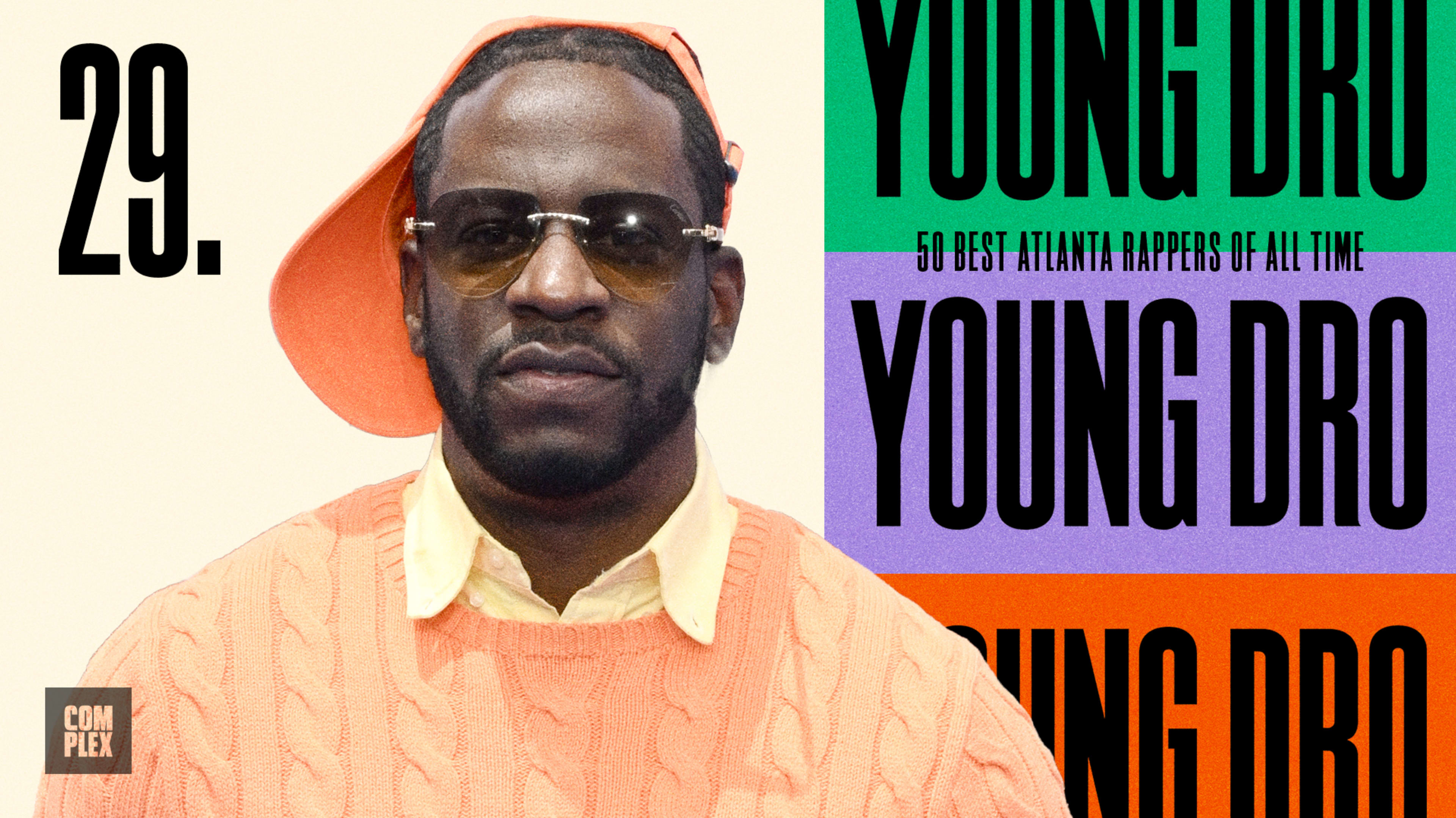
Why They Belong on This List: One of the most colorful MCs from his era, who gave the city one of its great singles (and dances)
Commercial success: 1 top 10 hit on the Billboard Hot 100 chart with 4 total entries; 1 top 5 album on the Billboard 200 chart with 2 total entries
Important Songs: “Shoulder Lean” with T.I.; “F.D.B.”; "Ain't I" with Yung L.A. and T.I.
Twenty-eight million YouTube views do not do justice to how explosive “Shoulder Lean” by Young Dro was in 2006. Although the dance was able to make shoulders anywhere from Alabama to Amsterdam dip and sway,Dro’s verses were not bubblegum-flavored. As an MC, he’s wordier than Jeezy, more clever than T.I.P., and has an imagination for flexing and flows that could rival Gucci Mane’s creative prime. It’s difficult to find a comparable rapper with Dro’s Southern charm, taste in exotic fish, appreciation for tropical colors, and mastery of country grammar. He’s a walking bank of quotable one-liners over trunk-rattling basslines.
The imagery is why every candy-dyed song of his felt more stylish than the bright-colored Ralph Lauren fits that he wore religiously. If Instagram and TikTok were around at the height of “Shoulder Lean,” maybe his underground mixtapes, infectious singles, and highly underrated debut album, Best Thang Smokin’, would have made him an even bigger star. But those who remember will never shy from saying Polo Dro is one of Atlanta’s finest. —Yoh Phillips
28. Soulja Boy
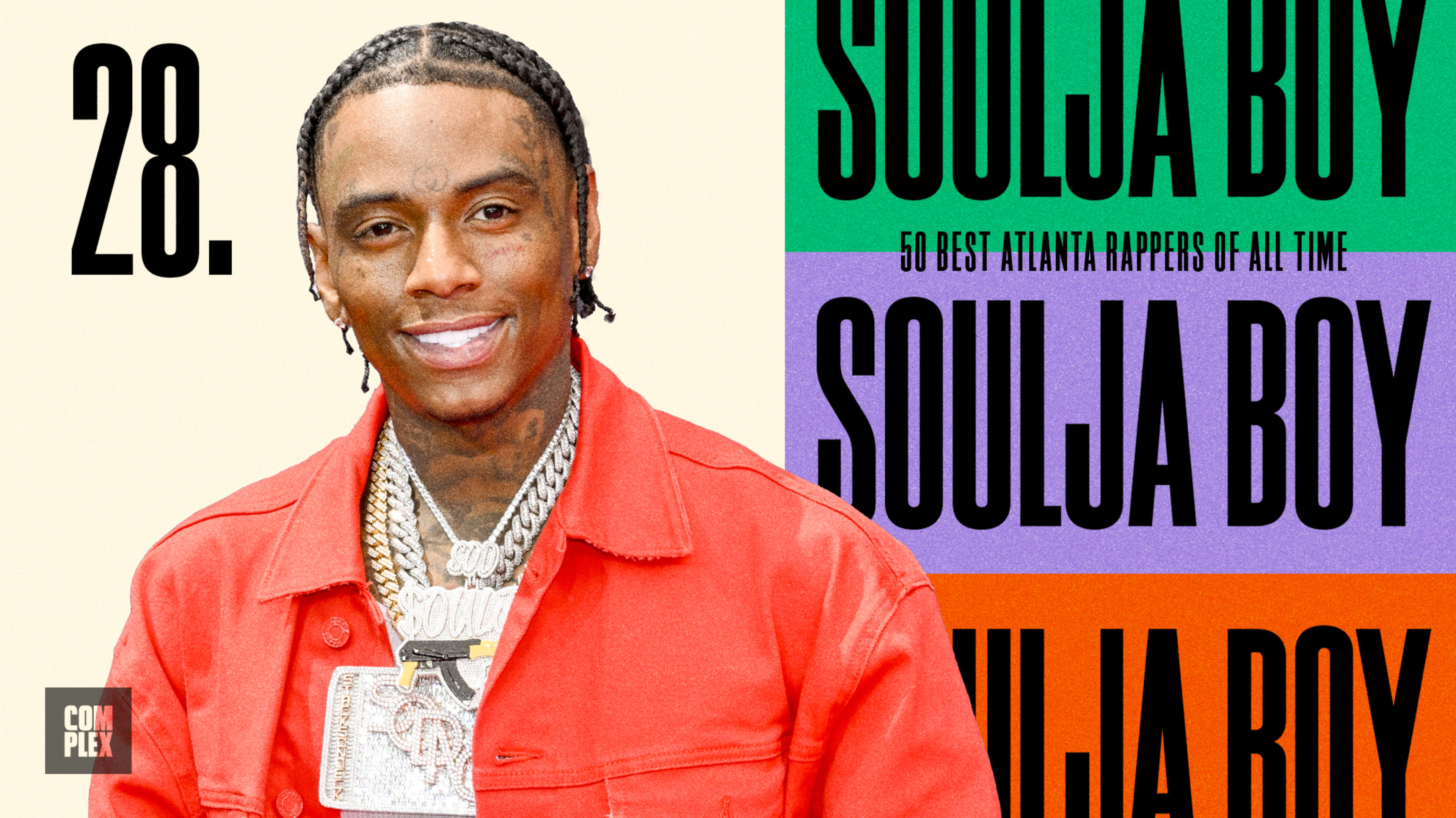
Why They Belong on This List: The blueprint for a new type of rap star who embraces a DIY approach to recording and distributing music
Commercial success: 1 No. 1 hit and 10 total entries on the Billboard Hot 100 chart; 1 top 5 album and 3 total entries on the Billboard 200 chart
Important Songs: “Crank That (Soulja Boy)”; “Kiss Me Thru The Phone” with Sammie; “Pretty Boy Swag”
Soulja Boy’s spot is well-deserved. During the late 2000s, Soulja was a leading voice in the ringtone-rap era, and his No. 1 hit “Crank That (Soulja Boy),” along with “Turn My Swag On” and “Pretty Boy Swag,” were not only integral to the Atlanta club scene, but also national staples.
In many ways, Soulja’s story represents the 1.0 version of what the next decade of rap would look like. He made “Crank That” in his bedroom and uploaded it to SoundClick—a model of creation and distribution that SoundCloud rappers would later follow. He relished his role as a hip-hop provocateur, willingly going back and forth with rappers like Ice-T, leaning into his position as an antagonist who wasn't afraid to ruffle feathers—a posture many young rappers would take on over the years. And his music was always meant to be played “through the phone,” whether it via MP3s or ringtones. You can’t deny Big Draco’s impact on Atlanta hip-hop. —Jordan Rose
27. J.I.D
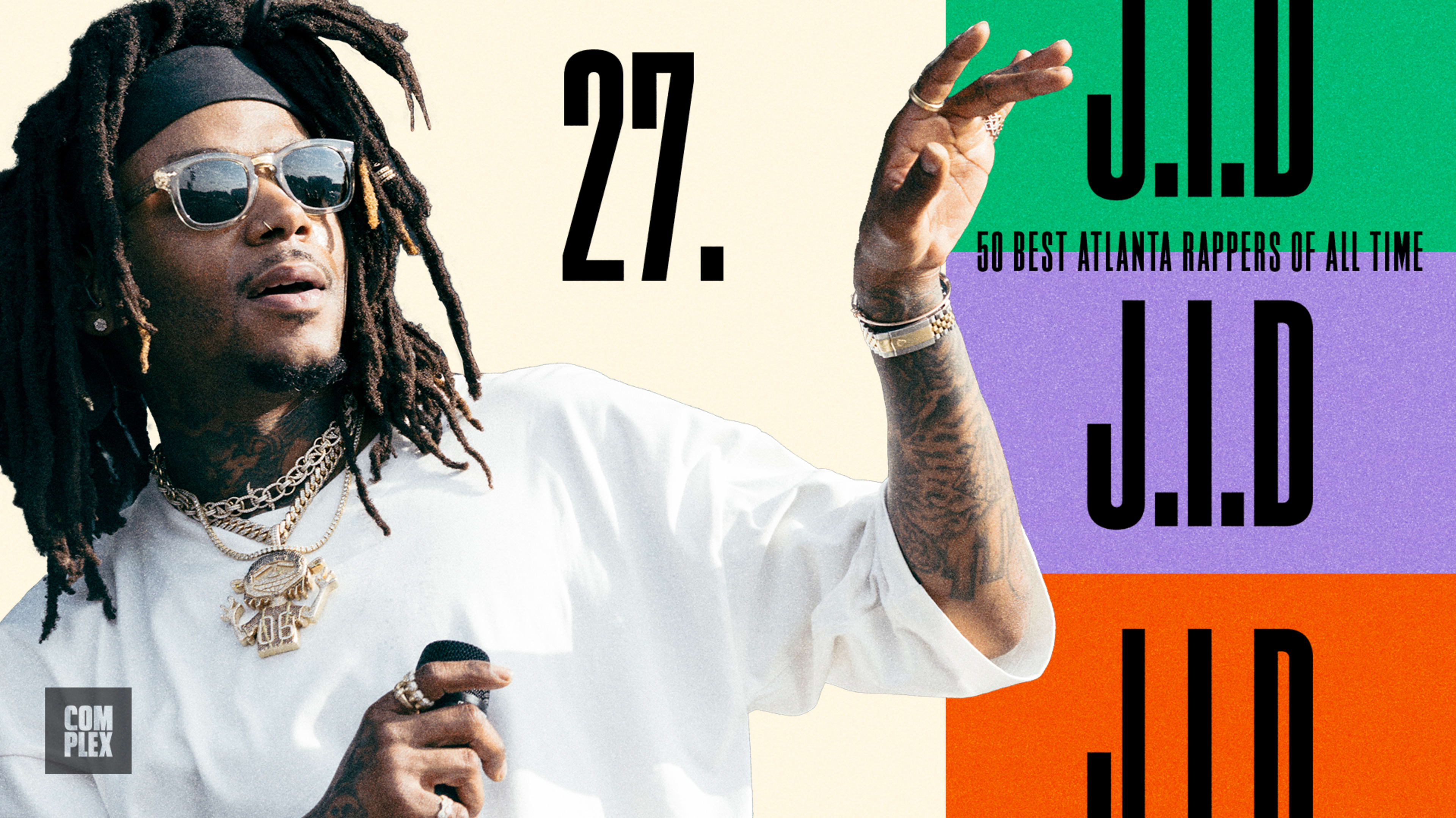
Why They Belong on This List: One of the few contemporary MCs from the city who can make lyrical records that also find commercial success
Commercial success: 7 songs on the Billboard Hot 100 chart, including 1 top 5 hit; 3 albums on the Billboard 200 chart
Important Songs: “Surround Sound” featuring 21 Savage & Baby Tate; “151 Rum”; “Kody Blu 31”
J.I.D is as much a child of old-school Atlanta rap as he is a reflection of the boundlessness of the region's sound. He came up with the Atlanta rap collective Spillage Village before garnering the attention of J. Cole and Dreamville. J.I.D grew an underground cult following with his DiCaprio series of mixtapes between 2015 and 2018, and—like the actor’s roles—each tape showcased the rapper’s range and ability to build worlds out of his performances.
Over the years, J.I.D has often been compared to Kendrick Lamar, for the complex, dizzying way he approaches tracks. Like the Compton MC, J.I.D is a rapper’s rapper, someone who bobs and weaves like a prime Manny Pacquiao in and out of metaphors and similes. He’s also one of the true MCs who’s able to have some chart success: “Surround Sound” became a top 40 song in 2023 after it blew up on TikTok. —Jordan Rose
26. MC Shy D
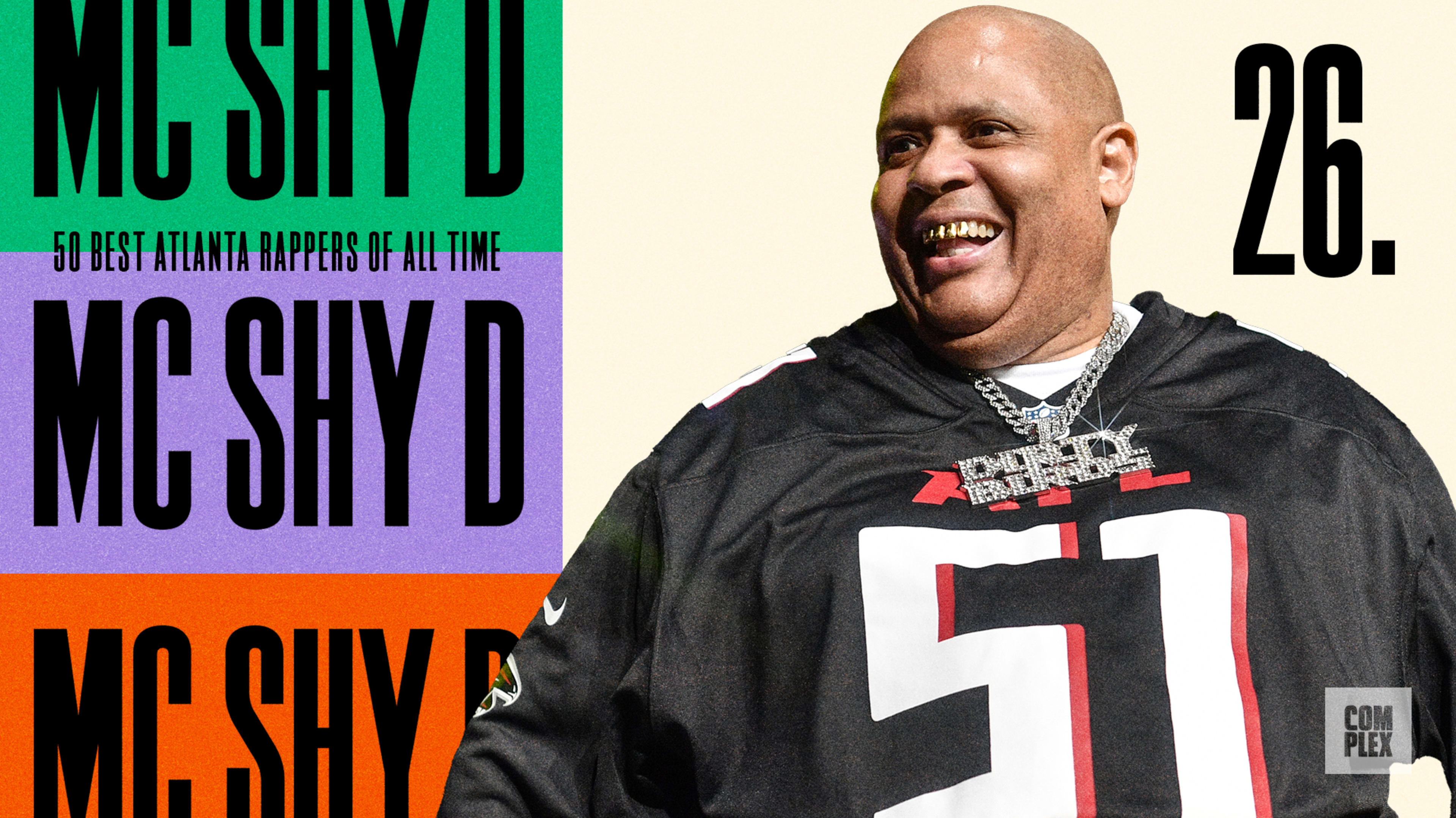
Why They Belong on This List: One of the first Atlanta rappers to achieve success beyond the city
Commercial success: Had one album appear on the Billboard 200 charts
Important Songs: “Got to Be Tough;” “Shake It;” “Rapp Will Never Die”
Before the soul- and funk-fueled sound of Organized Noize and the Dungeon Family dominated in the 1990s, Miami bass heavily influenced Atlanta’s rap scene. MC Shy D, who was born in the Bronx and moved to the A as a kid, emerged as a pioneer in bringing this sound to the city. In turn, he shaped the nascent stages of Atlanta hip-hop.
He wasn’t the first rapper from Atlanta to have some radio success—that would be Mojo—but he was the first from Atlanta to transcend the city. He signed with Uncle Luke’s Luke Skyywalker Records in the mid-’80s and debuted with Got to Be Tough in 1987. The 12-song album featured the fan-favorite title track, a bass-heavy song that samples Earth, Wind & Fire’s “Brazilian Rhyme.” For nearly five minutes, MC Shy D gives a thunderous introduction to a rapper who’s firm in his lyricism and leadership as a rap star: “Don't try me or deny me 'cause I'm number one / And when I rap on the mic, I get the job done,” he brags in the first verse.
The next year, he dropped his seminal track “Shake It,” co-produced by DJ Toomp, which became the rump-shaking anthem in the city, setting the tone for Atlanta rap’s reputation as the life of the party. —DeAsia Paige
25. Latto
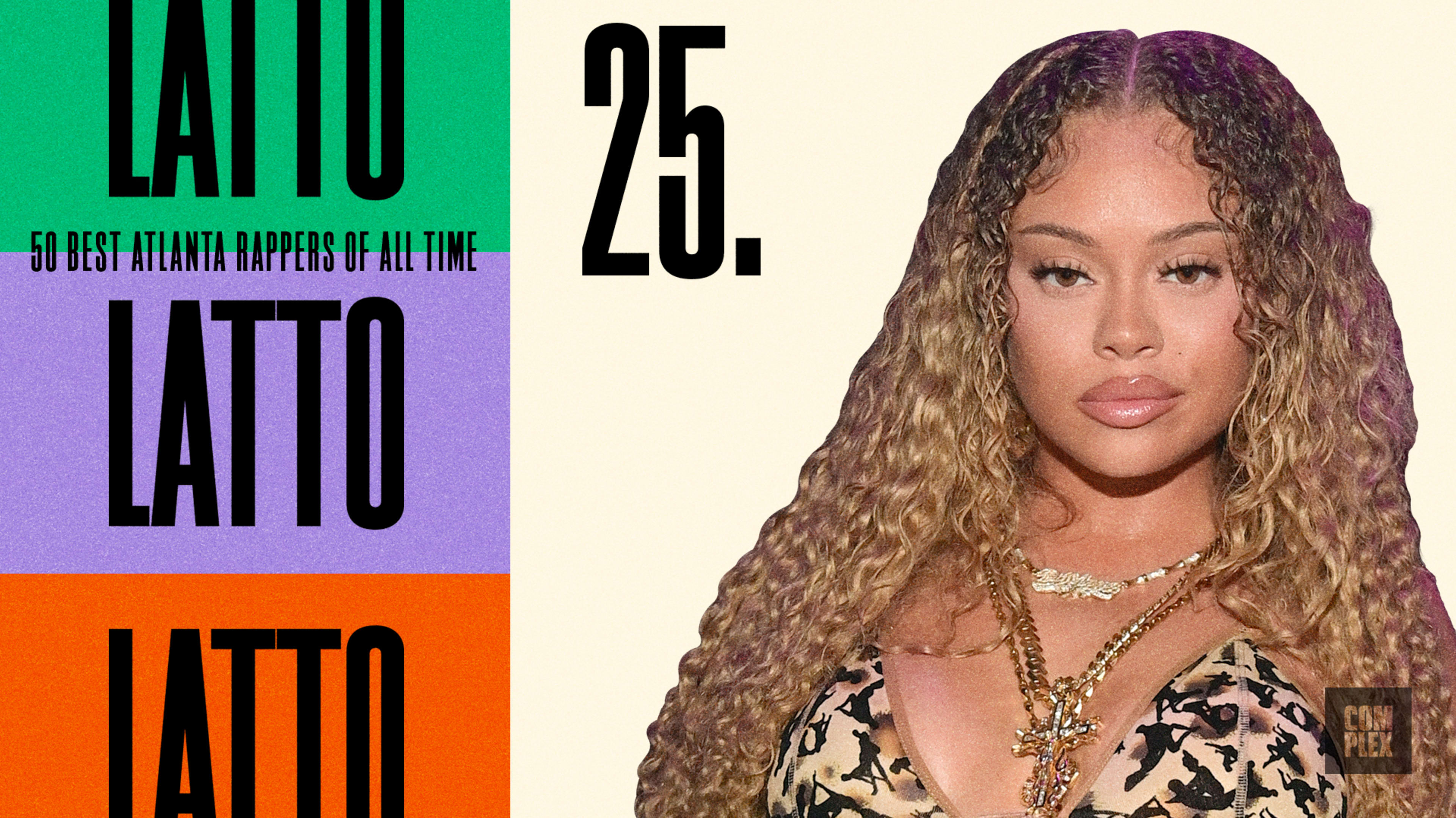
Why They Belong on This List: Achieved mainstream success on a grand scale at age 25, while also being one of rap’s coldest MCs
Commercial success: 8 songs on the Billboard Hot 100 chart, including 1 No. 1 hit; 2 albums on the Billboard 200 chart
Important Songs: “Big Energy”; “Put It On Da Floor Again” with Cardi B; “Bitch From Da Souf”
At just 16, Latto became the first winner of Jermaine Dupri’s hit competition series The Rap Game. Opting out of signing with So So Def, she used her charisma and rapping prowess to carve out a lane of her own.
After ditching her original name—the unfortunate moniker Mulatto—the Atlanta MC reemerged as Big Latto. The new name is fitting; with hits like "Big Energy" and “Put It on da Floor," she’s proven she can create genuine smash records. And since this is a list of rappers, we’d be remiss if we didn’t point out that Latto is also a real spitter—skill-wise, she is one of the best contemporary rappers from Atlanta who isn’t afraid to spar with rivals when necessary. (Please check out “Sunday Service” if you haven’t.)
With women historically underrepresented in Atlanta's hip-hop scene, Latto’s prominence is significant. Her perspective is not often seen from rappers from the A. Her lyrics frequently celebrate women asserting their worth in a male-dominated industry. She is also unapologetic in her exploration of sex and sexuality in her music, aligning herself with a lineage of female rappers who have used their platform to push boundaries in hip-hop. —Kyesha Jennings
24. Lil Yachty
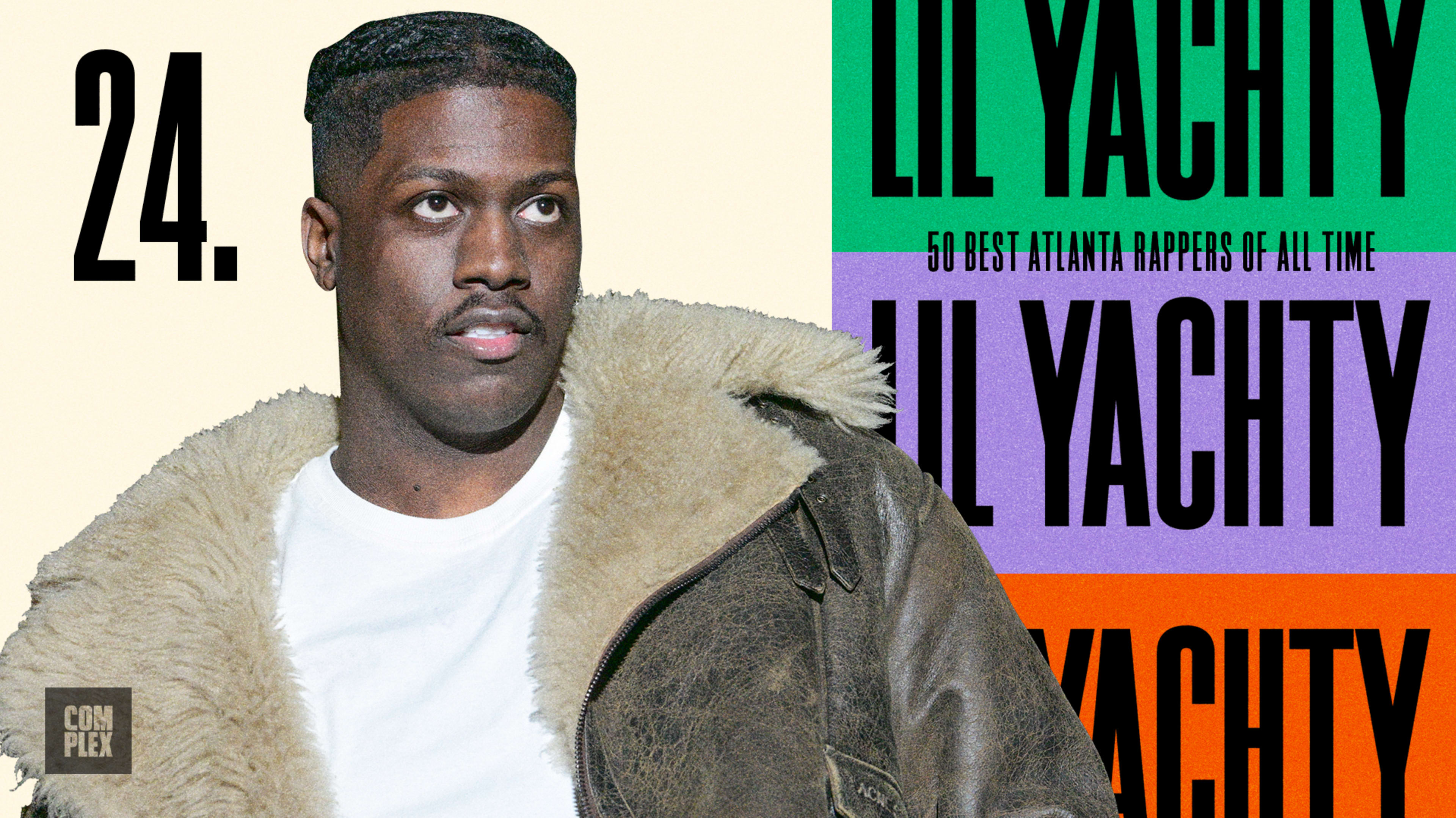
Why They Belong on This List: Evolved from “the face of the youth” to a versatile rap artist who commands serious attention
Commercial success: 22 songs on the Billboard Hot 100 chart, including 2 top 10 hits; 10 projects on the Billboard 200 album chart, including 3 in the top 10
Important Songs: “One Night”; “Poland”; “Broccoli” with D.R.A.M
Seemingly from the start, Lil Yachty was hitting the charts. “One Night,” “Broccoli” with D.R.A.M., and “iSpy” with KYLE all charted on the Billboard Hot 100 within a six-month stretch in 2016. His colorful melodies and tongue-in-cheek bars—which matched his vibrant style, zealous personality, and playful spirit—made him a lightning rod for rap old heads, who saw “the face of the youth” as the face of “mumble rap.” This narrative put Yachty in a box that he was determined to break out of.
What the haters don’t get is that Boat’s superpower is his malleability on the mic. Michigan Boy Boat (2021) is where Yachty really came into his own as an MC, even cutting his trademark red braids to signify this new era. Quieting the legions of doubters who dismissed his technical rap prowess, Boat set fire to the booth while showcasing some of Detroit’s fresh-faced stars in BabyFace Ray, Veeze, Dc2Trill, and others. His ability to push the culture forward while uplifting an emergent scene demanded attention, and it proved Yachty’s influence was ever-apparent when he wanted it to be.
Recently, Boat has ventured further off the sonic coastline—going “left” with the alternative album Let’s Start Here and BAD CAMEO, his collaborative album with James Blake. He’s also become a creative muse for Drake, working on multiple songs with The Boy during the making of Her Loss and For All the Dogs. —Jon Barlas
23. Waka Flocka Flame
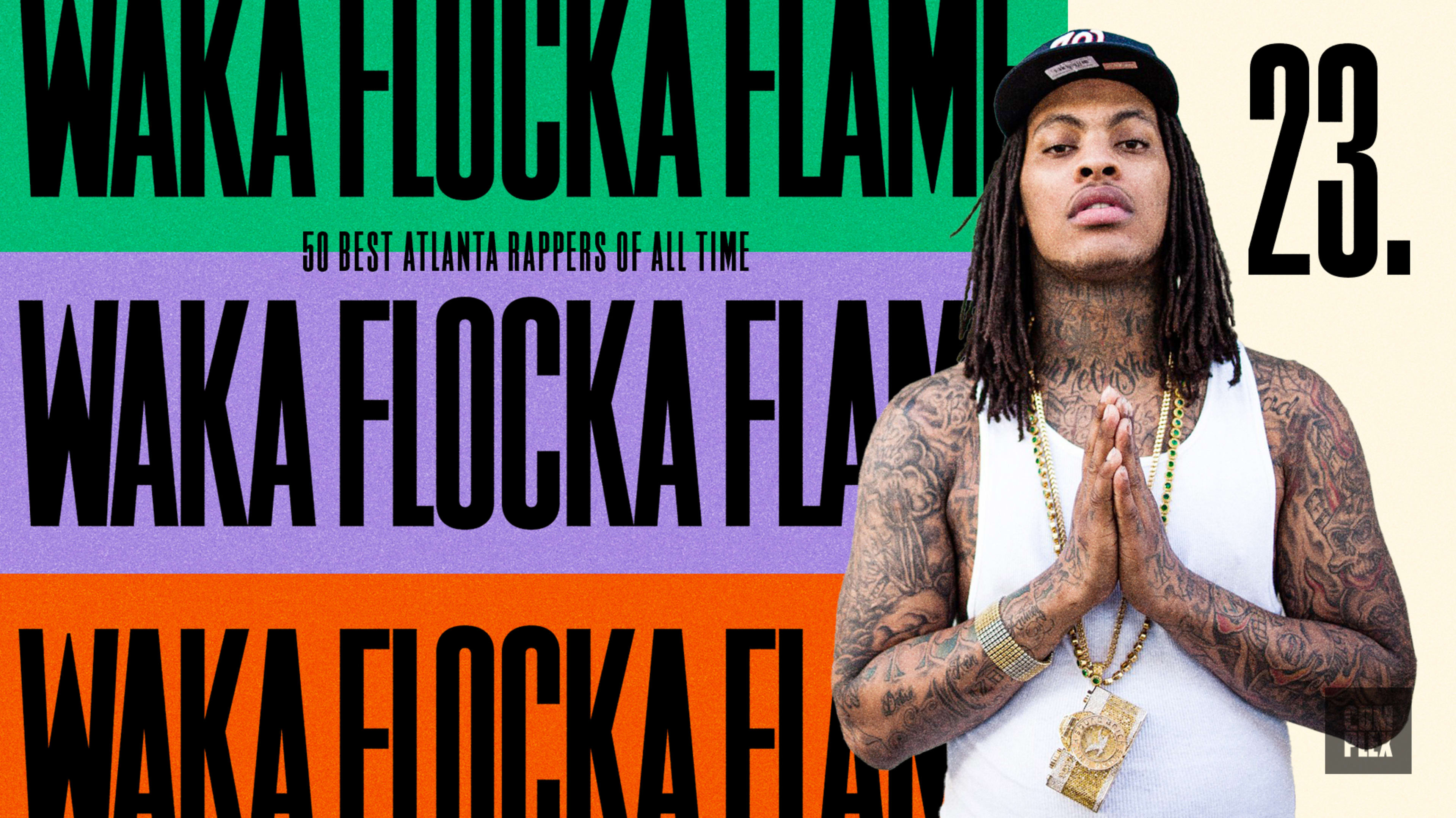
Why They Belong on This List: An important bridge figure in Atlanta’s rap scene, helping transition the sound from crunk in the late 2000s to moshpit anthems in the late 2010s
Commercial success: 7 songs on the Billboard Hot 100 list; 1 diamond single
Important Songs: "Hard in da Paint"; “No Hands” featuring Wale & Roscoe Dash; "Grove St. Party” featuring Kebo Gotti
Known for his pandemonic energy, hit-making prowess, and the ability to utilize an entire undertrack of ad-libs, Waka Flocka stands as a middle child in Atlanta’s rap scene who succeeds pioneers like Pastor Troy and precedes torch-carriers like Playboi Carti.
With guidance from his mother (shoutout to Debra Antney, who previously managed acts like Gucci Mane and Nicki Minaj), Waka broke through in 2009 with a banger called “O Let’s Do It.” The song not only had the city on tilt, but it also brought his jagged edge to Billboard’s Hot 100 chart.
As the wider rap world took notice of his husky, red-blooded authority on the mic, Waka became a staple of every lituation and radio rotation. Catalog standouts like the diamond-selling “No Hands,” "Hard in da Paint" and "Grove St. Party” were stacked on his 2010 Flockaveli. That effort in tandem with LeBron Flocka James, DuFlocka Rant 2, and Triple F Life: Fans, Friends & Family broadcast his knack for delivering classic projects, even if he wasn’t always interested in lyrics—something he happily admitted himself.—Kemet High
22. Shawty Lo
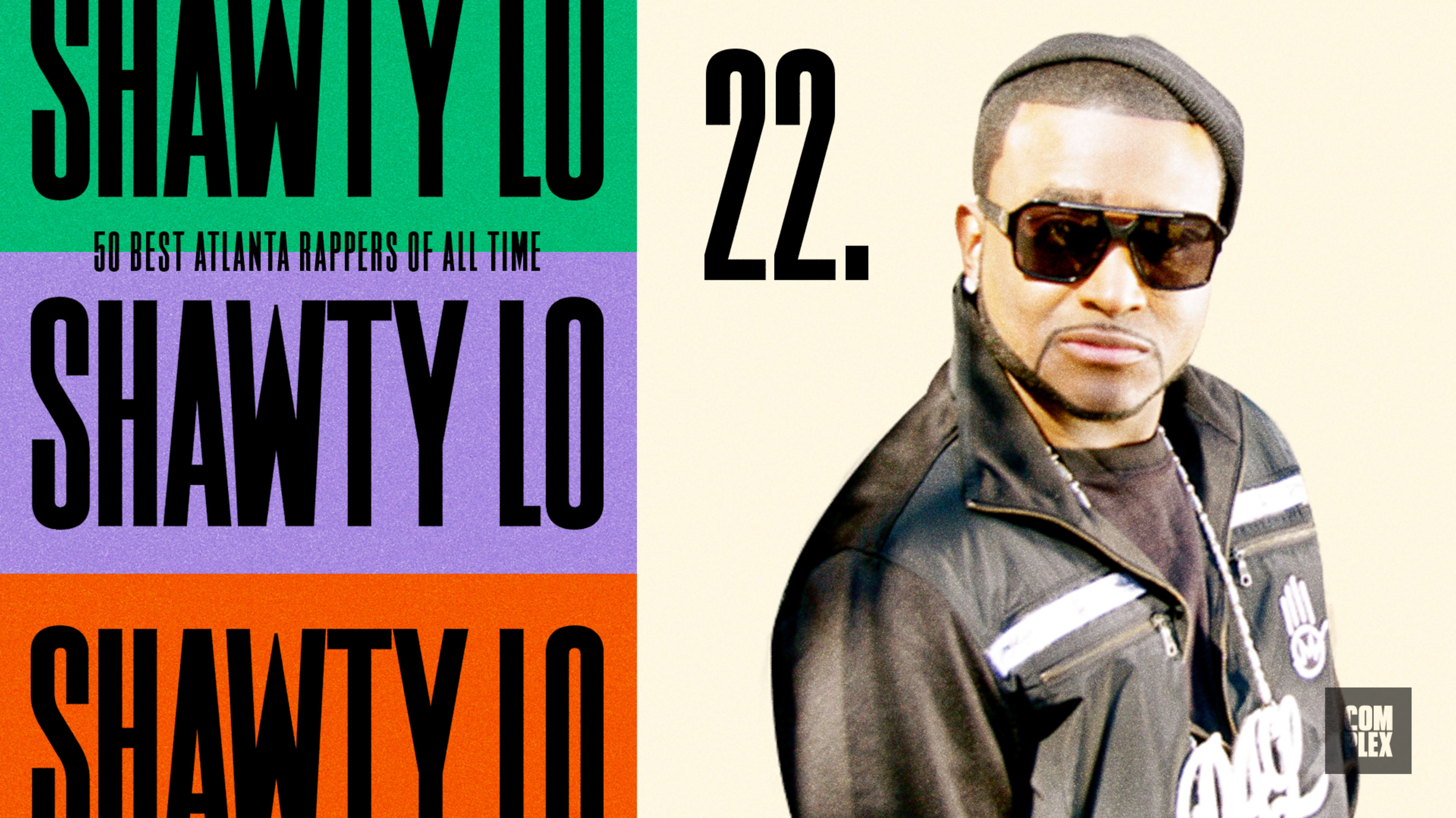
Why They Belong on This List: A true Bankhead legend who was part of two of the city’s most iconic records
Commercial success: 1 No. 1 hit on the Billboard Hot 100 chart with D4L; 2 songs on the Billboard Hot 100 chart as a solo artist
Important Songs: "I'm Da Man"; "They Know (Dey Know)"; "Dunn Dunn"
During a time when Atlanta was experiencing significant population growth, no rapper championed hometown pride quite like Carlos Rico Walker, better known as Shawty Lo.
He was from the Westside of Atlanta—Bowen Homes, a housing project in Bankhead, to be exact. Shawty Lo was somewhat like Atlanta's version of Eazy-E. Both had similarly short statures and fierce street reputations. Both used that equity to sign local acts from the hood. In 2003, Shawty Lo formed the group D4L. Three years later, their smash hit “Laffy Taffy” reached No. 1 on the Billboard Hot 100 charts.
Even though Shawty Lo’s lyrical prowess was limited, he was exceptionally charismatic, with a Jeezy-like talent for creating anthems. Hits like “Dey Know” and, to a lesser extent, “Dunn Dunn,” were early trap smashes largely driven by Lo’s charm. His rise coincided with that of another Atlanta rapper, T.I. This caused conflict, with Lo claiming that T.I. wasn’t from Bankhead. Their feud was highlighted by one of the most memorable videos of T.I.’s career, “What’s Up, What’s Happenin’,” where T.I. famously parked a seat in front of the Bowen Homes, which were torn down in 2009. In the end, cooler heads prevailed and a mutual admission was reached.
Shawty Lo tragically died in a car accident in 2016. T.I. was one of the first to publicly respond, writing, “RIP to a true Westside Atlanta Legend!!!!! You truly represented Bankhead to the fullest!!!” —Dimas Sanfiorenzo
21. Kilo Ali
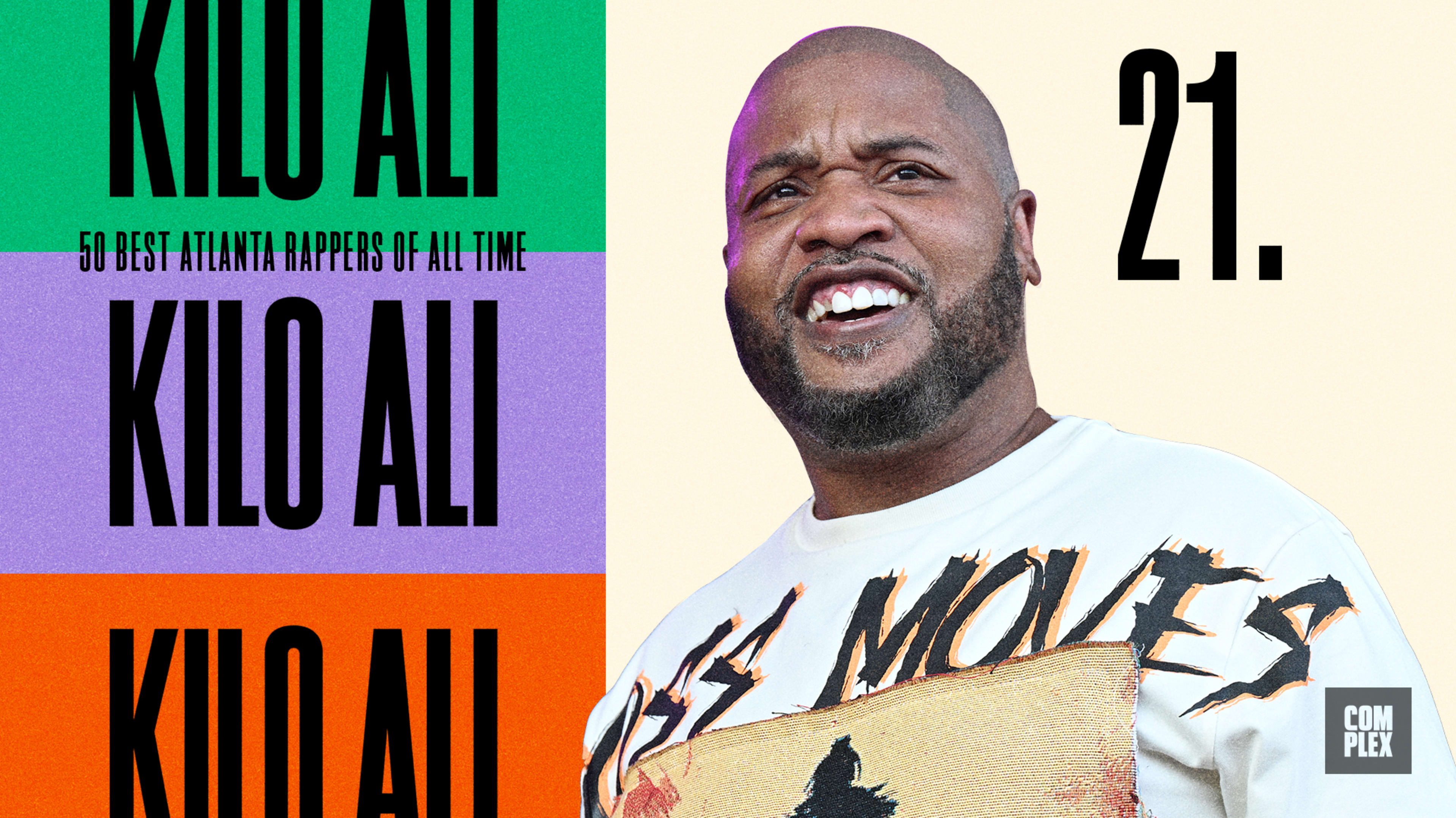
Why They Belong on This List: One of the pioneering figures in Atlanta hip-hop, making waves before the city had an identity
Commercial success: Has had 3 albums appear on the Billboard 200 charts
Important Songs: “America Has A Problem (Cocaine)”; “Baby Baby”; “Love In Ya Mouth”
Before Atlanta was synonymous with dope-dealing trap music, one of the city’s earliest native rappers, Kilo Ali, rapped about the perils of cocaine on his 1991 debut album, America Has A Problem.
The title track was a local hit but largely obscure to the wider world until it was flipped by The-Dream for Beyonce’s Renaissance album, 32 years after its initial release. Kilo’s inventive harmonies and flows created a bridge between Miami bass music and the blooming bounce coming out of Bankhead, inspiring everyone from Ying Yang Twins to NLE Choppa. With a certified classic album, 1997’s Organized Bass, and several staple tracks like “Baby Baby,” Love In Ya Mouth,” and “Nasty Dance,” he should be seen as an architect who designed a plan to be copied. You’ll hear the tempos of tomorrow in his tapping hi-hats and body-moving synth lines, and the melodies of today in his vocals. Kilo Ali should be remembered and revered as the shoulders that Atlanta rap continues to stand on. —Yoh Phillips
20. Gunna
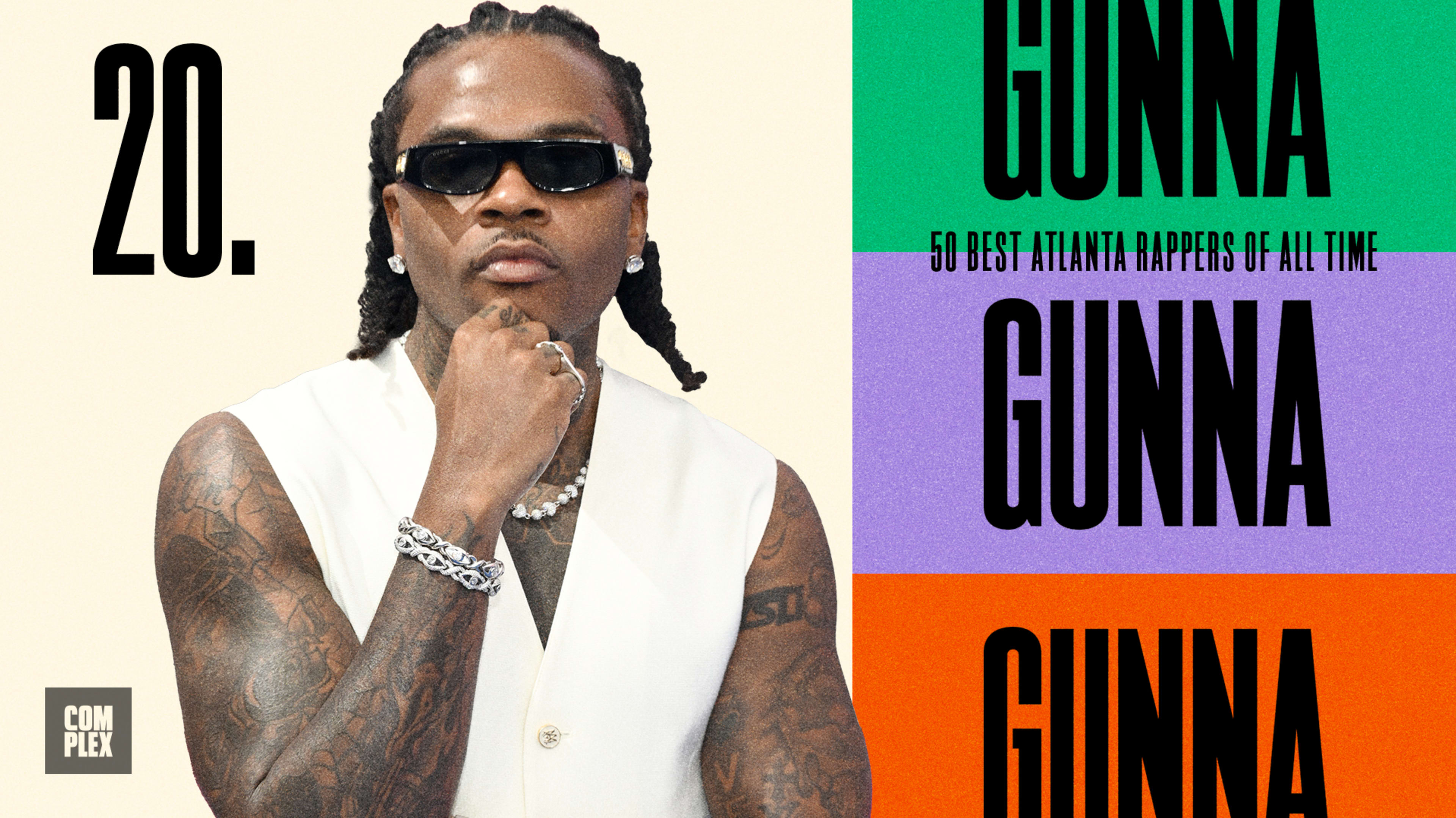
Why They Belong on This List: One of the most popular rappers of the 2020s, releasing a rap classic in the process
Commercial success: 86 songs on the Billboard Hot 100 chart, including 4 top 10 hits; 7 albums on Billboard 200 chart, including 2 No. 1s
Important Songs: “Fukumean”; “Pushin P” with Future & Young Thug; “Drip Too Hard” with Lil Baby
Gunna came onto the scene with a syrupy flow that left you stuck to every verse and hook. A prodigy of Young Thug, he was never as eccentric as Jeffery was, but he was the perfect right-hand man; Thug ran hot while Gunna carried a level of coolness and composure that helped catapult him to real commercial success.
As his career went on, Gunna developed into one of the great rap hitmakers of our time. “Drip Too Hard,” “Never Recover,” “Pushin P,” and “Fukumean” were real fucking smashes, all carried by the slick-tongued hook maestro.
His creative superpower is what helped him overcome even the most damning label in rap: “snitch.” In 2022, Gunna was arrested in the YSL RICO case and then later disparaged by some of his contemporaries after he took an Alford plea. As a result, Wunna, who was once one of the more collaborative rappers out there, has embraced a lone-wolf stance over the last couple of years. And he’s thriving: His fourth studio album, Gift & A Curse, is one of the great comeback rap albums of all time, while the follow-up, One of Wun, is a solid addition to the catalog..—Jordan Rose
19. Takeoff
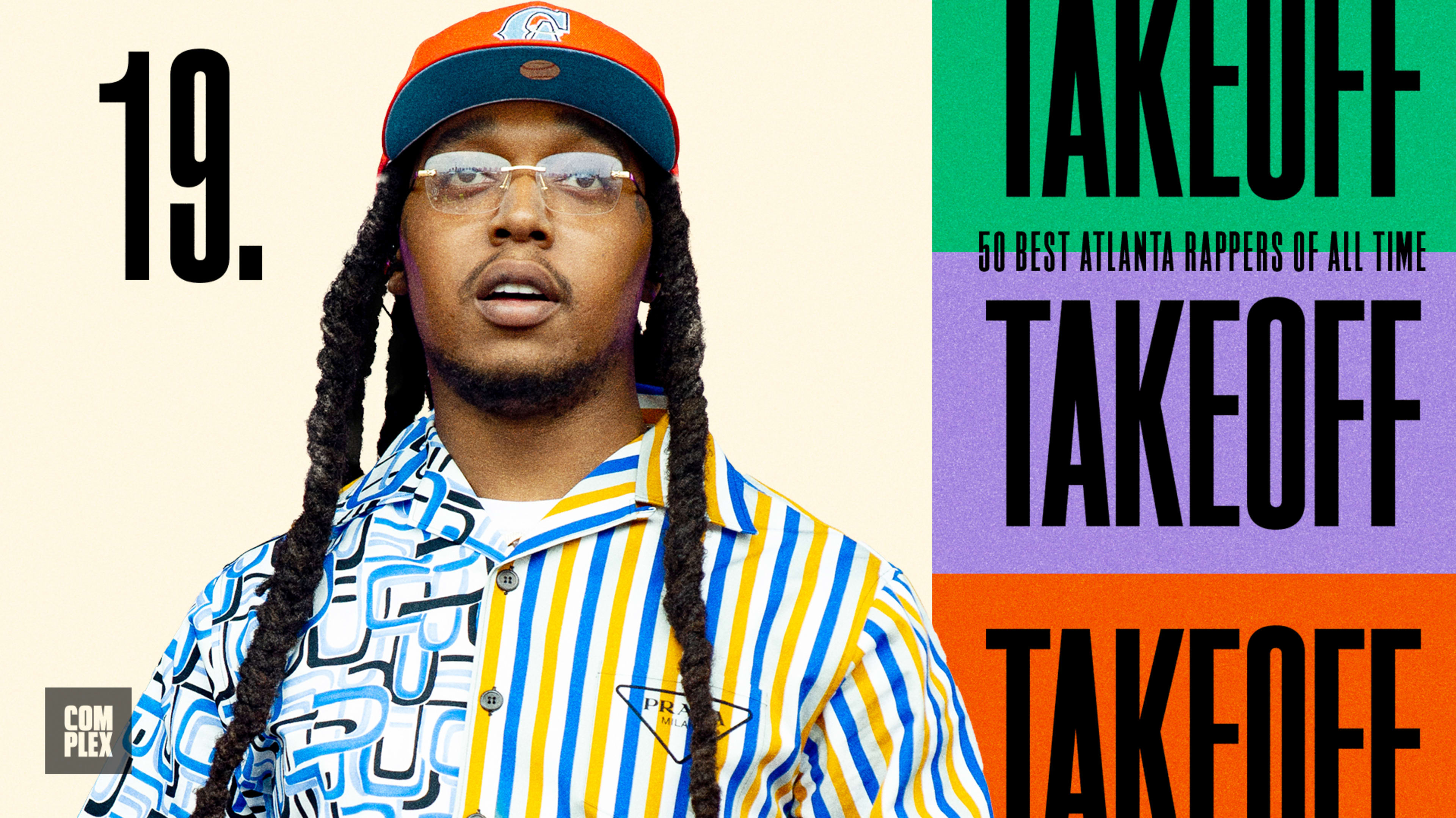
Why They Belong on This List: The best pure lyricist in Migos
Commercial success: 3 top 10 songs on Billboard Hot 100 as a part of Migos; 2 No. 1 albums as a part of the Migos; 7 songs on Billboard Hot chart 100 as solo artist; 2 top 10 albums on Billboard 200 chart as solo artist
Important Songs: “Hotel Lobby” with Quavo; “Casper”; “Fight Night” as part of Migos
Takeoff beamed with a level of sharpness and precision that rightfully earned him the title “best technical rapper in the Migos.” As the youngest member of the group, Takeoff separated himself from his partners with his lyrical somersaulting, fluttery flows, and echoic ad-libs (“MOMMA!”). While Atlanta emerged as the best city in rap in the 2010s, Takeoff helped bring the spotlight back on the city’s lyrical firepower in a way that hadn’t been celebrated since T.I’s peak in the mid-2000s. The Migos’ oft-imitated triplet flow—which was heavily indebted to Lord Infamous—was really the flow that Takeoff developed and eventually mastered. As Migos evolved into one of the defining pop acts of the mid-2010s, Quavo and Offset would focus more of their energy on melody and anthems. Takeoff, however, remained committed to his rapid-fire rapping style.
His life and career were unfortunately cut short in November of 2022, but his contributions are enduring. Whether you zero in on his role within the Migos, next to Quavo under the duo Unc and Phew, or as a solo act (see The Last Rocket), his status in the rap game won’t change—even if he wasn't on "Bad and Boujee."—Kemet High
18. Lil Jon
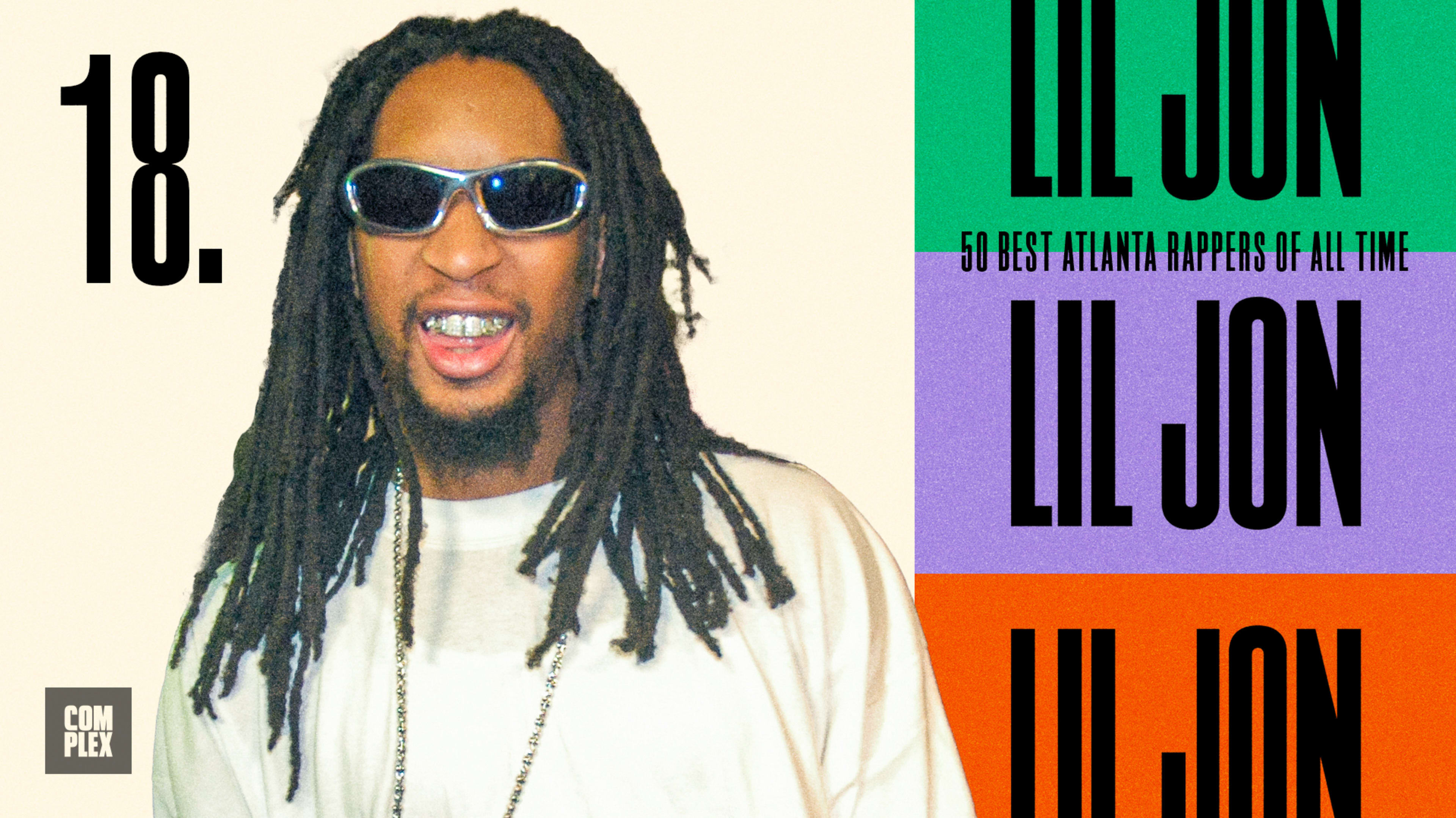
Why They Belong on This List: One of the great rap forces of the 2000s as a leader of the crunk movement
Commercial success: 23 songs on the Billboard Hot 100, including 1 No. 1 hit and 9 top 10 singles; 6 albums on Billboard 200 chart
Important Songs: "Who You Wit?" and "Shawty Freak a Lil' Sumthin" as part of Lil' Jon & The East Side Boyz; "Get Low"[ with The East Side Boyz featuring Ying Yang Twins
Lil Jon is more than just a Dave Chappelle skit; he’s a legendary rapper, DJ, producer, and radio personality who put crunk music on the map. If you had a pulse in 2004, chances are he had you shouting “WHAT!” at the top of your lungs.
His rise to fame didn’t happen overnight. He fronted Lil Jon & The East Side Boyz, a group that included childhood friends Big Sam and Lil Bo. They were indie stars with club hits like "Who You Wit?," "Shawty Freak a Lil' Sumthin" and "Bia Bia" getting major burn in the city. However, they became bona fide superstars with the release of “Get Low” featuring the Ying Yang Twins and their double-platinum album Kings of Crunk, which elevated crunk music to new heights and helped place Atlanta at the forefront of hip-hop.
While he may not be known for complex lyricism, his call-and-response technique, repetitive chanting, and high-energy ad-libs have left a lasting impact on Southern rap. For that, Lil Jon deserves an “OKAYYY!”—Kyesha Jennings
17. Jermaine Dupri
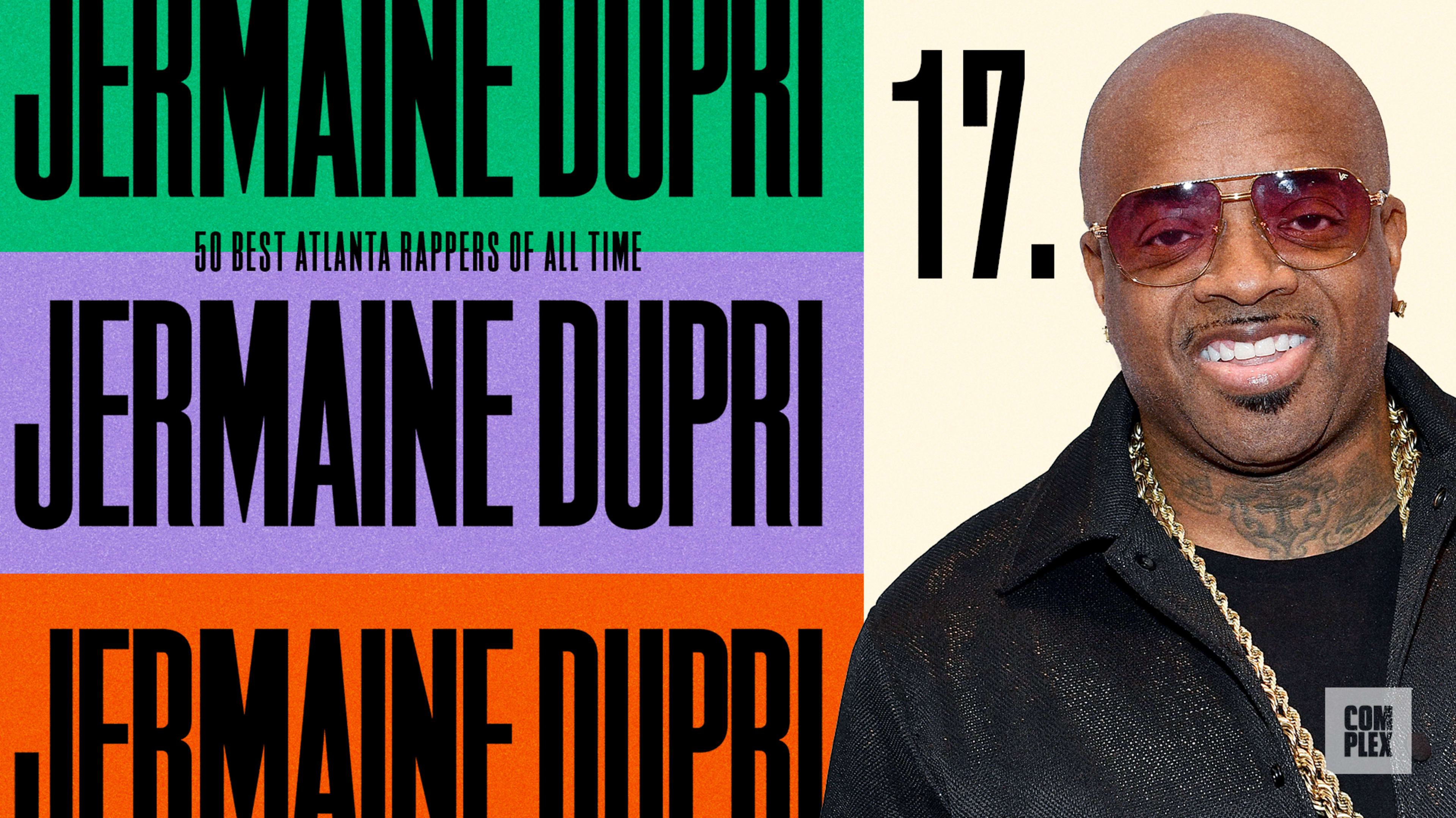
Why They Belong on This List: "One of the most important figures in Atlanta hip-hop history; creator of one of the city's greatest anthems
Commercial success: 1 album with a top 3 debut on the Billboard 200 chart as a solo rapper
Important Songs: “Money Ain’t a Thang” with Jay-Z; “Turn It Out” featuring Nas; “Welcome to Atlanta” with Ludacrus
JD’s position on a list like this is tricky. He is, undoubtedly, one of the most important figures in Atlanta hip-hop history, and a person who’s done it all: danced for Whodini, wrote raps for pioneering Atlanta hip-hop group Silk Tymes Leather, discovered Kris Kross, co-founded one of the greatest hip-hop labels of all time, and crafted countless classic Atlanta rap records.
However, ranking Jermaine Dupri purely as a rapper presents a different challenge. He is exactly what you’d expect from someone who realistically wears the titles of mogul and producer before rapper. Still, he’s done enough to earn a top-20 spot here, particularly because, over multiple decades, he’s been inseparable from the rise of Atalnta hip-hop.
He gave a city known for making great anthems one of its greatest with “Welcome to Atlanta” featuring Ludacris. And his 1998 solo debut, Life in 1472, is like the Dirty South version of No Way Out—an album featuring almost every popular ’90s rapper squarely in their prime playing to their strengths, with JD wisely adapting to fit in. (Tired: JD and Jay-Z talking cash shit on “Money Ain’t a Thang.” Wired: JD and Nas talking jiggy shit over Kanye West’s first major-label beat on “Turn It Out.”) —Dimas Sanfiorenzo
16. CeeLo Green
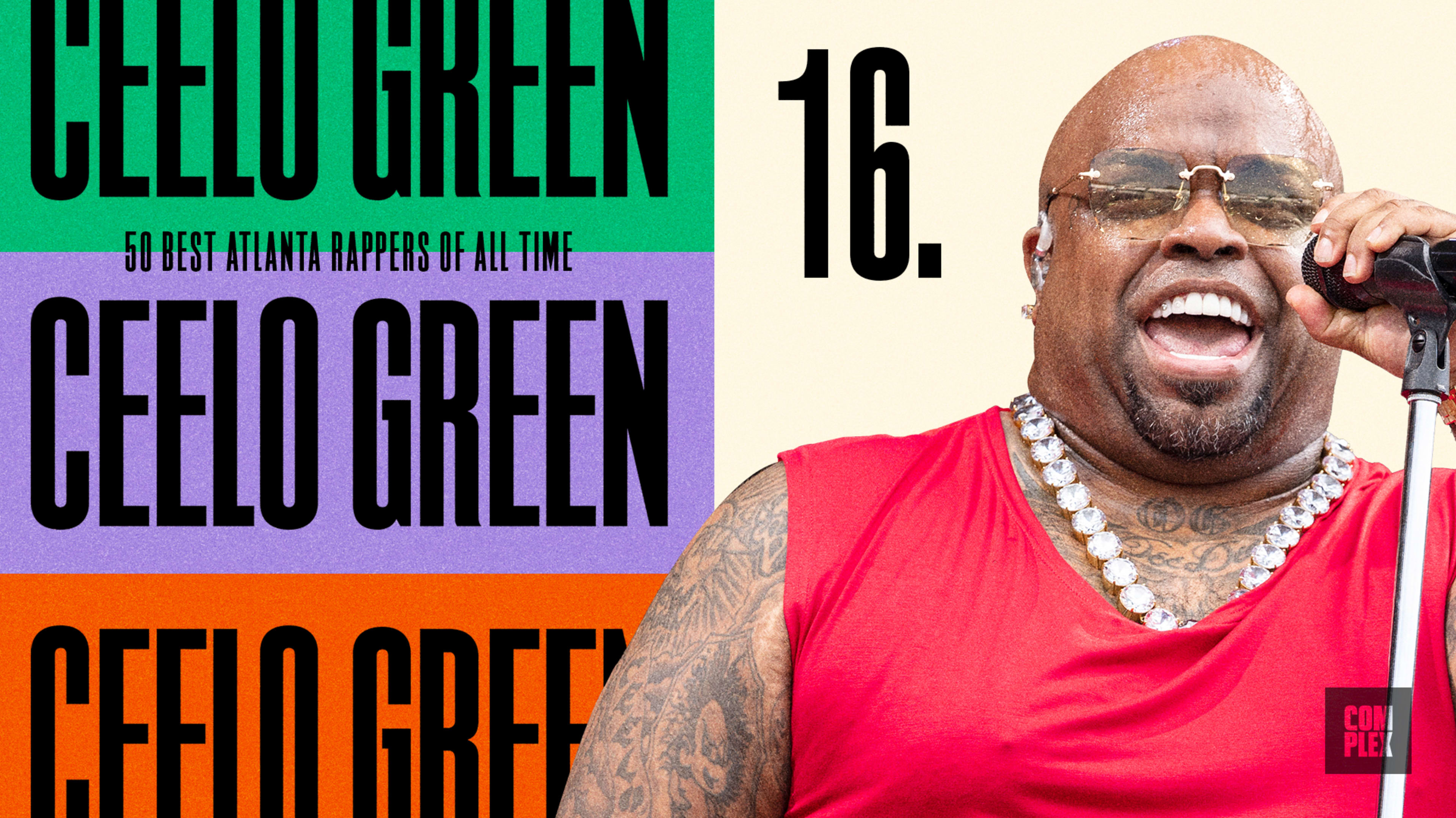
Why They Belong on This List: The spiritual and lyrical core of Goodie Mob, one of the most important Atlanta rap groups of all time
Commercial success: 5 songs on the Billboard Hot 100 as a solo artist, including 1 No. 1; 5 songs on Billboard Hot 100 with Goodie Mob; 5 albums on Billboard 200 chart as part of Goodie Mob; 4 albums on Billboard 200 chart as solo artist
Important Songs: “Git Up, Git Out” with OutKast & Big Gipp; “Decisions, Decisions” as part of Goodie Mob, with DJ Muggs; “Big Ol Words (Damn)”
Most rappers introduce themselves to the world by talking about themselves, but when CeeLo Green made his entrance into the rap game on Outkast’s 1994 anthem “Git Up, Git Out” he set himself apart by talking to himself.
The verse, inspired by conversations with family members about the direction of his life at the time, set the tone for a career grounded in honest accounts of everyday life. Resurfacing a year later as one-fourth of pioneering Southern hip-hop quartet Goodie Mob, CeeLo showcased an exceptional ability to bring the church to the cypher, making heads bow ( “I Didn’t Ask to Come”) and nod (“Goodie Bag”).
He’d continue standing out on Goodie’s follow-up, 1998’s Still Standing, delivering tear-jerking performances like “I Refuse Limitation,” where he describes “the cycle” to the letter, earning him a third coveted “Hip Hop Quotable” honor from The Source. (The first was “Git Up, Git Out” and the second was his masterclass on “Decisions, Decisions,” featured on DJ Muggs’ Soul Assassins compilation a year prior.)CeeLo’s skills earned him respect in hip-hop circles, but it wasn’t until he made the decisionto rap less and sing more that his star really began to rise on a national mainstream level. His 2002 and 2004 solo albums ...and His Perfect Imperfections and ...is the Soul Machine begat his second act as a pop/soul singer and half of Gnarls Barkley.
Through it all though, CeeLo still reminded us that he is one of the best to ever bless a microphone, with no greater examples than his lyrical clinics on songs like “Big Ol Words (Damn)” and “One For The Road.” On the former, he quipped: “Now I don't want never hear nobody else say ‘Goddamn a nigga from the South can't rhyme’…NEVER!” —Maurice Garland
15. Quavo
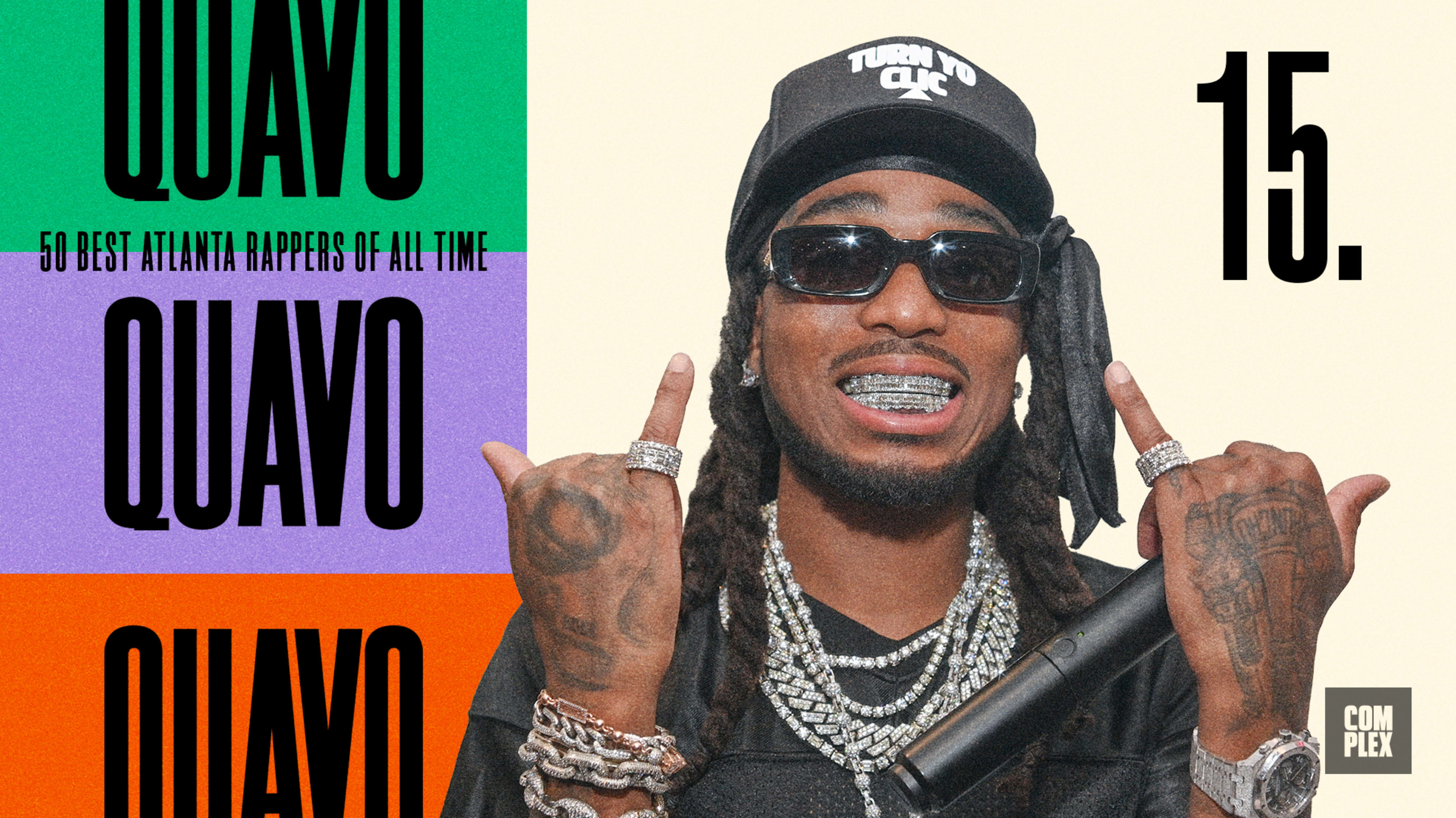
Why They Belong on This List: The immediate breakout star of Migos; one of the most reliable collaborators in hip-hop
Commercial success: 1 No. 1 single and 4 top 10 singles as a part of the Migos; 2 No. 1 albums as a part of the Migos; 34 songs on the Billboard Hot 100, including 1 No. 1 hit, as a solo artist; 3 top 20 albums on Billboard 200 chart as a solo artist
Important Songs: “Versace” & “T-Shirt” as part of Migos; “Congratulations” with Post Malone
If you asked someone in 2013 who the best member of Migos was, they would have said Quavo. During the early days of the group’s rise, when Offset was still in jail and Takeoff was still very shy off the mic, Quavo gladly took on the mantle as the group’s frontman. He was a natural-born star: flossy, charismatic, and a real spitter, although not the best technical rapper in the group (that would be Takeoff.) He was also the first voice you heard after Drake on “Versace (Remix).”
Most importantly, he knew his way around a chorus, a talent that helped propel the group into the mainstream spotlight. While Takeoff excelled at the triplet flow (a style all members of the group employed), Quavo mastered the earworm hook, delivering phrases rapidly and aggressively until you couldn’t get them out of your head. (e.g. “Hannah Montana,” “Versace, Versace,” “Chinatown, Chinatown”).
Over the years, Quavo leaned more into melody while having some of the best guest appearances of the decade, including verses on Travis Scott’s classic “Pick Up the Phone,” Post Malone’s career-saving “Congratulations,” and Calvin Harris and Frank Ocean’s pop hit “Slide.” Slowly but surely he’s gotten into the habit of making solid solo albums, with his 2023 Takeoff tribute, Rocket Power, standing out as his best individual project to date. —Jon Barlas
14. Killer Mike
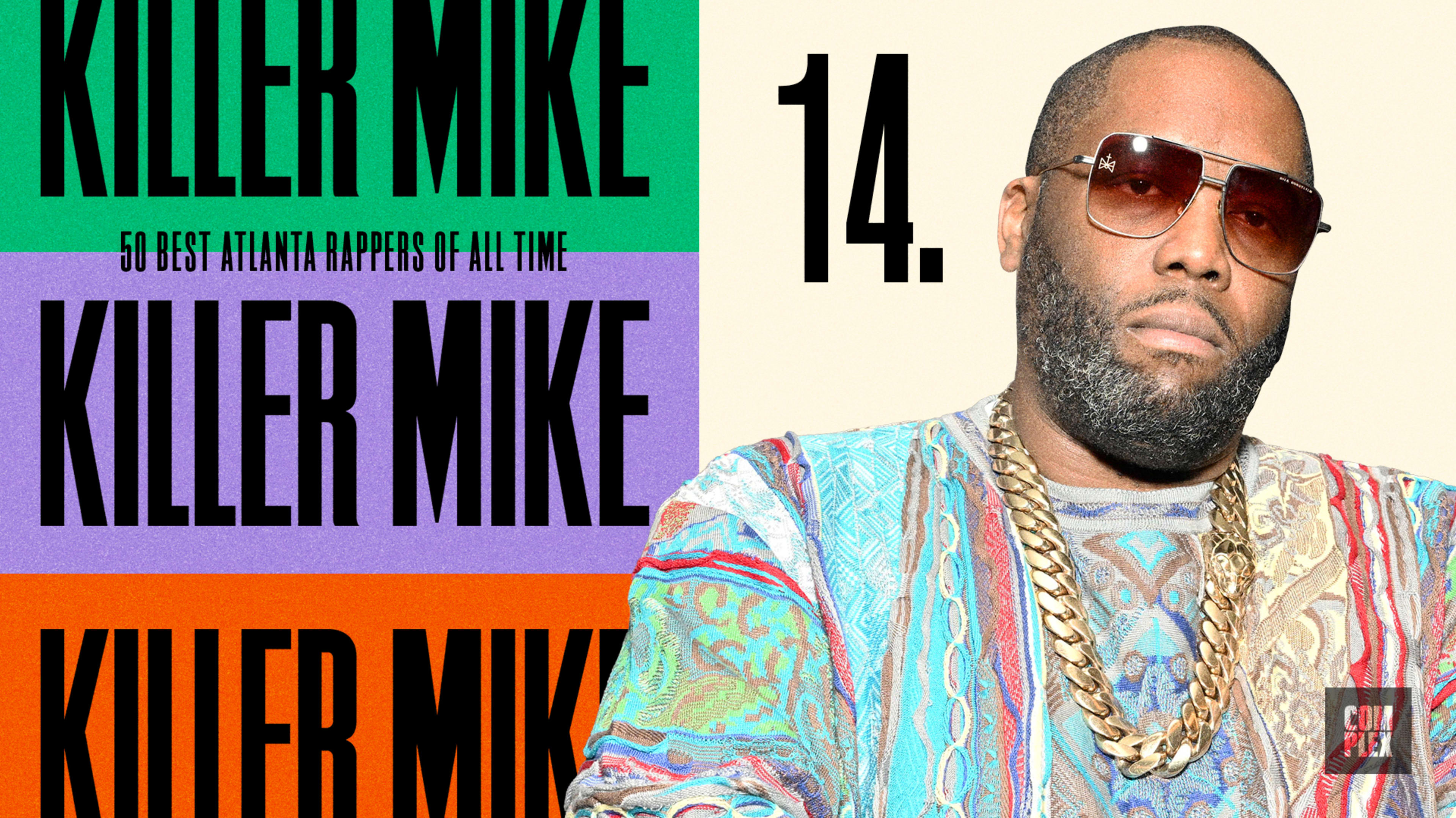
Why They Belong on This List: A long distinguished career, from the major-label system to an indie grind to winning multiple Grammys
Commercial Success: 3 songs on the Billboard Hot 100 chart as a solo artist; 5 albums on the Billboard 200 chart as a solo artist, including one top 10; 3 albums on Billboard 200 chart with Run the Jewels
Important Songs: “The Whole World” with Outkast; “Legend Has It” as part of Run the Jewels; "Scientists & Engineers" featuring André 3000 & Future
Few rappers speak truth to power as effectively as Killer Mike. The politically minded MC is Atlanta’s equivalent to Ice Cube—a booming voice reporting on the front lines of America. You can hear it in how he dismantles the devastating legacy of Reaganomics on 2012’s “Reagan,” or in the heartbreaking police-brutality narration on Run the Jewels’ 2014 track “Early.” Michael Render is a lyrical technician whose urgent delivery and incisive perspective took criminally long to be acclaimed by the world at large.
The Adamsville representative's roots trace back to the Dungeon Family, a lineage that led to early shine on OutKast’s 2001 single “The Whole World” and Purple Ribbon All-Stars’ “Kryptonite (I'm on It)” in 2005. But after years of toiling the indie circuit, Mike found a musical kindred spirit in producer/rapper El-P, who helmed the production on the bona fide classic R.A.P. Music in 2012 before the duo dropped an increasingly dope series of eponymous releases as Run the Jewels. Killer Mike was always a mic killer, but he’s gotten even sharper with age. His 2023 album, Michael, is a candid origin story that delves into the loss of maternal figures and features one of the most empathetic depictions of drug addiction you’ll ever hear (“SOMETHING FOR JUNKIES”). At 48 years old, he took home three Grammys for that project. Somehow, more than two decades deep into his career, it feels like Killer Mike is just getting started. —John Kennedy
13. Offset
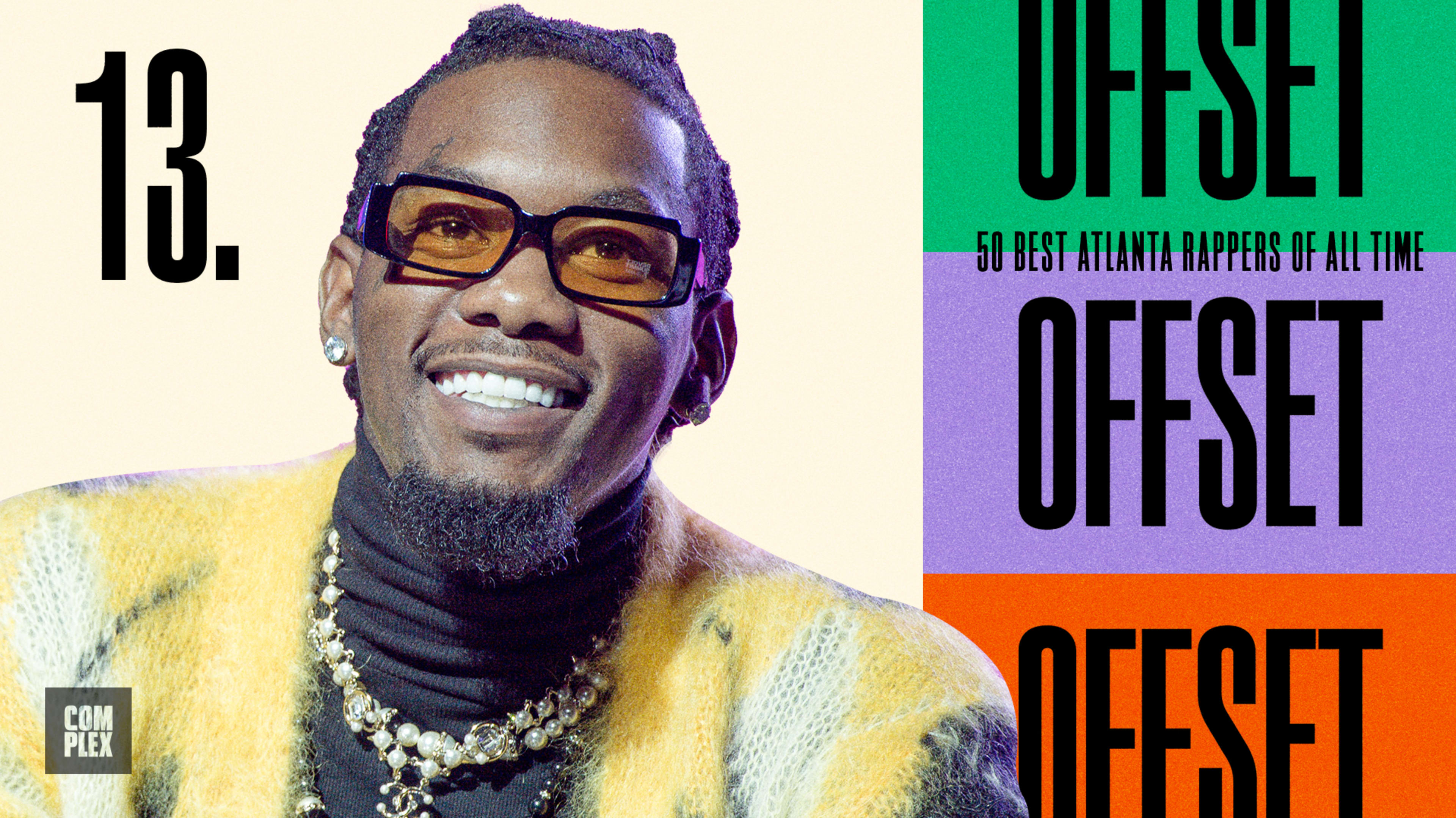
Why They Belong on This List: Breakout star of one of the greatest rap groups of all time
Commercial success: 1 No. 1 single and 4 top 10 singles as a part of the Migos; 2 No. 1 albums as a part of the Migos; 29 songs on the Billboard Hot 100 as solo artist, including 2 top 10 hits; 3 top 5 albums on Billboard 200 chart as solo artist
Important Songs: “Bad and Boujee” with Migos featuring Lil Uzi Vert; “Ric Flair Drip” with Metro Boomin & 21 Savage; “Clout” with Cardi B
After spending time behind bars right in the midst of Migos’ ascent, Offset had to play catchup. He made up for lost time on the 2016 classic “Bad and Boujee,” five-and-a-half minutes of trap-music mastery that represent not only Migos’ song-making zenith, but also the start of Offset’s star-making turn. All of his best attributes are on full display: the made-to-be-memed opening couplet, matter-of-fact materialism, hypnotic staccatos, animated adlibs, and onomatopoeias. It was no fluke, either. ’Set is a magnetic force on Migos’ Culture, a No. 1 album that also features undeniable singles (“T-Shirt,” “Slippery”) and fan favorites (“Call Casting”). By the time the Lawrenceville slugger linked with 21 Savage and Metro Boomin in 2017 for Without Warning, it was clear as a VVS diamond that Offset could shine on his own.
Offset brings an effortless style and swagger to every track he graces, whether on features (Gunna’s “Prada Dem,” Kodak Black’s “Zeze,” Tyga’s “Taste”), solo bangers (“Ric Flair Drip”), or group projects (Migos’ “Straightenin”). Offset easily has the strongest catalog among the Migos. What sets him apart as one of this generation’s elites is his irresistible flow; he finds pockets better than most pool sharks. When he pairs that agility with rhymes that step outside the borders of bando clichés and high-fashion flexes—especially evident on 2019’s Father of 4—Offset is miles ahead of the pack. —John Kennedy
12. Playboi Carti
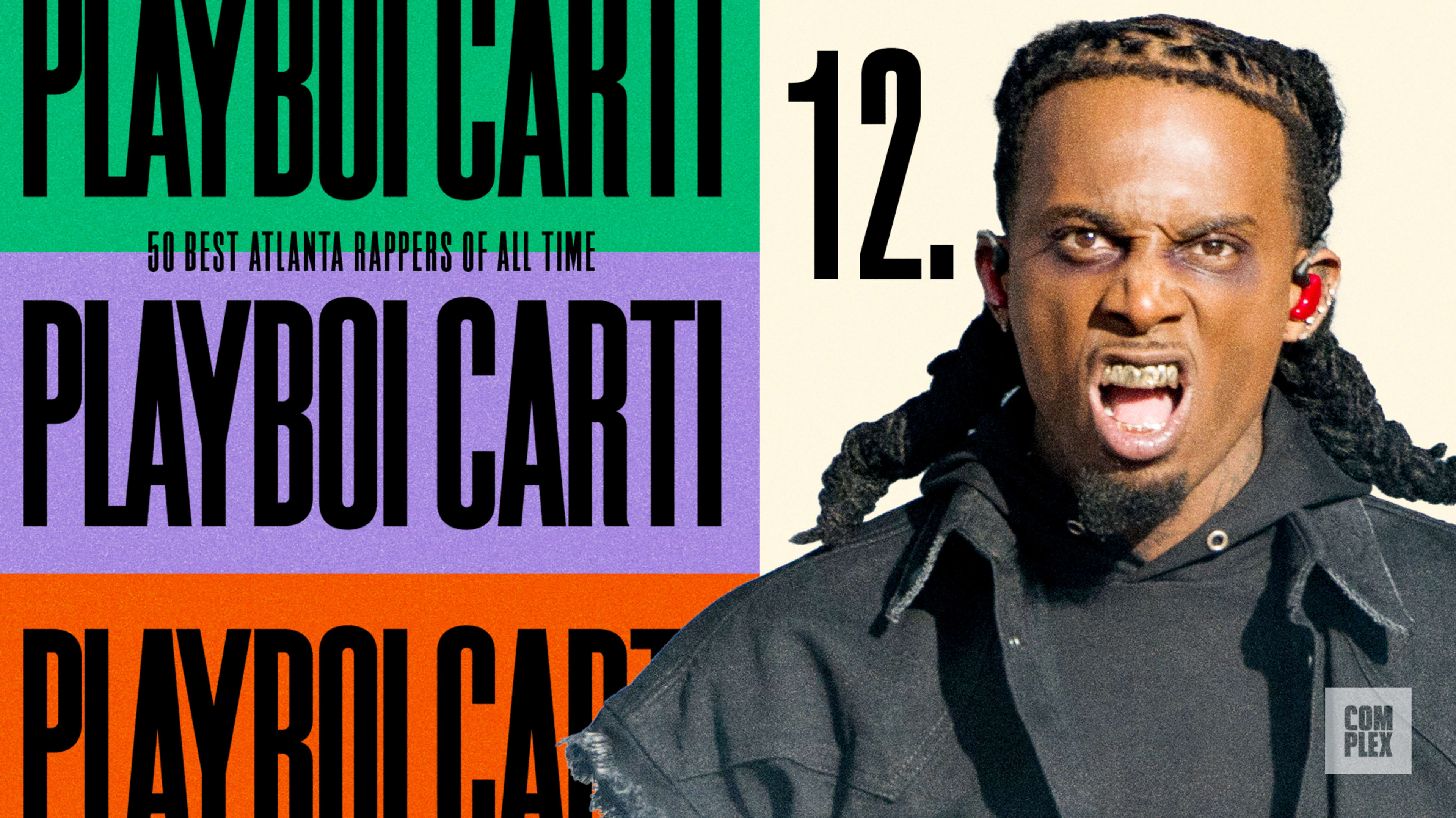
Why They Belong on This List: A true evolutionary figure for the Atlanta rap scene and the most influential rapper from Atlanta since Young Thug
Commercial success: 20 songs on Billboard Hot 100 chart, including 4 top 10s and 1 No. 1; 3 albums on Billboard 200 chart, including 2 top 10s and 1 No. 1
Important Songs: "Magnolia"; "Stop Breathing"; “FE!N” with Travis Scott
If you believe in the term "mumble rap," you might say Playboi Carti elevated it to its abstract, artful extreme. Young Thug squealed so Carti could make baby voices. Carti’s unorthodox style helped artists like Ken Carson fly. After first emerging as part of the Awful Records collective and subsequently gaining attention as an A$AP Mob affiliate, Carti made a name for himself with rhythmic yelps, dazed shouts, and vibey soundscapes, swirling them together for a radical, punk-inflected trap apocalypse.
Tracks like the double-platinum-selling "Magnolia" collapse the distance between snap music, the bando, and the arcade. Whereas Future and Thugger still often looked to communicate clear messages in their music, Carti has prioritized emotions and sensations, with his lyrics gradually melting into shades of color rather than solid shapes. Following his self-titled commercial debut, 2018's Die Lit doubled down on the formula, and 2020's Whole Lotta Red reimagined it, with Carti's baby voice and glitchy, lo-fi soundscapes setting a new benchmark for weird. Just as the whole rap world had adopted largely flavorless versions of Atlanta's melodic, free-associative raps, Carti flipped it for something more off-kilter and interesting. As of Ye's "Carnival" and Future & Metro Boomin's "Type Shit," he's done it again, flaunting a sludgy vocal approach that's as strange as it is engrossing. Ahead of his new album—whenever the hell it drops—the world, including his fanatical fanbase, awaits his next sonic shapeshift, which will likely continue his tradition of dictating a new rap avant-garde.—Peter A. Berry
11. 21 Savage
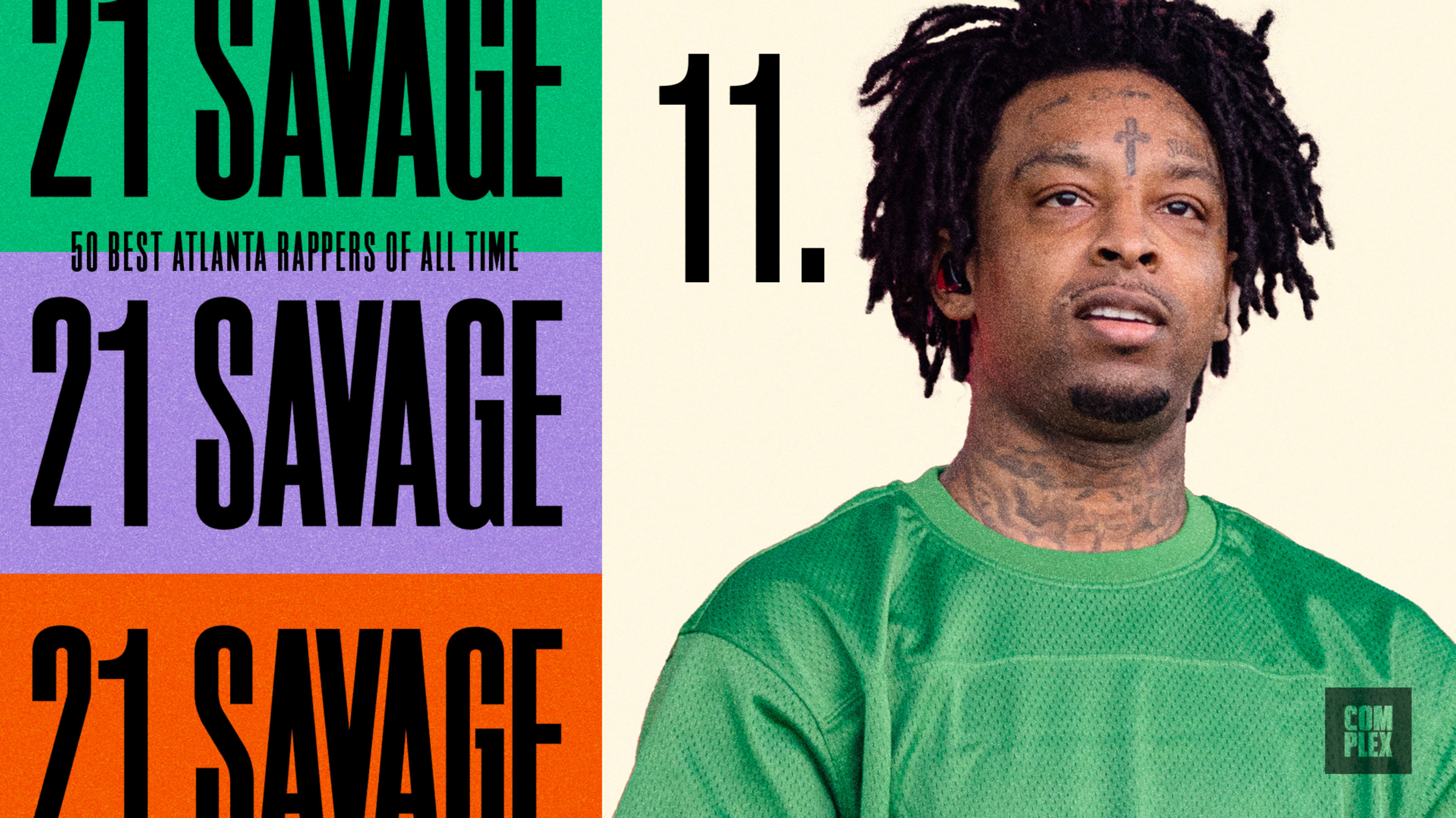
Why They Belong on This List: Somehow transitioned from making murder music to being one of the biggest rappers in hip-hop
Commercial success: 103 songs on the Billboard Hot 100 chart, including 2 No. 1 hits; 7 albums on the Billboard 200 chart, including 6 top 10s and 4 No. 1s
Important Songs: “No Heart”; “A Lot” featuring J. Cole; “Rich Flex” with Drake
We often find ourselves rooting for the bad guy, and few exemplify this persona better than 21 Savage, who has excelled at playing the villain in his music, using his monotone but menacing voice, morbid topics, and creaky production to make songs that can soundtrack horror movies.
21 has been dead serious since he came to the scene in 2015 with early mixtapes like The Slaughter Tape and Savage Mode (entirely produced by Metro Boomin). But as his career advanced, it became clear 21 contained multitudes. The Atlanta rapper’s first Billboard No. 1 album, I Am > I Was, showcased more than just murder music, with rare vulnerable moments like when he talked about his relationship with his mom (on “letter 2 my momma”) or lamented old acquaintances who turned on him (”all my friends.”) This period ended up being a turning point for 21: two months after releasing I Am > I Was, he was arrested by ICE in February 2019 and it was revealed he was a British citizen who overstayed his visa. (He eventually secured his green card in 2023.)
The aftermath of the case ignited a creative spark in 21. That initial darkness is still in his music but we’re seeing new sides: Savage Mode II contains a cheeky appearance from Morgan Freeman, while his Drake collabo album, Her Loss, features 21 in his hitmaking bag. It all culminated with this year’s American Dream, which is the perfect mix of all the facets of 21—introspection, humor, and just a little bit of murder.—Jordan Rose
10. Lil Baby
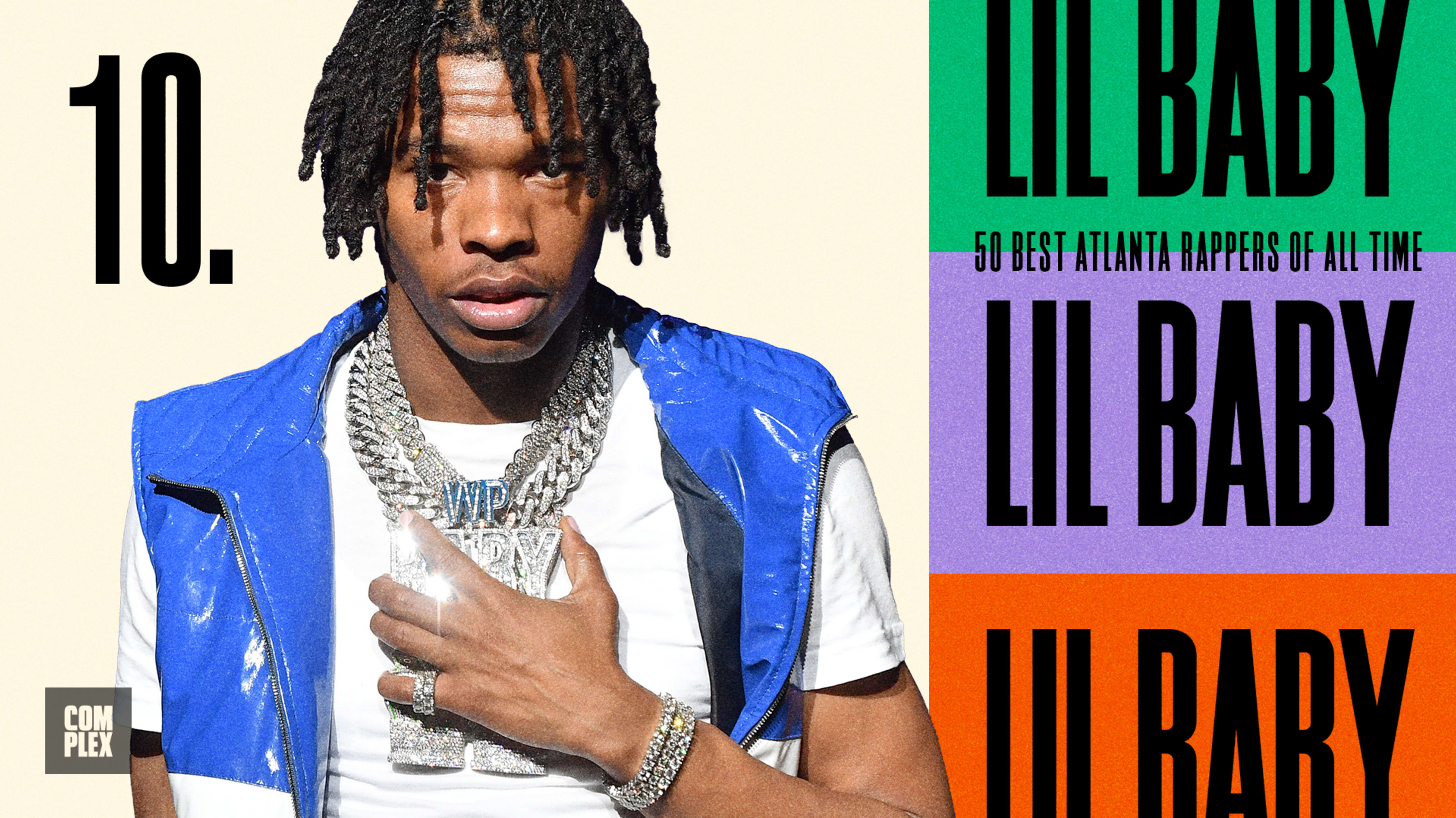
Why They Belong on This List: Had a run in 2019-20 where he could make a legit claim to be the hottest rapper in the world
Commercial success: 141 songs on the Billboard Hot 100 Billboard chart, including 13 top 10s; 7 albums on Billboard 200 chart, including 6 top 10s and 3 No. 1s
Important Songs: “We Paid” with 42 Dugg; “Drip Too Hard” with Gunna; "Emotionally Scarred"
It feels like a while ago now, but for about a year or so—around 2019 through the first year of the pandemic—Lil Baby was the Best Rapper Alive. Schooled by Gunna and supported by Young Thug, he took over Atlanta and hip-hop at large with a muted brand of agile murmurs that turned single couplets into self-contained micro-hooks. When combined with his signature staccato flow, you're left with a modern double threat who has guaranteed himself a standing place on the Billboard Hot 100.
Between 2018 and 2024, he landed a staggering 141 tracks on the Billboard charts. The placements came through both solo singles and a Weezyian feature streak. His albums have made a similar commercial impact; his debut, My Turn, is certified quadruple-platinum, and It's Only Me has also sold over one million equivalent album units. Just as importantly, he’s a stylistic link in a chain that began with Future, helping reinforce the aesthetic that remains the essence of modern Atlanta. His It's Only Me album cover, which features four faces of Baby on Mount Rushmore, might have seemed arrogant, but with his indelible anthems and chart dominance, Lil Baby's space as one of the greatest Atlanta rappers is well-deserved.—Peter A. Berry
9. 2 Chainz
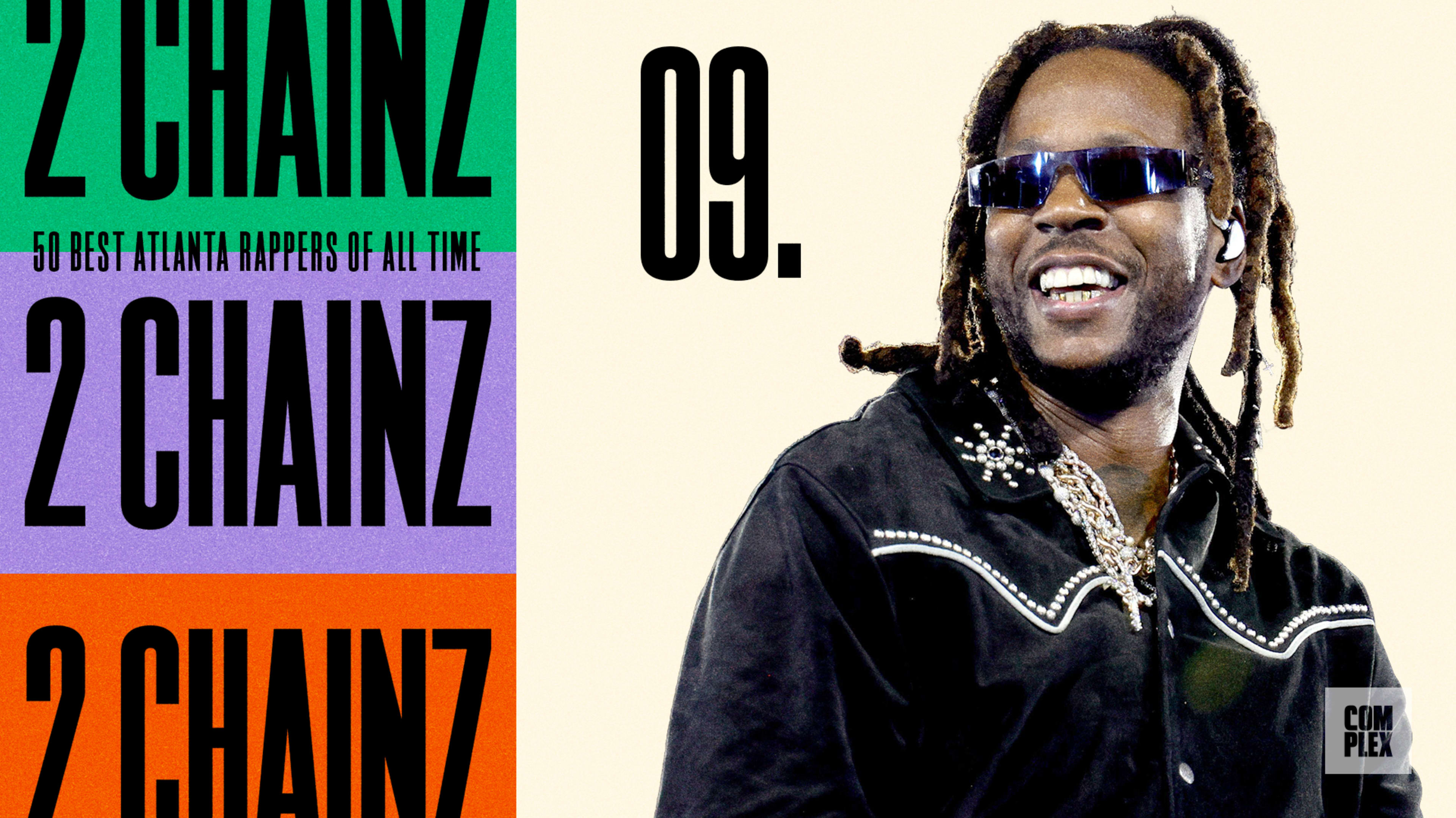
Why They Belong on This List: One of the most prominent and lyrically gifted rappers of the 2010s
Commercial success: 40 songs on the Billboard Hot 100 chart, including 2 top 10 hits; 10 albums on the Billboard 200 chart, including 5 top 10s and 1 No. 1
Important Songs: “Duffle Bag Boy” as part of Playaz Circle; “I'm Different”; “No Lie” with Drake
2 Chainz has had two rap lives, starting off as Tity Boi, one-half of Playaz Circle. While “Duffle Bag Boy”—which features an elite appearance from Lil Wayne—is GOATed, it’s his career following the Tity Boi era that cements 2 Chainz as one of the 10 greatest Atlanta rappers of all time. After Playaz Circle disbanded, 2 Chainz emerged as a swaggering force known for dominating every feature appearance with his presence and witty punchlines. Yes, he released classic tapes (T.R.U. REALigion) and singles ("I'm Different"). But more importantly, he built his reputation as one of the most reliable 16-bar slingers in hip-hop, sometimes even often out-shining greats like Drake, Pusha T, Lil Wayne, Nicki Minaj, and Rick Ross.
As a rapper, he has the unique ability to make his trapping vernacular sound relatable, bringing his lifestyle to life through his Southern drawl while delivering his messages with clarity. Time will only tell what act three of his career will look like.—Jordan Rose
8. Big Boi
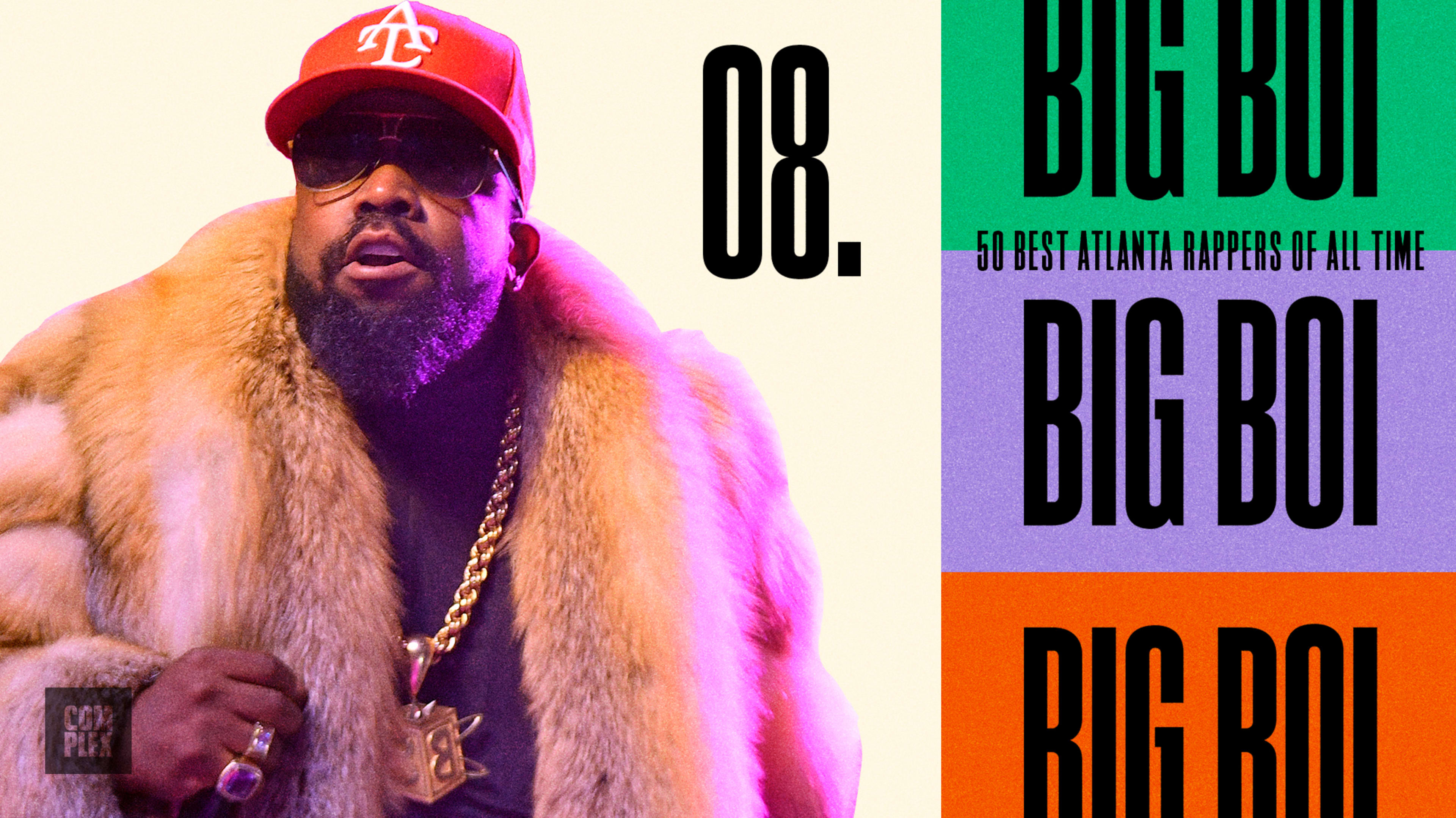
Why They Belong on This List: One of most beloved Atlanta rappers to ever grace the mic; a lyrical legend with a flow and rap style that’s cooler than a polar bear's toenails
Commercial success: Over 20 million records sold as part of Outkast, including 5 top 5 albums and 1 No. 1 on Billboard 200; 19 songs on Billboard Hot 100 with OutKast, including 4 top 10s and 3 No. 1s; 3 songs on Billboard Hot 100 as solo artist; 3 albums on Billboard 200 chart as solo artist, including 1 top 5
Important Songs: “Two Dope Boyz in a Cadillac” as part of Outkast; “West Savannah”; “The Way You Move” with Sleepy Brown
Two things can be true at once: 1) André 3000 is a generational talent—a rapping and crooning eccentric who keeps that thang (a flute) on him. 2) OutKast doesn’t become OUTKAST without the genius of Antwan damn Patton. The Aquemini duo struck a perfect balance through its envelope-pushing ’90s and 2000s reign, but Big Boi’s impact in rap’s top twosome and beyond cannot be understated. Very few have put on for their city like this ATLien, who embodied his East Point stomping grounds in his style, slang, and twang. He brought a signature brand of street whimsy and Southern-fried flavor to the ’Kast canon, quickly becoming known for colorful analogies, tales from the hood (“Da Art of Storytellin’, Pt. 1”), and smooth-as-hell rug cutters (“I Like the Way You Move”). Don’t confuse Daddy Fat Sax for OutKast’s musical straight man. He kicked convention to the curb, too. Go back and listen to Speakerboxxx’s “GhettoMusick,” an electro-funk outlier on which Big Boi nimbly navigates a techno instrumental punctuated by a soulful Patti LaBelle sample break. With its 13-time platinum RIAA certification, that album (along with André’s The Love Below counterpart) is hip-hop’s best seller. Of all time.
As new OutKast releases became increasingly rare, Big Boi continued charting his own course. Sir Lucious Left Foot: The Son of Chico Dusty (2010) was beloved by critics and fans alike for the way it emphasized wordplay while advancing his sound. Occasional side quests aside (see: 2015’s Big Grams with Phantogram), he’s remained a gem-dropping elder statesman forever capable of outshining anyone with whom he shares a track. Big Boi is a lyrical legend and an innovator of flows. Simply put, he’s the truth.—John Kennedy
7. Ludacris
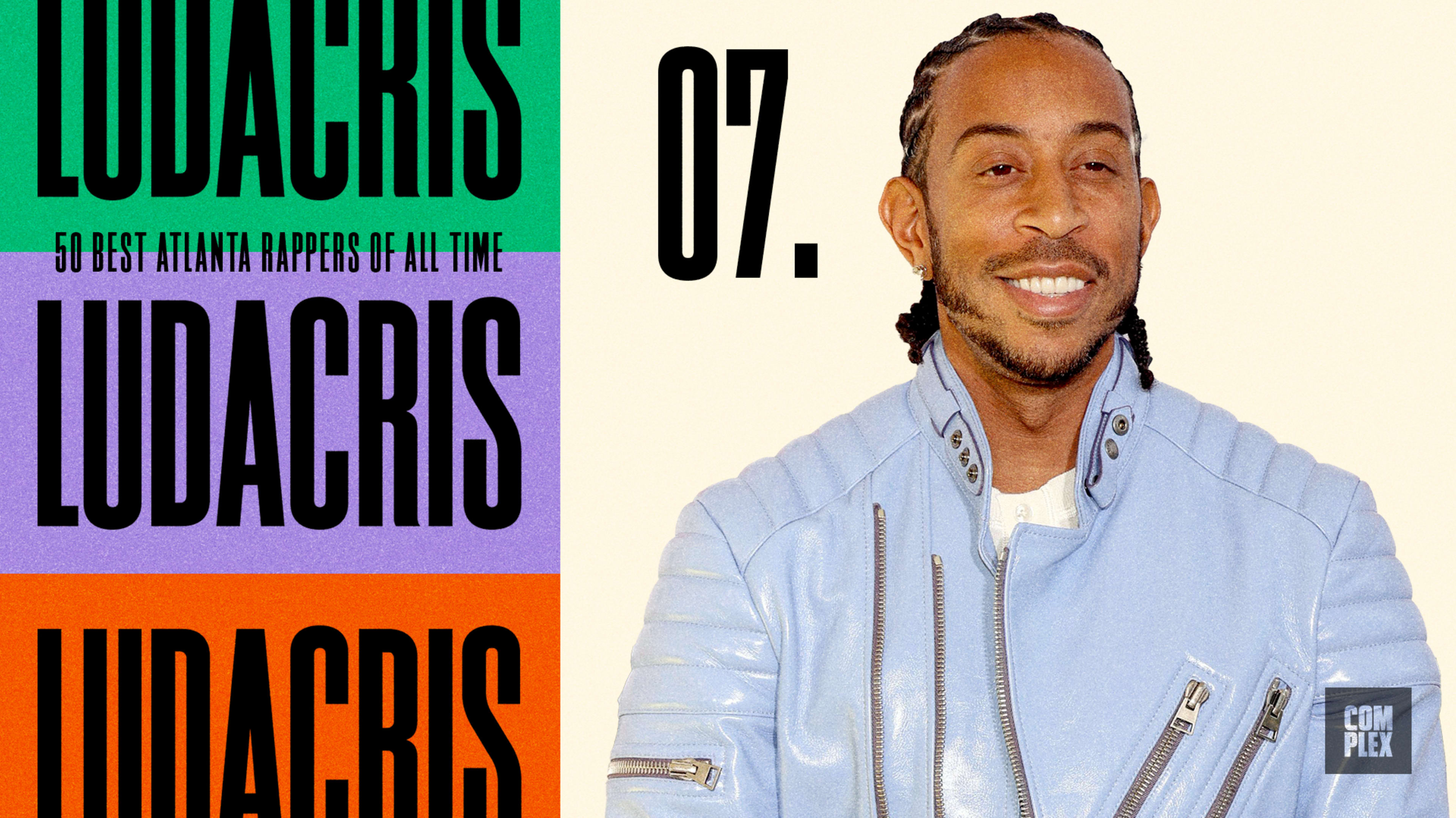
Why They Belong on This List: One of the biggest hitmakers of the 2000s, and lyrically as sharp as any rapper
Commercial success: 56 songs on Billboard Hot 100 chart, including 18 top 10s and 5 No. 1s; 11 albums on Billboard 200 chart, including 8 top 10s and 4 No. 1s
Important Songs: “Southern Hospitality”; “Move Bitch” featuring Mystikal & I-20; “Stand Up”
Fun fact, Ludacris can rap rap. He is an elite Southern MC who once beat T.I. in a rap beef using one disrespectful line: ”...please stay off the T.I.P. of my dick.” However, despite his world-class flow, wordplay, and punchlines, Ludacris is one of hip-hop’s more underappreciated artists. His underrated status would seem unlikely, considering he was also highly successful—arguably the most successful Southern rapper of his time, having sold more than 24 million albums worldwide.
Over the span of his 20-year career, Ludacris helped shape the Atlanta rap scene during the late 1990s and early 2000s. His debut album, Back for the First Time, and its follow-up, Word of Mouf, were critical in bringing Southern hip-hop to a broader audience, helping to establish Atlanta as a major hub for the genre. Besides his uniquely Southern sensibilities, what set him apart from his rap counterparts was his over-the-top creativity, whether presented in the delivery of his bars; the way he switched up his flows and enunciated his words; or his goofy music videos.
At his prime, he was one of the most charismatic rappers in hip-hop, blending a joyful, lighthearted presence with a serious commitment to rapping that was unparalleled in the early 2000s, when gangsta rap dominated and most rappers were dead serious. Even the toughest rappers could use some levity, though; Luda was an elite feature artist, gathering more than 50 placements and killing almost all of them. How many rappers can say they bodied Nas and Jadakiss on the same song? —Kyesha Jennings
6. Young Thug
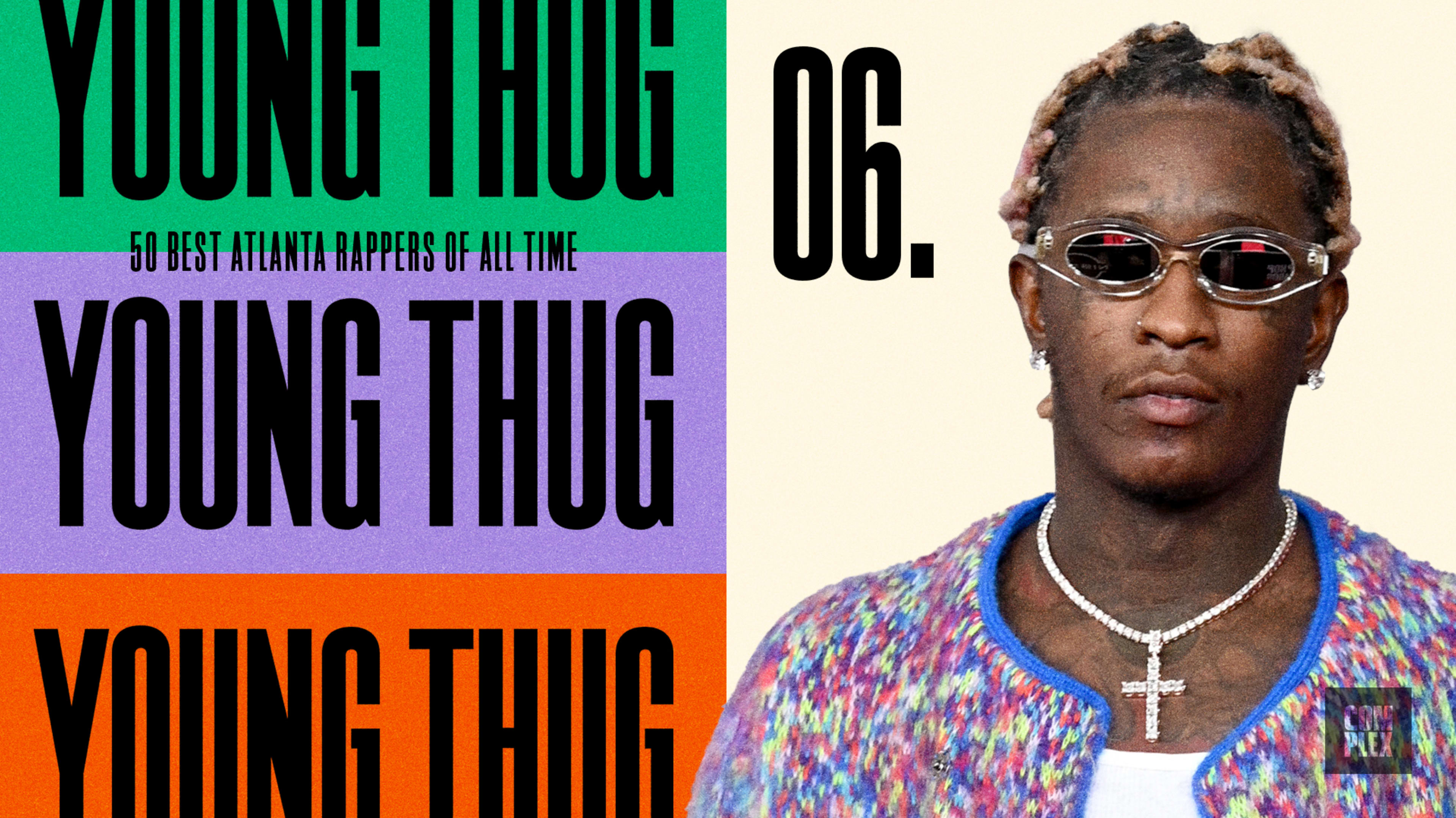
Why They Belong on This List: One of the biggest and most unique hip-hop figures to ever come out of the city; hugely influential to rap and pop music
Commercial success: 93 songs on the Billboard Hot 100 chart, including three No. 1s; 12 albums on Billboard 200 chart, including 8 top 10s and 3 No. 1s
Important Songs: "Danny Glover”; "Givenchy" with Birdman; “Lifestyle"
If Jay-Z and Eminem carved their legacy from dexterity, then Young Thug whittled his own from vocality. From the moment he broke into the mainstream with "Danny Glover," Thugger's inhumanly flexible vocal chords became the most singular instrument in all of hip-hop—a vessel for careening flurries of twitchy yelps and extraterrestrial melodies agile enough to shift between mournful and celebratory in an instant. With mixtapes like Slime Season 1-3, Jeffery, and Beautiful Thugger Girls, he served up everything from propulsive hustler anthems ("Digits," "Check") to tender love songs ("Feel It"), shifting between intentions and tones with virtuosity.
His output is as prolific as his eccentric dynamism. Dating back to the early 2010s, Thugger's unloaded over two dozen projects—and that's not counting unauthorized leaks. Like his mentor Gucci Mane, his rapid and random release tactics have influenced so many artists that it’s now difficult to distinguish this approach from the status quo. Unfortunately, Thugger’s Gucci similarities don’t end there. Dating back several years, Young Thug has had multiple issues with law enforcement, with his latest being a RICO case that’s kept him behind bars for over two years. Without the ability to record new music, the 33-year-old hasn’t been able to generate new momentum for his own career. And yet, no matter the outcome of the case, his legacy—and his stylistic footprint—will endure.
His quirky brand of wandering, melodic raps is a default mold for modern stylists. He's essentially what you think of when you imagine an emerging rap star, with a generation of artists mimicking his expressive squealing and jumpy cadences. But no one, not even his disciples Lil Baby and Gunna, have matched his idiosyncratic gifts—a rarefied constellation of experimentation, aesthetic, and unblemished instinct.—Peter A. Berry
5. Jeezy

Why They Belong on This List: Helped define modern trap music; had one of the greatest individual rap years of all time in 2005
Commercial success: 25 songs on Billboard Hot 100 chart, including 3 top 10s and 1 No. 1; 14 albums on Billboard 200 chart, including 11 top 10s and 3 No. 1s
Important Songs: “Trap or Die” with Bun B; “Put On” with Kanye West; “Seen It All” with Jay-Z
There are very few rappers who had the impact that Young Jeezy did in the mid-2000s. Unfiltered, rugged, and raw, Jeezy is a legend by any metric. Given all he’s accomplished, even that label feels like an understatement.
After toiling under his previous moniker, Lil’ J, Jeezy secured major-label backing and embarked on one of the most remarkable runs in hip-hop history, helping put a darker side of trap music on the map. During a six-month span in 2005, Jeezy released Trap or Die—the second-best Gangsta Grillz tape of all time, according to DJ Drama—and Let’s Get It: Thug Motivation 101, a perfect gangsta rap album featuring some of the most explicit rhymes about selling cocaine ever put on wax. The album was also a hit, a multi-platinum-selling effort that debuted at No. 2 on the Billboard 200 chart. The ripple effects extended beyond the charts, with his Snowman T-shirts becoming so popular among kids that school boards started banning them.
In retrospect, it’s remarkable that drug-dealing music this brooding and detailed dominated the mainstream. While songs like “Soul Survivor,” “Put On,” and his collaboration with Usher on “Love In This Club” were genuine Billboard hits, it was the harder-edged tracks like “Trap or Die” and “Go Crazy” that cemented his legendary status in Atlanta clubs. Despite the peak of his career being marred by chaos—including indictments of close BMF associates, real-life shootouts, conflicts with rival rappers, and one epic outburst against a legendary Queensbridge MC—Jeezy effectively straddled the line between being in the streets and being a pop star.So much so that Jeezy, the gangsta rapper with very real street ties, somehow created the defining song of Barack Obama’s 2008 election, “My President,” with the late Congressman John Lewis appearing in the video holding a “My President is Black” sign.—Kemet High
4. Gucci Mane
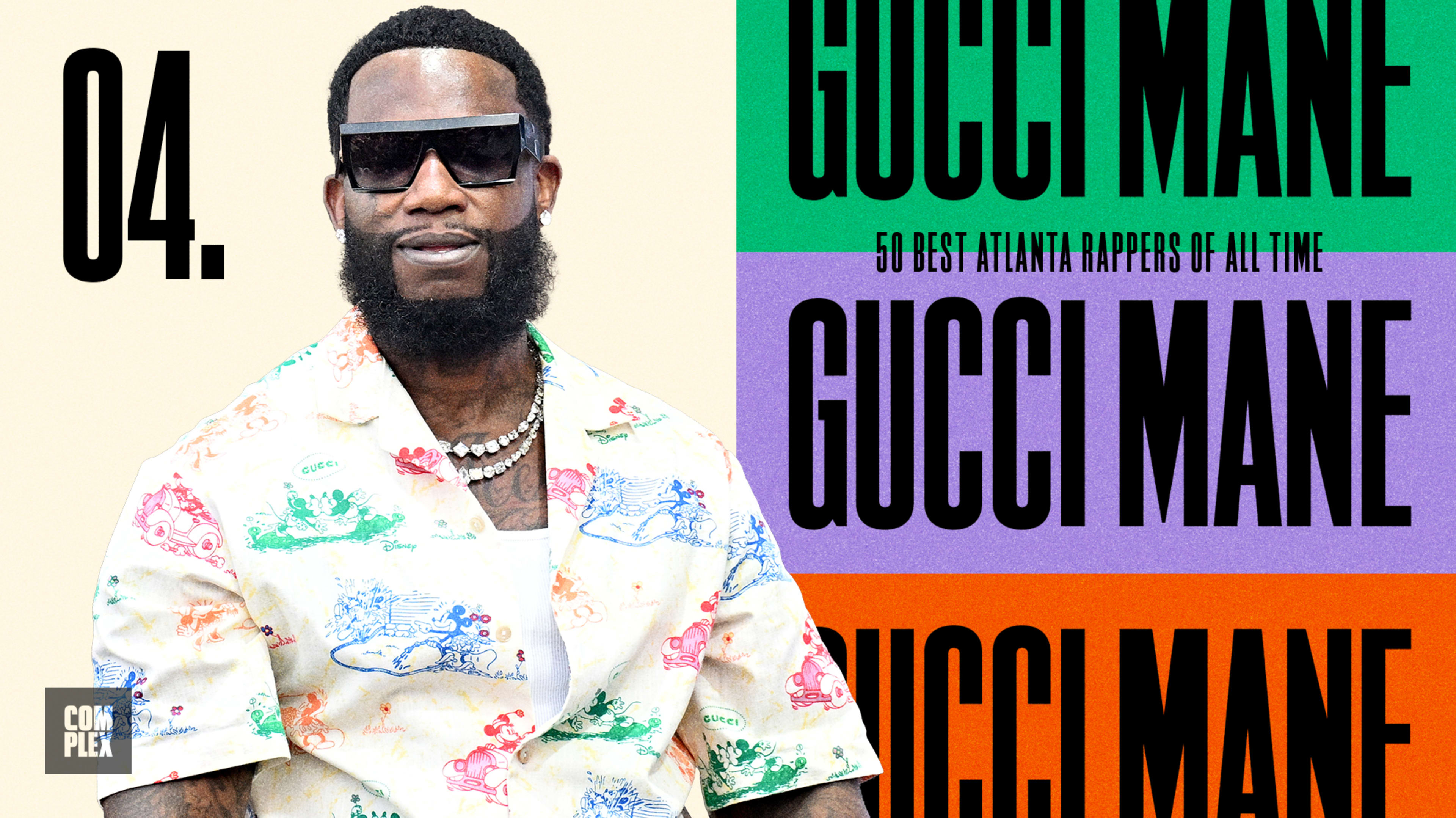
Why They Belong on This List: Largely dictated the sound and direction of Atlanta hip-hop, while putting on more than a dozen of its most influential figures
Commercial success: 36 Hot 100 Billboard hits, including one that went No. 1; 29 projects on Billboard 200 chart, including 7 top 10s
Important Songs: “Lemonade”; “Swing My Door”; “First Day Out”
Gucci Mane is an architect of modern-day trap music. Always talented with words, he's a figure so slippery, dynamic, and at times unhinged that he was almost impossible to commodify to his full potential. Nobody gave trap music its true aura like Gucci, whose music, myth-making, court battles, and unending struggle to escape the very world that shaped him remain a continuing saga for East Atlanta's most prodigal son.
Even in his early albums, you can hear the future. Since the Big Cat Record days in the mid-2000s, Gucci has been working with Zaytoven, creating one of the greatest rapper- producer duos of all time. Together, they developed the trademarks of trap music. Listen to the classic "Pillz,” off of Hard to Kill: the throbbing bass, squeaky hi-hats, and a call-and-response that energizes listeners. It’s a song that sounds like it could be released today.
Of course, if you know Gucci's story, you’re aware of the pitfalls: the rap beef that turned deadly and the various legal troubles. There were long hiatuses where Gucci would be gone, including a three-year stretch in the early to mid-2010s. Despite this, he remained one of the game’s most prolific rappers and a razor-sharp A&R. Wop has helped discover more great rappers than perhaps any other artist in history. His East Atlanta studio, the Brick Factory, was almost like a boot camp for the city’s stars. Young Thug, Migos, Waka Flocka Flame, and Future all sharpened their pens there before achieving major-label success, carrying the baton for Southern hip-hop while Gucci figured his problems out.
After serving three years in prison for federal drug and gun charges, he was released from prison in 2016. This was a new Gucci. No, not a clone, but a clean-cut, in-shape, family man releasing the most commercially digestible music of his career.
I guess the wider rap world finally caught up. —Clarissa Brooks
3. T.I.
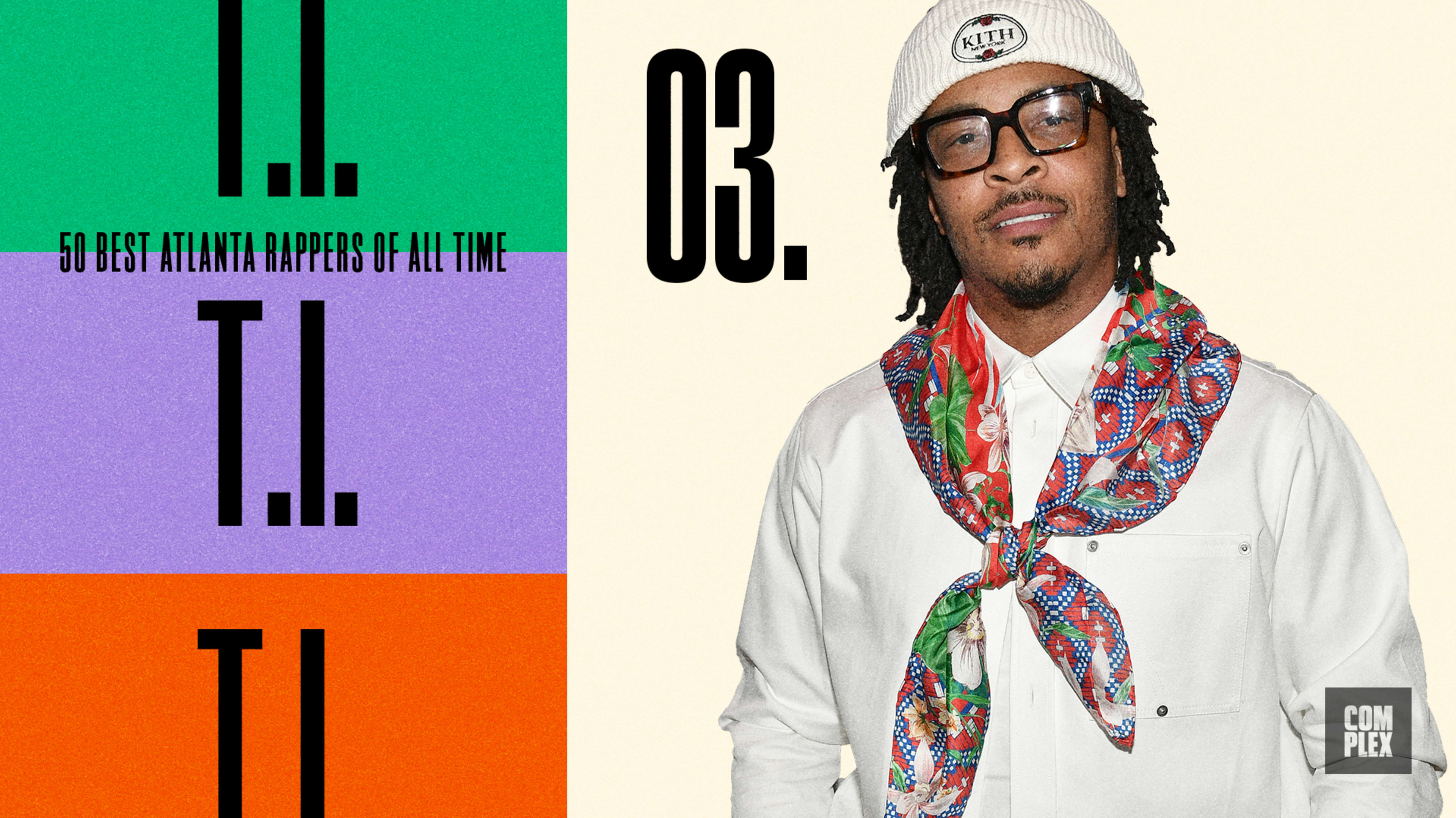
Why They Belong on This List: Helped put trap music on the charts, while being one the best lyrical rappers to ever come from the A
Commercial success: 57 songs on Billboard Hot 100 chart, including 11 top 10s and 4 No. 1s; 10 albums on Billboard 200 chart, including 9 top 10s and 3 No. 1s; collectively, his albums have sold more than 10 million copies
Important Songs: “What You Know,” “Rubber Band Man,” “Whatever You Like”
During a time when no one had even thought of calling themselves the King of the South, T.I. made a compelling case for the throne. He didn't invent the genre, but nobody called this shit “trap music” until T.I. dropped Trap Muzik.
Like the most thoughtful street rappers, T.I. litters his songs with broken glass, crack smoke, and the moral catch-22s that plague a hustler with a conscience. But like a dutiful Atlanta party-starter, he knows when to let loose and celebrate the hard-earned glory of a trap star. His apex was 2006, when his King LP entered the Billboard 200 albums chart at No. 1 after selling over 500,000 copies in its first week. That same week, his starring turn in the film Atlanta debuted at No. 3 at the box office. Later that year, “What You Know,” peaked at No. 3 on the Billboard Hot 100 chart, giving him his highest-charting solo single to date. Then he landed his first No. 1 with a stellar guest spot on Justin Timberlake’s “My Love.” Collectively, the accomplishments were as much a statement of fact as they were a coronation, proof that Pharrell wasn’t smoking dust when he said T.I. would be like the Jay-Z of the South. Like Hov, T.I. hovered between reality and imagination—and, at multiple points, serious issues with the law.
Following an October 2007 arrest on multiple firearms charges, T.I.’s career hung in the balance as he faced up to 10 years in prison. Tip responded with another smash, Paper Trail, which became his third consecutive album to debut atop the Billboard 200.
By that point, Tip’s dominance had unfolded on multiple fronts. At a point where his veritable street ties almost earned him a lengthy prison sentence, he responded with the biggest songs he’d ever released—“Whatever You Like” and the Rihanna-assisted “Live Ya Life.” He was, indeed, an urban legend, but his feats completely collapsed the distance between commercial tangibility and street myth; he made better reality raps than reality rappers and more bangers than the biggest hitmakers. In short, you can’t have an Atlanta Mount Rushmore without Tip’s face etched in stone.—Peter A. Berry
2. Future
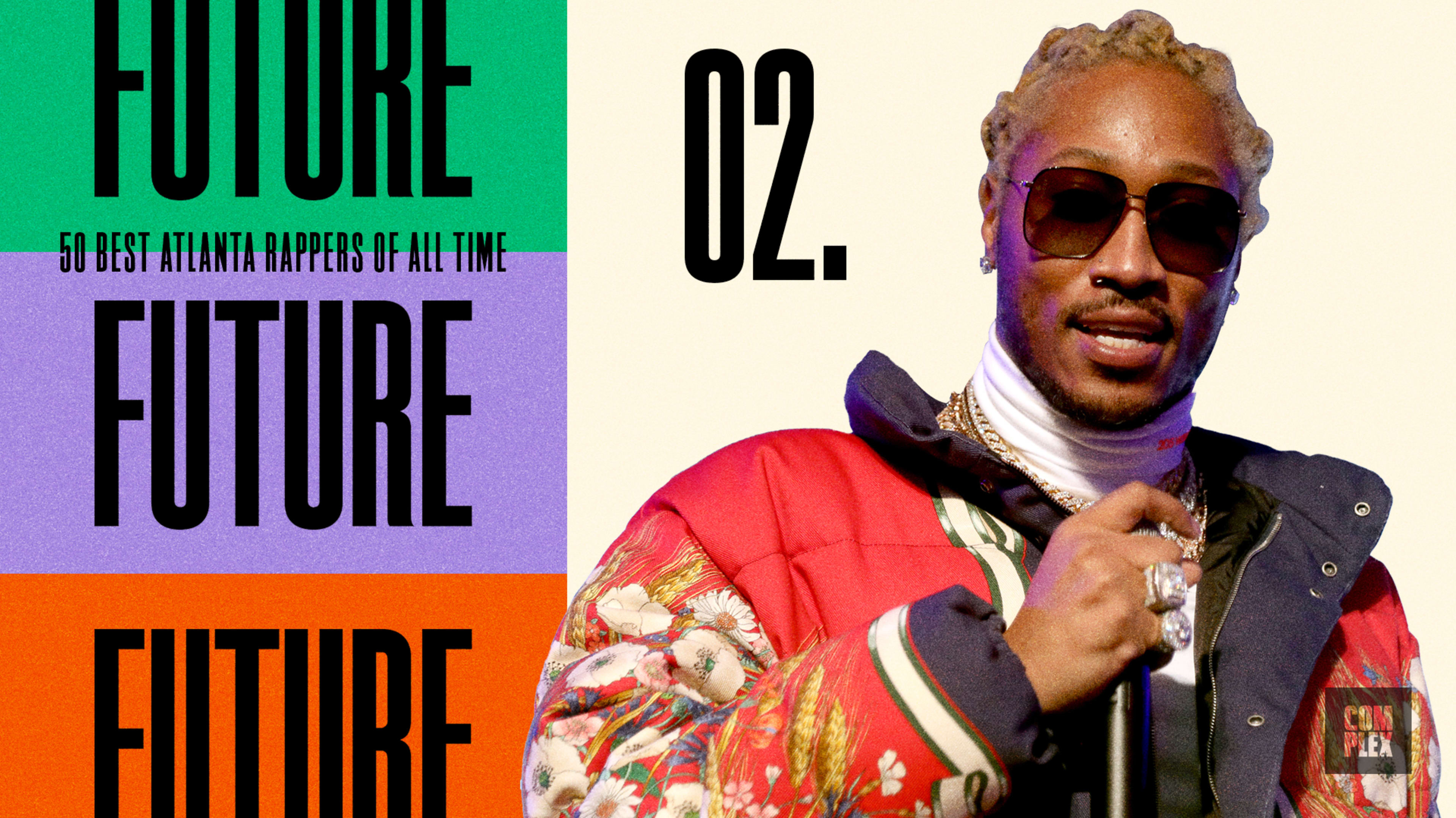
Why They Belong on This List: A prolific commercial and creative powerhouse for more than a decade; one of the architects of the trap-music sound that has dominated contemporary hip-hop
Commercial success: 200 songs on Billboard Hot 100 chart, including 15 top 10s and 3 No. 1s; has had seven straight number one albums; the first artist ever to have two different albums go No. 1 in back-to-back weeks
Important Songs: “March Madness”; "Mask Off"; “Like That” with Metro Boomin & Kendrick Lamar
If you’re confused by Future’s dominance and wonder how he can be one of the most popular, compelling, innovative, and prolific rappers working within the major-label system for over a decade, remember one simple fact: He has blood ties to the Dungeon Family.
Future is the cousin of the late great Rico Wade, the leader of Organized Noize, which means there’s something instinctual—maybe even supernatural—at work here. Future is second-generation DF, and he embodies most of the ethos of the collective—the grime mixed with the blues; the internal conflict within man between introspection and wanting to turn up. (Admittedly, it seems like the socially conscious gene is regressive.)
He was also a late bloomer. Before he was getting mocked on East Coast-based blogs for songs like “Racks” or the “Tony Montana” remix with Drake, he was Meathead from Da Connect, a group who had their only album scrapped. He floundered for nearly a decade, before linking with another ATL legend, Rocko, who signed him to his A-1 label, and he started stringing off a list of hits. It’s been an upwards trajectory ever since.
Well, not always.
Future gave prophecy on Pluto, but fans lamed out with Honest. His sophomore album, which was supposed to be one of the biggest projects of 2014, underperformed and, just like that, Future was on the ropes. Future became the force he did largely because we saw how he handled adversity. Considering their range of styles, music quality, and impact, Future’s run of Monster, Beast Mode, 56 Nights, DS2, and the Drake collaboration What a Time to Be Alive might be the greatest artistic achievement by a rapper since Lil Wayne in 2006. It’s an astonishing stretch where Future explores every feeling on the Discrete Emotions chart. DS2—half-angry, half-happy Future—is a commercial blockbuster. But 56 Nights—disgusted, scared, and sad Future—is his creative peak. It’s a tape almost exclusively about addiction and isolation, a piece of work so lyrically dark and bracing it might even fuck Scarface's head up.
Since this is a list about rappers, now is the time to stress that Future isn’t just a successful rapper, he’s a great one. No rapper is better at wrestling with their range of emotions, from icy apathy (“Fuck a bitch every single damn night/Ain't nothin' but an avatar”) to just plain heartbroken (“You wasn’t considerate to how I was feeling/How I’m supposed to explain this to my children?”)
Because, what good are lyrics if you don’t feel anything?—Dimas Sanfiorenzo
1. André 3000
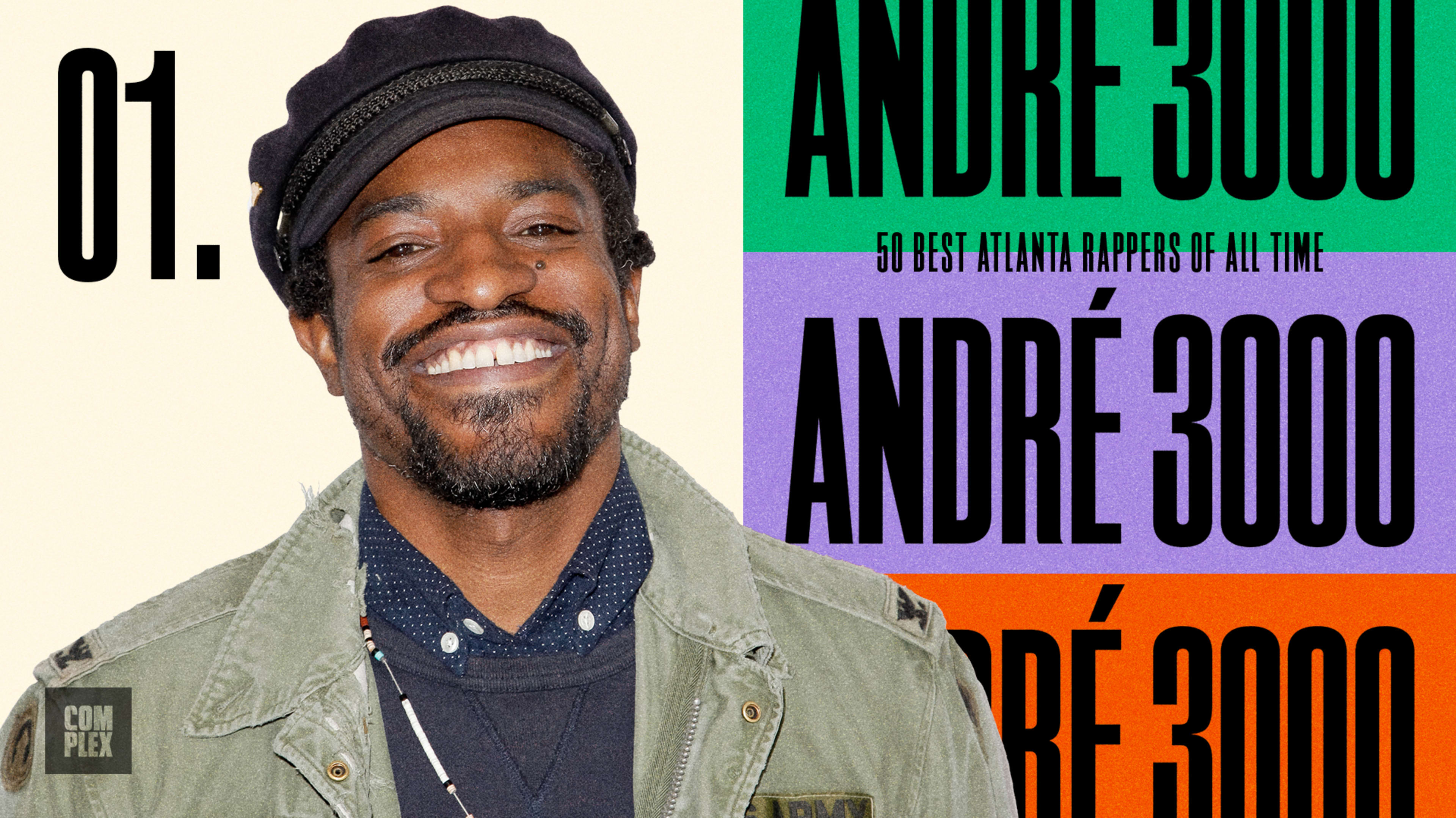
Why They Belong on This List: One-half of the greatest rap duo of all-time; will go down in history as the greatest rapper to never drop a solo rap album
Commercial success: Over 20 million records sold as part of OutKast, including 5 top 5 albums and 1 No. 1 on Billboard 200; 19 songs on Billboard Hot 100 with OutKast, including 4 top 10s and 3 No. 1s;; 7 songs on Billboard Hot 100 as solo artist
Important Songs: “B.O.B. (Bombs Over Baghdad)”; “Da Art of Storytellin’ (Part 1)”; “Int'l Players Anthem (I Choose You)” with UGK
On his 49th birthday, André 3000 stood on stage in Atlanta’s Piedmont Park, surrounded by some 50,000 folks. It was the free, annual Atlanta Jazz Festival, and bodies seemingly covered every blade of grass in the city’s most storied greenspace to watch ATL’s greatest MC play a flute for over an hour. Three Stacks was the festival’s next-to-last act, but—looking at the crowds swelling up around the platform where his bandmates performed—you’d be forgiven for thinking he was the headliner. Not bad for a guy who hasn’t been part of a proper rap release for nearly 20 years.
It’s moments like this that show it doesn’t matter where André goes creatively, the listeners will follow. From 1994 to 2000, OutKast released a new album every two years, each effort building upon the world that came before it. With each project in this period, André narrated those worlds, bending them with his words and voice. Lyrically, he leaned into his candor, openness, and willingness to try everything from singing to squawking.
On Southernplayalisticadillacmuzik, he’s the bad-boy teenager with a conscience who “never smelled aroma of diploma” on “Git Up, Git Out.” On ATLiens, he's entering his 20s, but he’s already dealing with mature subjects such as relationships and aging. Then there was the everyman gospel, “Elevators (Me & You)” where he reminded us all that he’s “got more fans than the average man, but not enough loot to last me to the end of the week.”
With Aquemini and Stankonia, he continued to grow in confidence and authority, wowing us in the process. Along with his partner Big Boi and producer Mr. DJ, he continued carving out his own production legacy as Earthtone III. The trio’s sound leveraged lessons taught to them by Organized Noize, such as incorporating live instrumentation, but played off the duo’s lyrical skills and penchant for sonically pushing themselves past hip-hop norms.
As a rapper, André made us look at each other in “aw shit” disbelief when he dropped gems like, “Hope I'm not over your head, but if so you will catch on later” on “Da Art of Storytellin’ (Pt. 2).” He brought us tragic characters like Sasha Thumper. He had us all say sorry to the “Ms. Jackson” in our lives. He did it wearing platinum wigs and marching-band outfits while launching his own prep-inspired line, Benjamin Bixby.
Everything culminated with 2003’s double album, Speakerboxxx/The Love Below, the only record from a rap group to win Album of the Year at the Grammys. It’s also on The Love Below where André does more singing, amateurish guitar-picking, and piano-playing than rapping. Even then, he closes out his then most experimental project with five-minutes-plus of autobiographical bars on “A Life in the Day of Benjamin André (Incomplete).”
Even after the peak OutKast years, the lore behind the man only increased. André sporadically popped up on other artists’ records, indiscriminately connecting with musicians he genuinely seemed to admire as a fan. Of course he showed up on classics from fellow ATLiens, like Jeezy (“I Do”) and DJ Unk (“Walk It Out Remix”). But how about rocking with underground legends Devin the Dude and Tech N9ne? Check. Nabbing platinum plaques with Beyoncé, John Legend, and Lloyd? Done. Frank Ocean, James Blake, Gwen Stefani, Kesha, Capital Cities? Sure. Drop one of the toughest verses on “Scientists & Engineers” from Killer Mike’s Grammy-winning album Michael? You get the point.
Though during this time he’s shied away from making a rap album of his own, André’s always flirting with the idea. Hence why his flute album New Blue Sun comes with the disclaimer: “WARNING: NO BARS.” And maybe it’s our fault for gripping too tightly to that one idea of him. In an industry where social media makes stars feel closer than they appear, through some act of sorcery, André maintains the mystique and reclusiveness only found in musical mad geniuses of yore.—Gavin Godfrey